Swords
Discover everything you need to know about our swords, from steel types and maintenance to tips on choosing the perfect sword for your needs.
Here you will find clear and detailed answers to the most common questions, resolving your doubts about authenticity, care, sharpening and more.
Whether you are a collector or a hobbyist, this section is designed to guide you through the purchase and maintenance of your sword, ensuring that your experience is flawless from the start.
When we talk about blunt in the context of bladed weapons, such as knives and swords, we refer to a blunt tip. This characteristic means that the sword's blade lacks a sharp edge at its tip, ending in a rounded shape instead of a sharp point. Swords with blunt tips are crucial in various contexts where safety is a priority, without sacrificing the aesthetics or functionality of the weapon.
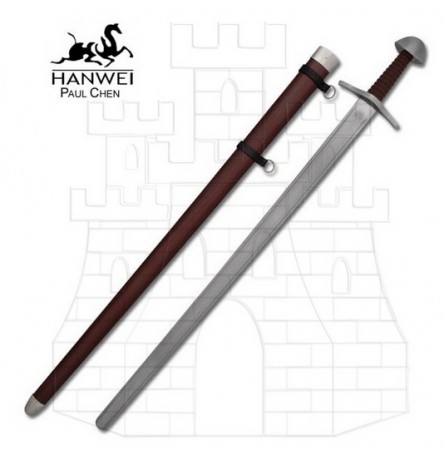
These swords are usually made from high-quality steel, and their tip is designed to be rounded or flattened, making them safe for activities such as fencing training, theater performances, or historical reenactments. The use of blunt tips significantly reduces the risk of injury, which is essential for beginners and those who are still perfecting their combat techniques.
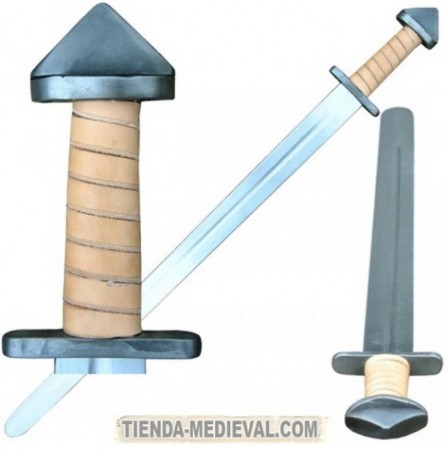
Furthermore, many swords with blunt tips may incorporate additional safety elements, such as a rubber stop or soft materials, providing extra protection. In the realm of theater and historical reenactments, these swords allow actors and reenactors to represent combat scenes without the inherent danger of wielding a sharp sword, protecting both the performers and the audience.
From a legal standpoint, it is important to mention that, in various countries, the sale and use of bladed weapons is regulated. Swords with blunt tips are an excellent option for complying with these regulations, as they offer a safe way to enjoy fencing and martial arts while being preserved in a safe and respectful context towards local legislation.
In our online store, we offer a varied selection of functional swords designed specifically with blunt tips. We invite you to explore our Functional Swords Category B, where you will discover products particularly suitable for training, theater, or historical recreation. We strive to ensure that each sword is of the highest quality and safety, guaranteeing that you acquire a product that is not only visually appealing but also safe to handle in any situation.
The tang, also known as the spine, is an essential component in the construction and performance of a sword. This critical element extends from the blade into the handle, playing a fundamental role in securing the blade to the handle and providing more than just support; it adds stability, balance, and strength to the sword. Often referred to as the weapon's "skeleton," the tang is where the forces applied during use converge, contributing to its effectiveness in combat.
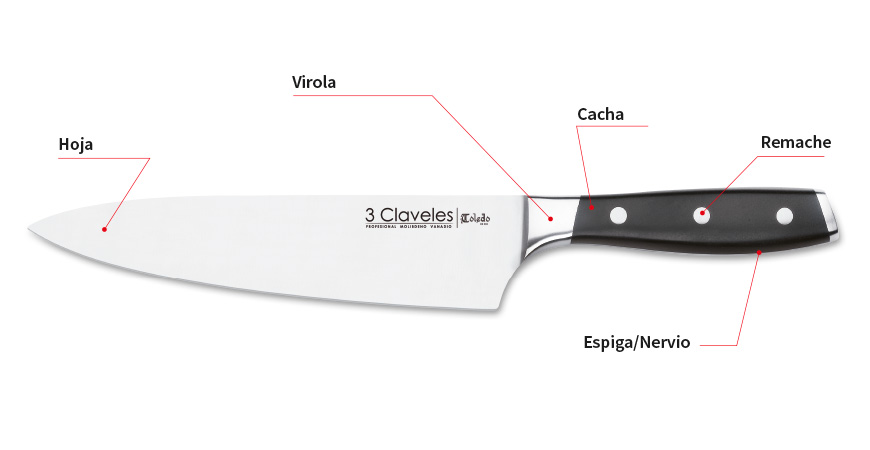
Compared to other types of cutlery, the tang in swords tends to be longer, spanning almost the entire handle. This additional length not only ensures greater control and balance but also allows the user to handle the sword with superior precision and effectiveness. The shape and size of the tang can vary depending on the specific design and purpose of the weapon. For instance, some tangs are square or rectangular to optimize grip, while others take on a more streamlined design that reduces weight without sacrificing strength.
The connection between the tang and the handle is crucial for the durability of the sword. This bond is often achieved through fastening techniques such as welding or riveting, which ensure that the blade is firmly held during use. Additionally, the pommel located at the bottom of the handle not only protects the tang from potential damage but also contributes to the aesthetic of the weapon, being a distinctive element in many sword designs.
The quality of the tang is fundamental; a poor design or a bad manufacturing process can compromise both the maneuverability and functionality of the sword. Investing in swords that have high-quality tangs, as well as performing good maintenance, can not only enhance performance in combats or displays but also preserve the integrity of the weapon over time.
Therefore, the tang or spine of a sword is a crucial factor that ensures a solid connection between the blade and the handle, facilitating balance and stability. This has a significant impact on the user's effectiveness, becoming an aspect that every fencing enthusiast or white weapon collector should consider when selecting a sword. The correct choice of this component can make the difference between a satisfying and a frustrating use experience.
The term false edge refers to the edge that is located on the opposite side of the main edge of a blade weapon, such as a knife or sword. This complementary edge, located near the tip of the blade, plays a crucial role in the tool's effectiveness when cutting, as it allows for finer and more precise cuts. Additionally, its design can influence the overall performance of the weapon, making it more versatile in its practical and technical use.
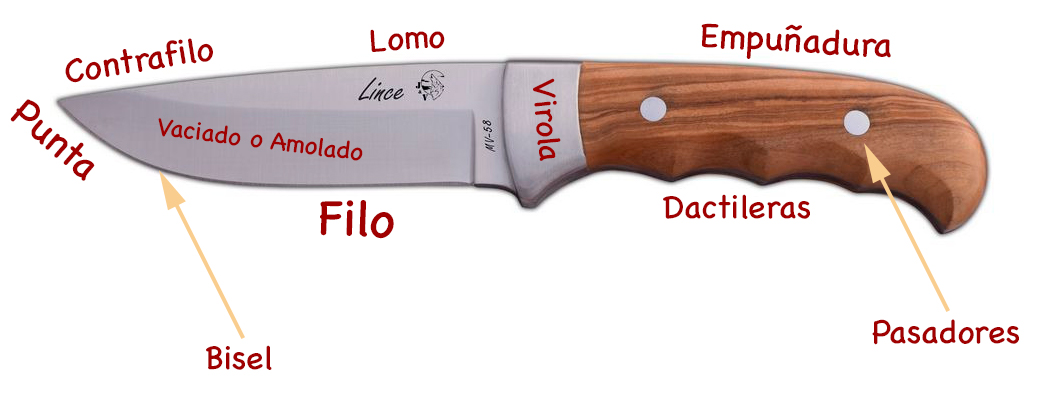
In the context of swords, the false edge is not as common, as most are doubled-edged weapons. However, its presence can be found in certain models designed specifically for combat, where every detail of the blade is considered essential. For example, in medieval swords or Japanese katanas, the false edge can be used in various ways, such as to deflect an attack and make cuts at different angles, thus providing a tactical advantage in close combat situations.
Interestingly, in some swords, the false edge can even be sharper than the main edge, making it a tool not only for finer cuts but also a potentially dangerous element in untrained hands. Therefore, effective handling of a false edge requires specialized skills and training, as improper use can result in injuries to both the wielder and others. Thus, it is essential that those wishing to incorporate such a blade style into their repertoire of bladed weapons seek proper guidance and training in appropriate combat techniques.
When considering the acquisition of a weapon that includes a false edge, buyers should also pay attention to the legal regulations governing the possession and use of bladed weapons in their country or region. This ensures not only their safety but also compliance with the law, promoting responsible and conscious use of these historical and functional tools.
The sheath or scabbard for a sword is an essential accessory for sword owners, as it serves as a protective layer that allows for the safe storage and transport of the weapon. Regardless of whether it is an antique sword, a period recreation, or a collector's piece, having the right scabbard is crucial to ensure its integrity and longevity.
There are various considerations when choosing a sword sheath or scabbard. These can vary in shapes, materials, and designs, and the correct selection must take into account not only the type of sword in question but also the personal needs and preferences of the user. The most common materials for making sheaths include:
- Wood: Usually offers exceptional durability and a classic design. Wooden sheaths are elegant and can be carved with intricate details.
- Leather: This material is popular for its flexibility and aesthetics. Additionally, leather can provide a non-slip effect on the sword handle.
- Metal: They offer great protection against impacts but can increase weight and may require special care to avoid corrosion.
- Plastic: Generally lightweight and economical, although they may not provide the same durability as other materials. Ideal for recreational or temporary use.
The design of the sheaths is also diverse, ranging from simple and functional options to decorative models that may include artistic details, engravings, or inlays. Some sheaths are equipped with closures and straps that secure the sword inside, preventing any accidents or damage.
When selecting a sheath or scabbard, it is important to consider the intended use of the sword. If it is a display item, aesthetic features may be prioritized. On the other hand, for activities like martial arts practice or historical recreation, durability and ease of transport will be key aspects.
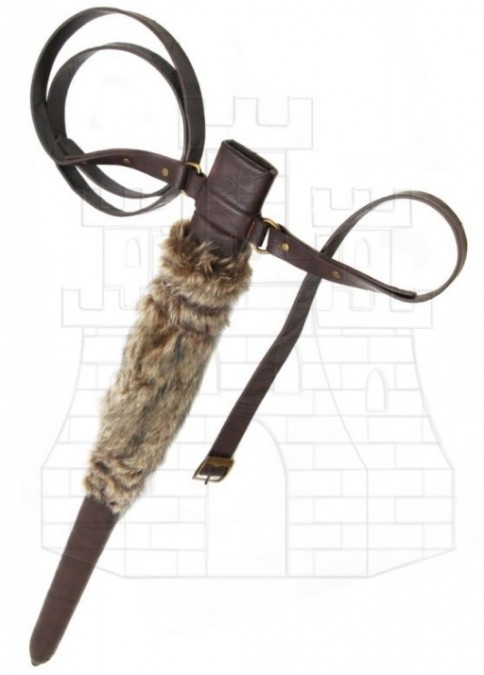
Choosing the right sheath is not just a matter of protection, but it can also reflect the personality and aesthetics of the bearer. Additionally, regular maintenance, such as cleaning and caring for the materials, is vital to prolong the lifespan of both the sword and the scabbard. Be sure to follow the manufacturer's recommendations for the specific care of each material.
The blade edge of the sword is one of the most essential and determining characteristics of this type of weapon, as its cutting edge plays a crucial role in its effectiveness in combat. This edge is designed not only for cutting; it is also fundamental in the use of various disarmament and defense techniques, which can make a difference in high-pressure situations. The geometry and design of the edge can vary considerably depending on the type of sword, whether it is a katana, a foil, or a longsword, making each model have a distinctive purpose and be optimized for different fighting styles.
It is important to note that the edge is not restricted to swords; other blades, such as knives, daggers, axes, and machetes, also possess an edge whose configuration determines their capacity and effectiveness. Characteristics such as the shape, thickness, and angle of the edge directly influence the cutting ability and, therefore, the performance of the weapon. Understanding these variables is crucial for selecting the right tool for each activity, thus ensuring optimal performance in practical or training situations.

The sharpening process of the edge can be carried out using various techniques, ranging from manual methods to the use of specialized tools, such as sharpening stones or electric machines. Keeping a well-sharpened edge is critical not only in combat situations but also during training activities that require precision and speed. Proper maintenance of the edge not only improves the weapon's performance but also increases safety when handling it, minimizing the risk of accidents.
In addition to its functionality, the blade edge can have aesthetic and symbolic connotations. Many swords feature decorative designs on their edge, which not only enhance their visual appeal but may also reflect the cultural heritage or history of the owner. This aspect turns the sword into an object of art, highlighting the craftsmanship of the blacksmith and the cultural significance it represents.
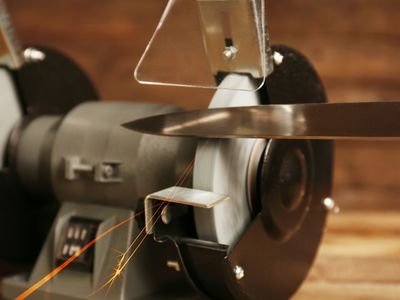
Taking care of the edge is vital to ensuring its longevity and effectiveness. It is recommended to clean and lubricate it regularly with suitable products, which helps prevent oxidation and corrosion. It is also essential to protect the edge from impacts and falls, as any damage could compromise its performance and user safety. This is especially relevant for collectors and weapon enthusiasts, who must pay attention to the storage and display conditions of their possessions. Additionally, it is crucial to respect the applicable legal regulations concerning the possession and use of blades, which may vary by jurisdiction and can include requirements for registration, storage, and transportation, which is essential to ensure responsible and safe ownership.
The monterillas are fundamental components in the structure of a sabre, situated at the top of the handle, just before the guard. These two pieces of metal, also known as guardia or cross, serve a crucial function in protecting the user's hand from injuries caused by the blade of the weapon during combat or training situations. This safety aspect is vital, not only to prevent accidental cuts but also to provide greater control and stability when handling the sabre.
The design and shape of the monterillas can vary considerably, from straight and simple versions to elaborate models that include artistic figures and historical symbols. This variability allows users to customize their weapons according to their tastes and specific needs. In fact, some monterillas are interchangeable, providing the possibility to use the same blade with different monterillas for various purposes, such as combat, display, or practice. The appropriate selection of monterillas should take into account several factors, such as the type of sabre and the user's personal preferences, to achieve an optimal balance between aesthetics and functionality.
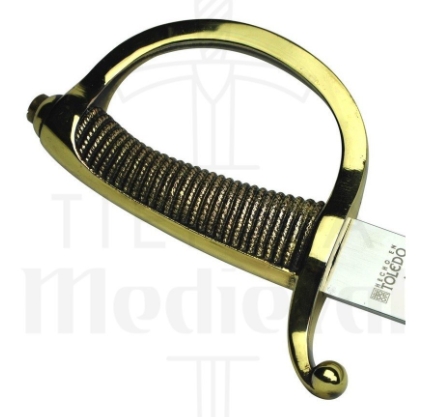
In addition to their protective function, monterillas can also influence the performance of the sabre in combat or training. Well-designed monterillas not only protect but can also enhance the accuracy and balance of the sabre, resulting in more efficient and effective handling by the user. In this sense, the ergonomics and specific design of the monterillas can enrich the overall user experience, allowing them to navigate more effectively in dynamic situations.
From an aesthetic perspective, monterillas also play an important role, as their decoration can reflect the history and culture of the art of fencing or the era in which the sabre was made. Some models feature unique details, such as engravings, mythological figures, or emblems of noble families, adding an element of distinction and character to the weapon. In some cases, monterillas are not only ornamental but can be unscrewed and used as a tool or a close combat weapon, thereby expanding the versatility of the sabre as a multifunctional weapon.
The blade of a cutting weapon is the key component that provides both performance and functionality to a wide range of weapons, including swords, knives, daggers, axes, and machetes. From the guard, designed to protect the user's hand, to the tip, the blade plays a crucial role in combat techniques, enabling various actions such as cutting, striking, or piercing targets. The specific characteristics of the blade, such as its length, width, and shape, vary significantly and are fundamental to its effectiveness in different contexts of use, whether in culinary activities, recreational use, or combat sports.

Regarding manufacturing materials, blades can be found made of various types of steel, each with characteristics that impact both their performance and maintenance. Below are some of the most common types:
- Carbon steel: This type of steel is highly valued for its ability to maintain a sharp edge, making it an excellent choice for applications that require precise cuts. However, proper care is crucial, as it can rust if exposed to corrosive elements.
- Stainless steel: Offers superior resistance to corrosion, making it ideal for those looking for a low-maintenance and highly durable weapon, especially in humid environments or where water exposure is constant.
- Damascus steel: In addition to its strength, this type of steel is famous for its ornamental surface patterns, making it a popular choice among those who value both aesthetics and functionality in their weapons.

In addition to materials, the shape of the blade is a crucial aspect that affects its performance. Some of the most common blade shapes include:
- Straight blades: Especially useful for precise and direct cuts, they are ideal for tasks that demand precision.
- Curved blades: Allow for smoother movement, making them perfect for tasks that require broader and more dynamic cuts.
- Sharp-tipped blades: These are specifically designed for more effective piercing, being very useful in situations that require quick and effective penetration.
The choice of blade shape should be based on the combat technique that is planned to be used, as well as the specific conditions of each confrontation. Furthermore, the personal style and preferences of the user are equally fundamental when selecting a weapon, providing a subjective factor that should not be ignored.
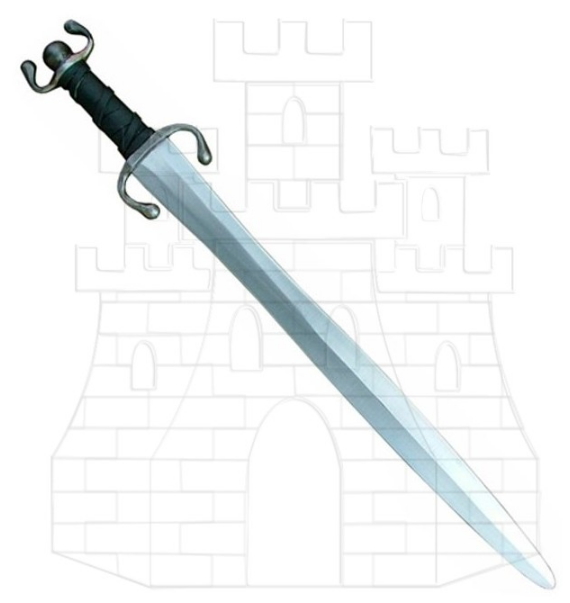
The proper maintenance of the blade is essential to maximize its lifespan and effectiveness. This maintenance includes regular practices of sharpening, cleaning, and the application of protective oils to prevent rusting. Neglecting these aspects can compromise the integrity of the weapon, resulting in ineffective performance, especially in critical situations. Careful maintenance not only prolongs the life of the blade but also enhances its overall performance during use. Additionally, this maintenance helps preserve the aesthetic and functional value of the weapon over time.
Finally, understanding the nature of the blade is fundamental, not only for collectors and enthusiasts of cutting weapons but also for martial artists and combat aficionados. Making informed decisions when selecting a blade involves considering a wide variety of factors ranging from combat techniques and personal preferences to the intended use, ensuring that each user finds the weapon that best suits their specific needs and objectives.
The gavilanes, also known as quillons or cruceros, are essential pieces in the design of swords, located at the top of the guard and extending towards the blade of the weapon. Their main function is to protect the user's hand from possible cuts or slips of the blade during combat, thus providing greater safety and control.

The gavilanes come in a wide variety of designs that can range from simple, straight shapes to more elaborate configurations, adorned with artistic figures and historical symbols that reflect the culture and era of the sword. This decorative aspect not only infuses character into the weapon but can also denote the social status or lineage of the bearer. In addition to their aesthetic value, the gavilanes can also serve additional functions, such as the use of detachable gavilanes that transform the sword into an effective weapon for hand-to-hand combat.
It is important to consider that the choice of gavilanes should be based on the type of sword and the user's needs and preferences. A well-designed gavilan provides not only effective protection but can also enhance aspects such as the accuracy and balance of the sword during use, both in combat and training.
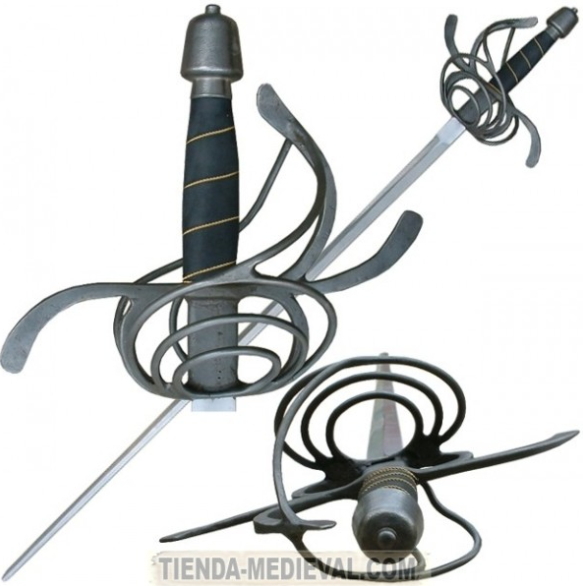
In the trade of swords and weapons in general, it is essential that both manufacturers and sellers are clear about the specifications of the gavilanes and their utility, thus ensuring that the user chooses the option that best fits their requirements. Customization, in terms of design and functionality of the gavilanes, adds an extra level of appeal for enthusiasts and collectors, providing the opportunity to acquire a sword that is both useful and unique.
The groove, also known as blood groove, is a prominent feature found on a sword blade. This channel, which can vary in design, depth, and length, serves both practical and aesthetic functions in the construction and use of the sword, becoming a key element in its functionality.
From a practical standpoint, the groove has several important benefits:
- First of all, it reduces the weight of the blade, making it easier to handle and maneuver the weapon during combat.
- Secondly, by removing some of the material from the blade, it improves the balance of the sword, allowing for more precise control in its use.
- It also plays a crucial role in helping to prevent the blade from sticking to the bone when striking a target, which can be especially beneficial in combat situations.
- Additionally, the groove reduces air resistance, allowing the blade to move more quickly during motion, increasing its effectiveness in attack.
- Finally, this feature allows for blood and other fluids to drain from the blade, improving safety and ease of handling the sword, particularly in situations where these fluids could interfere.
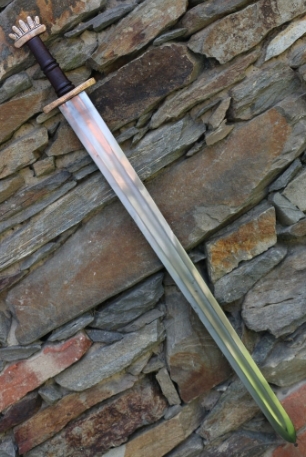
Regarding its aesthetic function, grooves offer significant visual appeal and can vary widely in design. Styles can range from simple and straight grooves to more complex and intricate patterns. These may include:
- Historical symbols, reflecting the cultural heritage and tradition of the specific sword model.
- Geometric patterns that add an artistic touch to the piece, making it visually stunning.
- Artistic figures that may tell stories or represent myths and legends associated with the sword.
Furthermore, grooves can be adorned with luxurious materials such as gold, silver, or even precious stones, enhancing their aesthetic appeal and collector value. When choosing a sword, it is important to consider the type of groove and how it relates to the user’s needs and preferences. A well-designed groove not only enhances the functionality of the sword but also highlights its beauty and may have a profound historical significance.
The bevel is a fundamental element in the design and functionality of bladed weapons, located on the edge of the blade. Its main function is to optimize the cutting capability of the weapon, providing a specific angle that allows for efficient cutting and piercing. The shape and angle of the bevel are critical in how the weapon interacts with different materials, which is crucial for its performance.
The variability in the angles and widths of the bevel depends on the type of weapon and its intended use. This means that each bladed weapon can present a unique bevel design tailored to its function. Below, we will explore several examples that illustrate the importance of the bevel in different contexts:
- Kitchen knife: This type of knife usually has a wider and less sharp bevel, enhancing precision when cutting soft foods like vegetables and fruits. This design facilitates smooth cutting and minimizes the effort required, making cooking a more enjoyable and efficient activity.
- Tactical knife: Unlike the kitchen knife, this knife features a narrower and sharper bevel, allowing it to easily penetrate hard materials. This characteristic makes it particularly useful in situations where deep and quick cuts are necessary, such as in survival activities or self-defense.

The shape of the bevel also varies significantly depending on the type of weapon. Some examples are:
- Japanese swords: Katanas feature a curved bevel, known as "hamon." This design not only has aesthetic appeal but also improves their cutting capability due to the distinctive shape of the blade, which allows the sword to make safe and effective cuts.
- Machetes: Typically, machetes have a straight and uniform bevel designed to maximize their effectiveness in cutting vegetation, such as grasses and branches. This type of bevel facilitates tasks in rural or jungle environments, where resilience and performance are essential.
The bevel is therefore a critical part not just of performance, but of the user's safety. It is vital to keep the bevel sharp, as a dull edge can decrease the weapon's effectiveness and increase the risk of accidents. An additional effort to make cuts may lead to a higher risk of injuries or damage to the equipment.
For this reason, it is essential to pay attention to the care and maintenance of the bevel, ensuring that these tools remain in optimal working condition. This not only guarantees the durability and effectiveness of knives, swords, and machetes but also contributes to safe and responsible handling of bladed weapons.
Always remember to follow the manufacturer's recommendations regarding sharpening and maintenance to ensure safety and performance in the use of your tools.
The guard of a sword is a fundamental component located at the end of the handle, opposite the blade. Its design and functionality are crucial for the effective and safe use of the weapon. The primary purpose of the guard is to protect the user's hand, preventing it from sliding towards the blade during combat or training, which could result in serious injuries.
Guards can come in various shapes and styles, each adapted to the intention and context of use. Among the most common designs are straight guards, which provide basic protection, and shell-shaped guards, which have a more enveloping design, offering additional protection to the sides of the hand. There are also models that incorporate a tang, which is an extension of the blade that is inserted into the handle, ensuring better grip and balance.
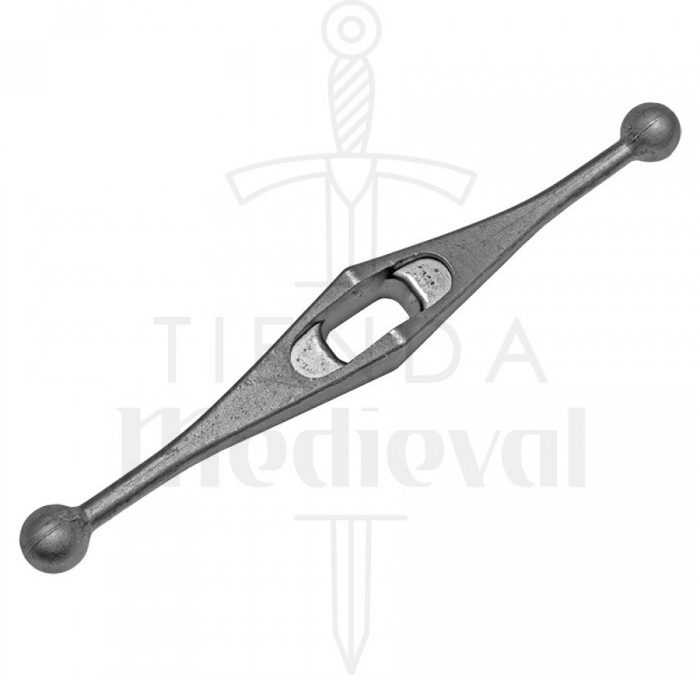
When choosing a guard, it is essential to consider the type of sword and the user's personal preferences. A well-designed guard not only offers protection but can also enhance the accuracy and balance of the weapon, vital aspects for optimal performance in combat or training situations. On the other hand, many guard models feature decorative elements that may include symbols, engravings, or figures of historical relevance, adding significant aesthetic value for collectors and sword enthusiasts.
Interestingly, some guards are interchangeable, allowing the user to modify the protection and style according to their specific needs, using the same blade with different guards for various purposes. This versatility is particularly useful in disciplines like HEMA (Historical European Martial Arts), where preferences can vary drastically between styles and techniques.
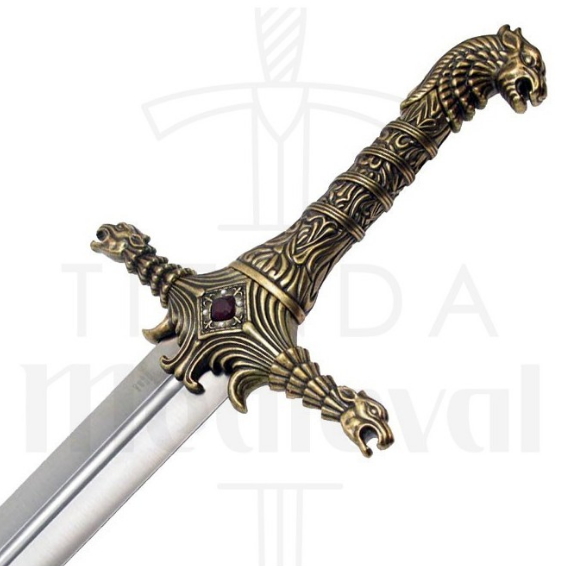
In conclusion, the guard of a sword is not only a protective element but also a component that influences how the weapon is handled. With a proper selection, the user's experience can be optimized, ensuring both safety and effectiveness in its use.
The grip of swords is an essential component of the design and functionality of these weapons. It is the part of the handle located opposite the blade, allowing the user to hold and maneuver the sword effectively and safely. It is made from a variety of materials, which can include wood, metal, bone, ivory, and various synthetic materials, each of which contributes not only aesthetics but also grip and durability characteristics.
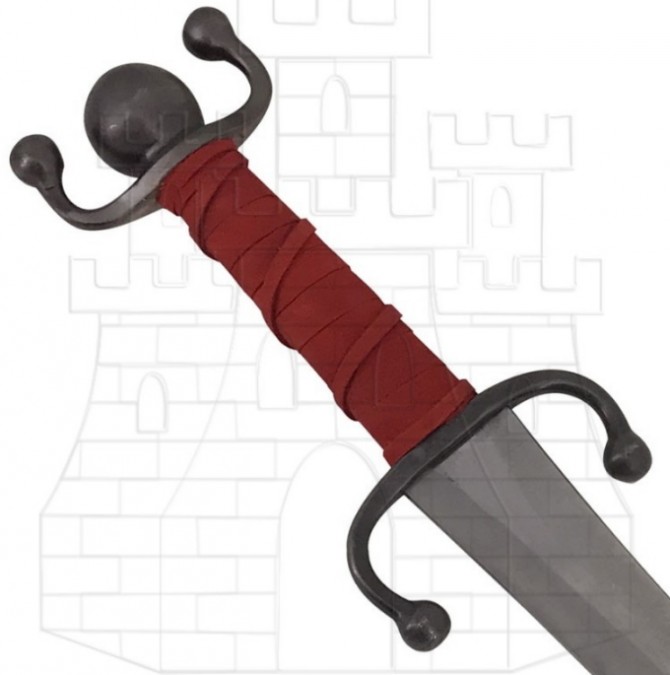
Beyond its practical aspect, the grip can also serve a decorative and representative function. Many designs include symbolism and historical figures, conveying a sense of heritage and legacy that can be significant for the bearer. Therefore, the selection of a sword's grip should consider not only the physical characteristics of the blade, such as its length, but also the diameter and the hand length of the user. This will ensure that the grip suits their personal needs, providing a more comfortable and effective experience.

The grip also plays a fundamental role in the balance of the sword. The correct weight distribution between the blade and grip allows the bearer to handle the weapon with greater ease and precision, which is essential in combat situations or during training. Some grips are designed in such a way that they can be used as a secondary weapon, thus expanding their functionality and utility in various circumstances. This ensures that the user is prepared to attack or defend themselves at any moment.
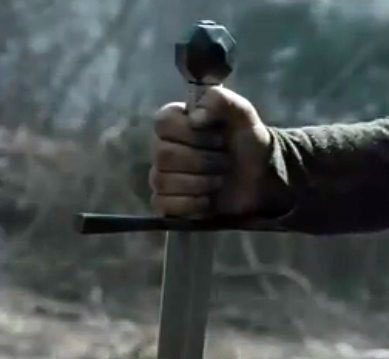
Grips are not exclusive to swords, but can also be found in a wide range of bladed weapons such as knives, daggers, machetes, katanas, and axes, among others. Each type of weapon will have its own grip shape and design to suit its specific use, providing a hold that maximizes effectiveness in combat. For this reason, it is always advisable to consider the characteristics of the grip when choosing any type of bladed weapon, ensuring that it not only fits the user's style but also meets the required safety and functionality standards.
The pommel of the sword is that fundamental part located at the end of the grip, opposite the blade. Although it may seem like a simple detail, its importance is much deeper than one might imagine. Pommel are made from various materials including wood, metal, ivory, bone, and others, offering not only an aesthetic function but also a vital practical contribution. They can be found adorned with a variety of designs that reflect the culture and purpose of the sword, merging art and functionality in fascinating ways.
From a practical perspective, the pommel plays a crucial role in the balancing of the sword. By counteracting the weight of the blade, it facilitates handling and precision during combat, allowing the user to execute maneuvers with greater skill. Not only that, but in situations where the blade cannot be used, the pommel can become a striking weapon, adding an extra layer of effectiveness to the sword.


- During the Middle Ages, pommels were used as secondary weapons, ideal for striking an opponent in situations where the blade could not be used, offering tactical versatility in combat.
- In certain swords, pommels were designed to facilitate the maintenance of the blade, allowing the bearer to disassemble the sword for cleaning and inspection.
- This component could also include symbolic figures or animals, such as lions and snakes, embellishing the sword and giving it a deeper meaning.
- Some swords were equipped with interchangeable pommels, allowing the same user to adapt to different situations using the same blade with different pommels.
- Pommels were also used as symbols of ostentation, to showcase the wealth and power of the owner, which was reflected in their decoration with jewels and precious stones.
- In cultures like the Celtic, pommels featured intricate designs, including geometric patterns and spirals that demonstrated artistic mastery.
- In Japanese swords, the pommel is called "kashira" and is commonly decorated with reliefs and engravings that reflect Japan's cultural heritage.
Together, the pommel of the sword is more than just a simple accessory; it is an element that encompasses history, culture, and functionality, elevating the art of fencing to truly impressive levels. When choosing a sword, considering the design and construction of the pommel will not only enrich its use but also its appreciation as an object of art and history.
The virola is a fundamental piece in the construction of swords and knives, located at the top of the handle, just before the blade. Also known as a collar or ferrule, this piece plays a crucial role in the integrity and functionality of the weapon. Its main function is to secure the blade to the handle, ensuring that it remains safe during use. Additionally, it acts as a protective barrier for the handle material, which is commonly wood, preventing wear and exposure to moisture that could compromise its durability.

Virolas can be made in a variety of materials, including brass, copper, stainless steel, or nickel. This not only influences the weight and strength of the knife or sword but also allows for a rich variety of styles and designs. In many cases, the virola becomes a decorative element in itself, adorned with intricate engravings and details that reflect the skill of the craftsman.

When selecting a virola, it is essential to consider the type of sword or knife, as well as the user's preferences. A well-designed virola not only ensures that the blade is securely held but also protects the handle from potential damage. Additionally, some virolas are designed to provide additional functions; for example, they allow for the blade to be removed for maintenance, which can be a deciding factor for collectors and serious users looking to prolong the lifespan of their weapons or kitchen utensils.
Finally, it is important to understand that while functionality will always be a priority, aesthetics also play a key role in choosing a virola. In a market where personalization is fundamental, many users opt for virolas that reflect their personal style or that match the overall design of their sword or knife.
The term recast is mainly related to the design and functionality of bladed weapons, such as swords and knives. This component is essential for the proper handling and use of these tools. Below, we will explore in detail what the recast is and its historical and technical importance.
Definition of recast: The recast is referred to as the unsharpened part of a knife or the intermediate section that connects the blade to the handle of a sword. This area is vital because it allows for a more secure and controlled grip, which is crucial during the use of the weapon.
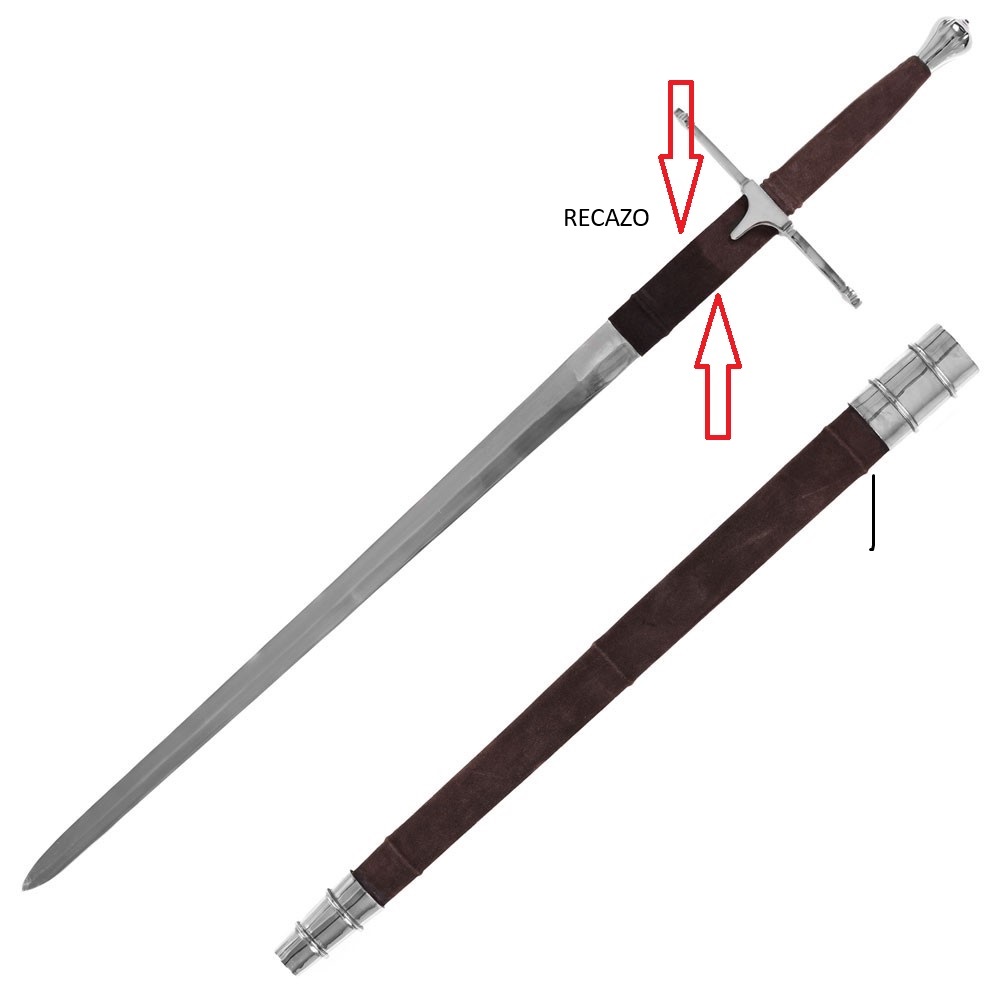
Historically, the recast has played a significant role in weapon design. In medieval and Renaissance swords, for example, this part of the weapon allowed the user to place their index finger over the guard, increasing strength and control when handling the weapon. This ergonomic design contributed to precision and effectiveness in combat.
Besides its practical function, the recast also involves aesthetic aspects in the art of weapon making. Artisans often decorated this part with engravings or ornamental details, adding visual value to the swords and knives they crafted.
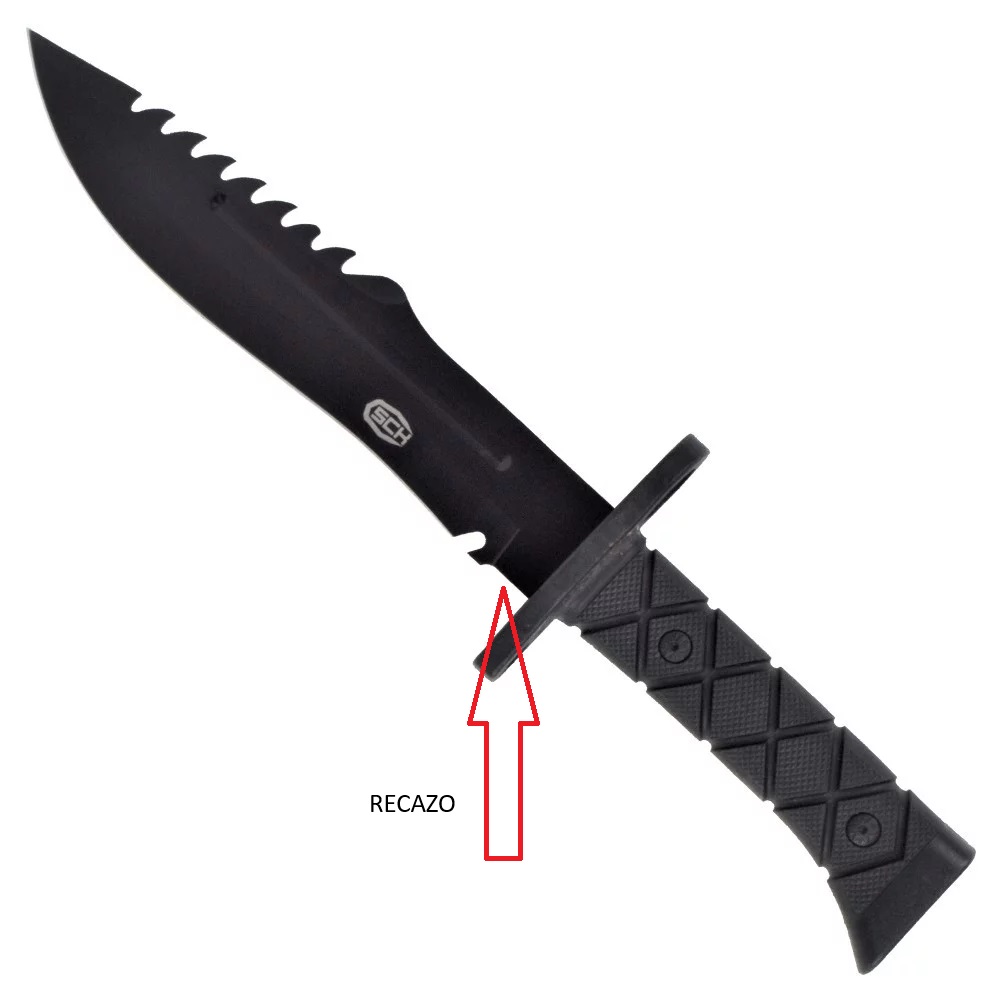
- Importance of recast in combat: A good recast design provides the user with superior control and better maneuverability of the weapon.
- Aesthetic aspects: The recast can also be a customization element, reflecting the artisan's skill and the user's style.
In summary, the recast is not only a functional part of weapons but is also associated with skill, tradition, and aesthetics in the crafting of swords and knives, elements that have accompanied humankind throughout history.
Damascus Steel is a legendary material in the metallurgy world, famous not only for its exceptional strength but also for the beautiful patterns it displays on its surface. This steel has a history dating back to ancient times, specifically in India, and has evolved over time, becoming a symbol of quality and durability.
Origins of Damascus Steel
The beginnings of Damascus Steel can be traced back to India, where a type of steel known as Wootz steel was first produced around 300 BC. This steel was noted for its high carbon content and unique band patterns that appeared to flow like water. Its popularity grew and eventually reached the Middle East, where Persian and Arab blacksmiths refined their manufacturing techniques. The name 'Damascus Steel' is linked to the Syrian city, a significant trade center in ancient times.
Unique Characteristics
Damascus Steel is particularly valued for:
- Durability: Its composition and manufacturing method make it wear-resistant.
- Exceptional sharpness: Knives and tools made from this steel maintain a very sharp edge.
- Beautiful patterns: The distinctive designs are the result of a forging process involving repeated folding and twisting of the metal.
The patterns can vary from simple wavy lines to complex designs that evoke elements of nature, adding aesthetic value to the final product.
Manufacturing Process
The traditional manufacturing of Damascus Steel requires a meticulous process:
- Alloy composition: An alloy of steel with high carbon content is produced, starting with the melting of iron and coal in a crucible.
- Layered reinforcement: In modern manufacturing, different types of steel are welded together under heat and pressure, creating multiple layers that enhance strength and flexibility.
This process is carried out carefully to ensure the quality and uniformity of Damascus Steel.
Contemporary Applications
Today, Damascus Steel is highly valued in the manufacture of:
- Kitchen knives: Known for their fine edge and corrosion resistance.
- Precision tools: Its durability makes it ideal for a variety of industrial applications.
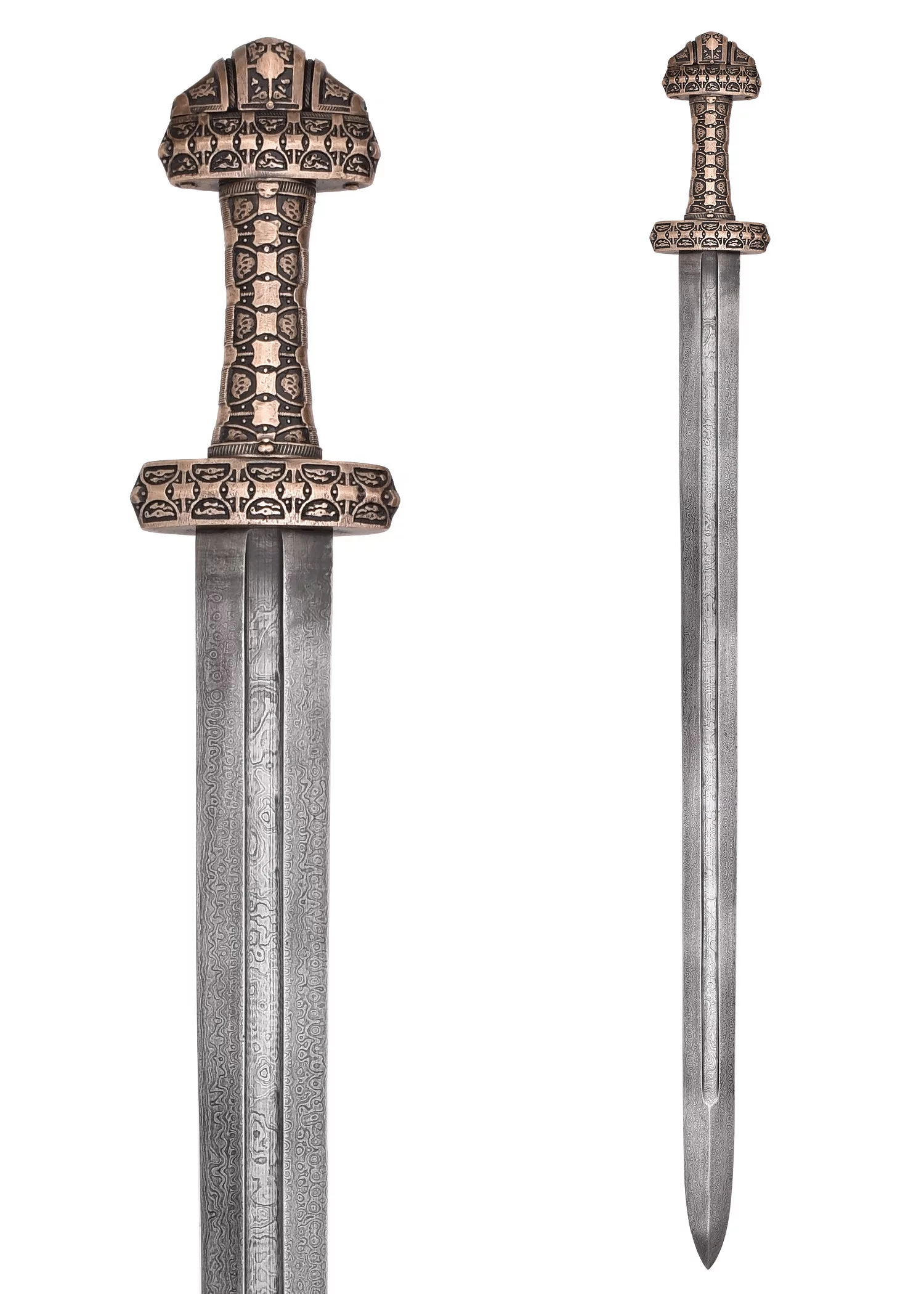
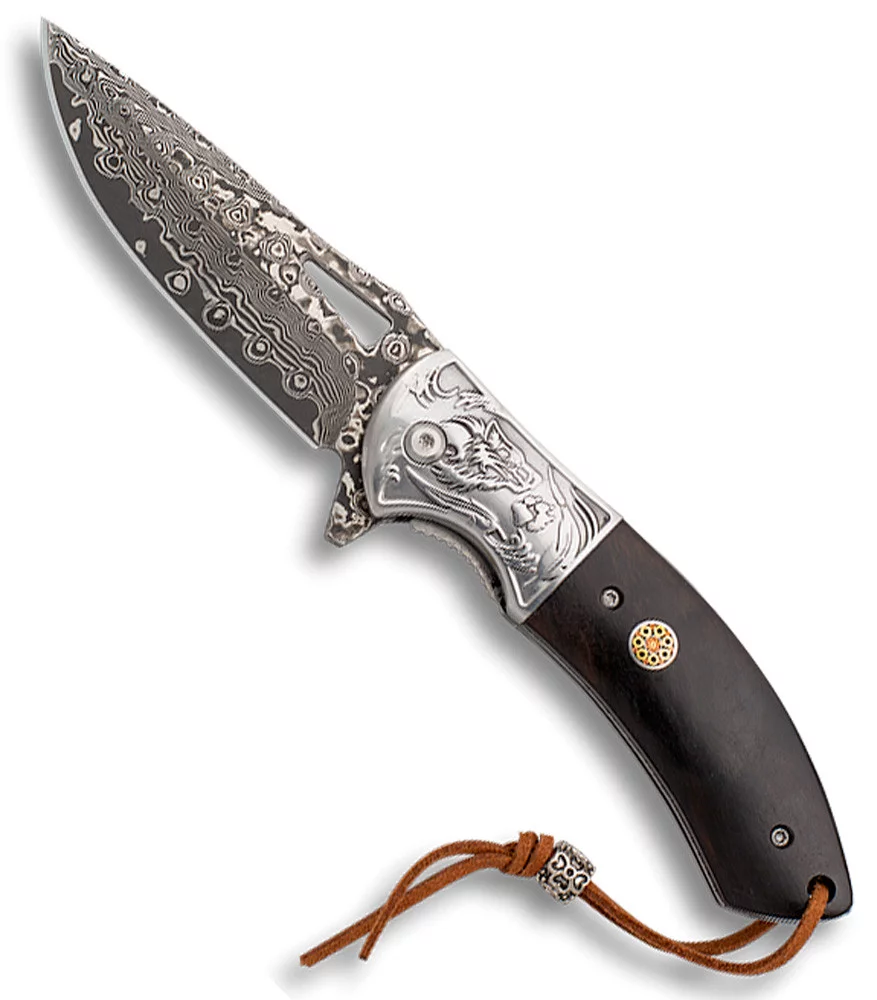
Thus, Damascus Steel not only represents a legacy of tradition and skill but also continues to impact the quality and aesthetics of contemporary tools and weapons, maintaining its status as a highly desirable material in various industries.
Buhurt, also known as Medieval Combat, is a contact sport that revives the knightly tournaments of the Middle Ages. With historical weapons and armor, this sport has evolved and now has a set of rules that ensure the safety of all participants.
Origins and Etymology
The term "Buhurt" originates from the Old French béhourd, which translates to "strike" or "tournament". In different Spanish-speaking regions, it is known as Buhurt or Bohurt, reflecting its rich cultural heritage.
Sport Characteristics
Armor and Weapons
- Combatants use replicas of armor and weapons that accurately reflect the medieval history. These armors are made from materials like steel and titanium and can weigh between 20 and 30 kilos.
- The weapons are of the "blunt" type (not sharp) to minimize injuries, although the fights are intense and can result in bruises.
Rules and Safety
Safety is paramount in Buhurt competitions. Specific rules are established, such as:
- Prohibition of thrusts and strikes to vulnerable areas (head, neck, groin).
- Referees, or marshall, are responsible for enforcing these rules and ensuring fair combat.
Categories and Modalities
Buhurt is divided into several competitive modalities:
- Duels: Individual fights with various weapon categories, including sword and shield.
- Pro Fight: Similar to mixed martial arts, they focus on delivering effective strikes and takedowns.
- Team Buhurts: Competitions where teams range from 5 to 30 fighters, with the 5 vs. 5 format being the most popular.
Events and Competitions
Buhurt has gained global acceptance, highlighting events like the Battle of the Nations, where international teams participate in various historical sites across Europe.

Organizations and Regulations
This sport is regulated by the World Association of Historical Medieval Combat, which updates the rules regarding safety and authenticity. Referees play a crucial role in ensuring the integrity of each fight.
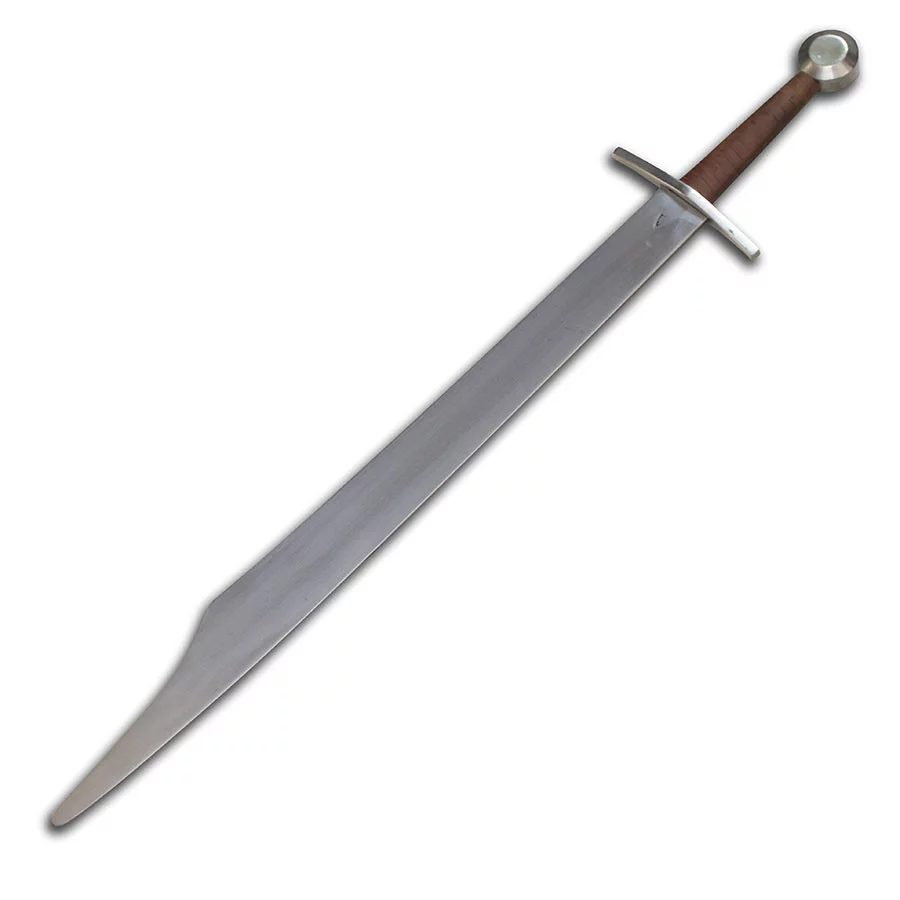
With its exciting mix of history, technique, and fair competition, Buhurt continues to grow as a discipline that attracts enthusiasts from all over the world. In its evolution, it remains true to its historical roots while promoting a safe environment for all participants.
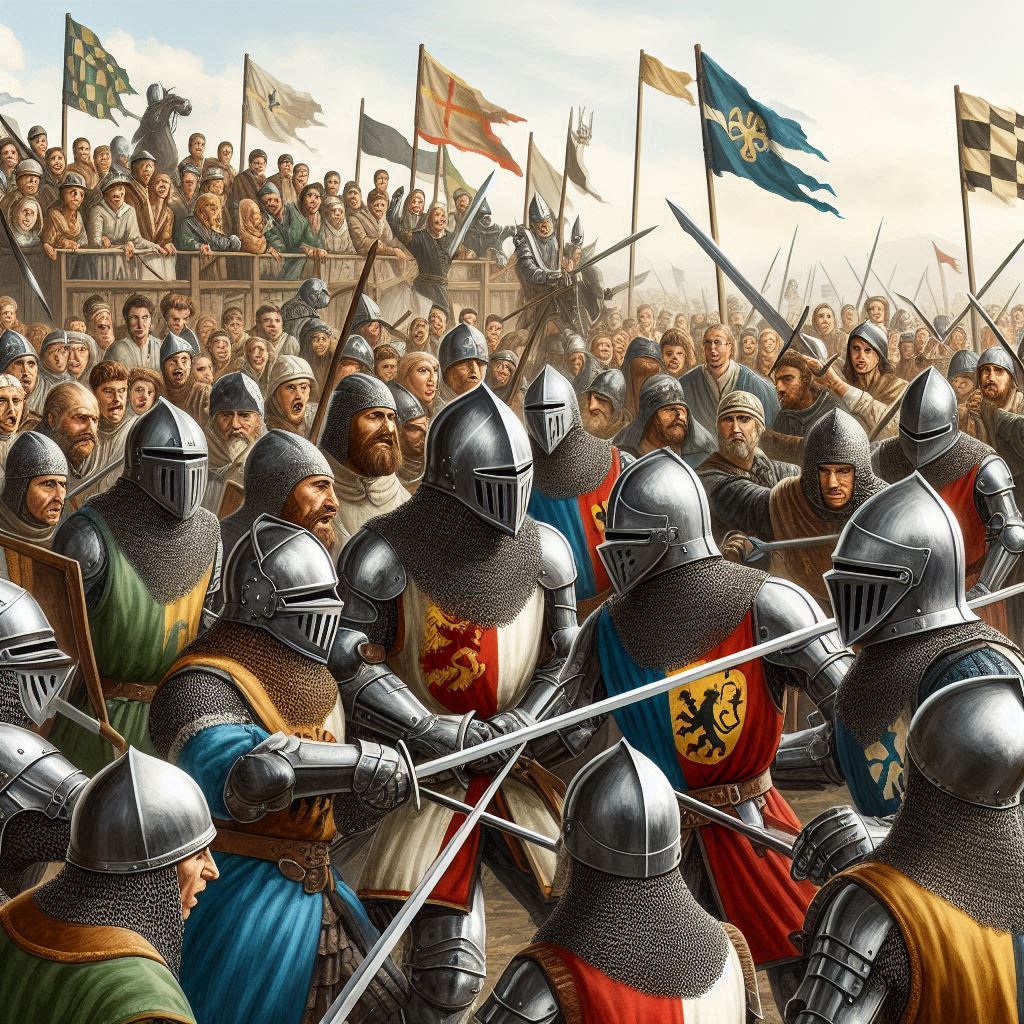
What is HEMA?
HEMA, which stands for Historical European Martial Arts, is a fascinating discipline that encompasses various combat systems used in Europe throughout the centuries. Below, we will explore its origins, techniques, and current relevance.
Origins and Definition
- Meaning: The term HEMA is used to describe a broad spectrum of combat styles and techniques that were common in different periods and regions of Europe.
- Historical Context: These martial practices were functional in both warlike and civilian scenarios, including tournaments, duels, and self-defense.
Practices and Techniques
HEMA covers a variety of styles and techniques that depend on multiple factors such as the region, the time period, and the type of weapon. Some of the most relevant include:
- Swordsmanship: This aspect includes fighting with swords, using different weapons such as:
- Longsword
- Rapier
- One-handed sword
- Staff, halberd, and spear
- Armored combat
- Bladed Weapons: Includes sabers, daggers, and spears used in direct combat.
Historical Sources
The authenticity of HEMA is based on meticulous research from:
- Combat treatises
- Military manuals
- Artistic representations of historical confrontations
- Judicial and parliamentary documents
- Archaeological artifacts
Modern Development
The formal practice of HEMA is relatively new, primarily resurging in the 1980s and 1990s, thanks to the interest of historians and enthusiasts. Some key organizations in this field are:
- Historical European Martial Arts Coalition (HEMAC)
- Association for Renaissance Martial Arts (ARMA)
These entities have contributed significantly, promoting the study, organization of tournaments, and dissemination of knowledge within the HEMA community.

The practice of HEMA offers a unique blend of historical study and physical development, providing practitioners with a profound understanding of the martial arts of yore.
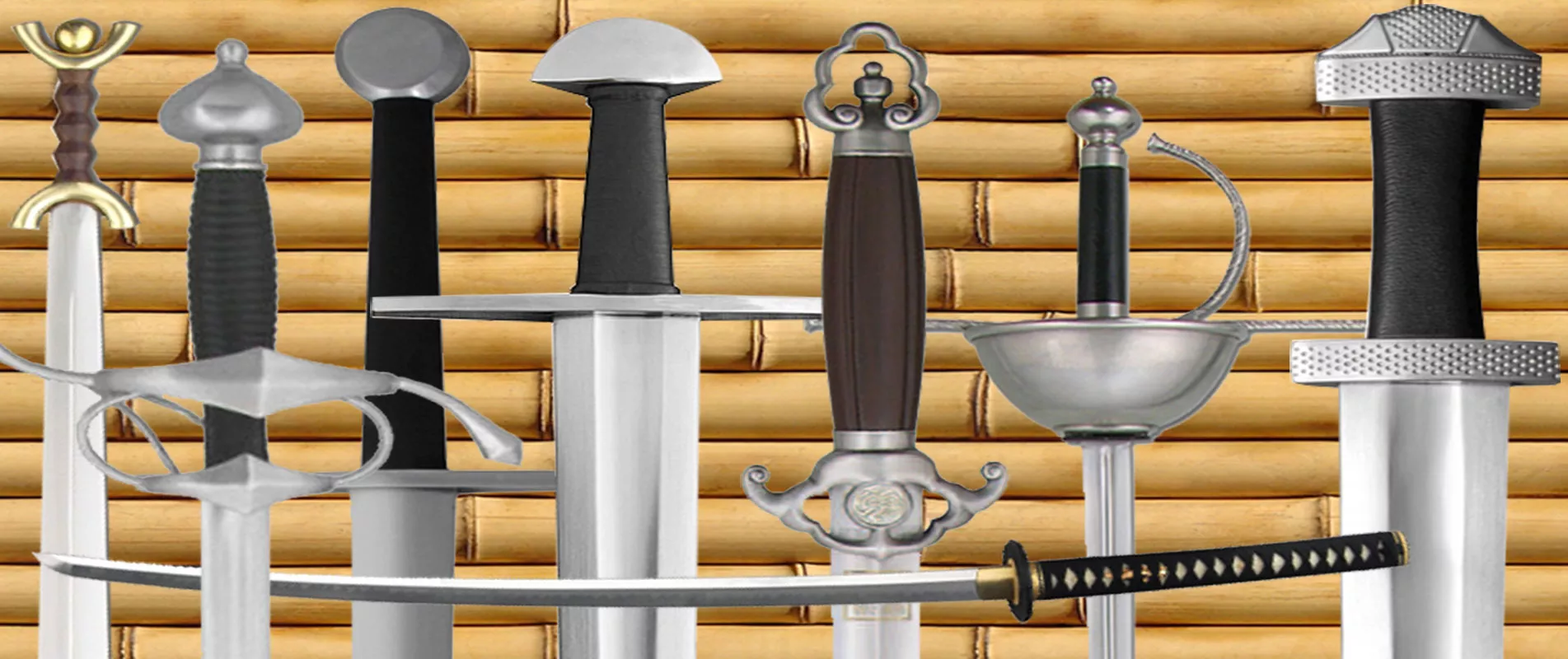
A **Full Tang** knife is a type of knife known for its robust and functional design. The key feature of these knives is that the handle is made continuously with the blade, creating a solid and durable piece. This construction provides significant advantages in terms of durability and performance, making them ideal tools for various activities, from cooking to survival situations.
History and Origins
The concept of the Full Tang knife has its roots in antiquity, where the manufacture of cutting tools was essential for human survival. From the first knives made by man, this design has been used in various cultures and eras, adapting to the needs of each specific use.
Characteristics of the Full Tang Knife
- Continuous Design: The handle and blade are integrated, eliminating any possible point of failure between both parts, thereby increasing the knife's strength.
- Strength and Durability: Its construction allows them to withstand pressure and impacts, making them suitable for demanding tasks without the risk of breakage.
- Survival Function: Designed for natural environments, these knives are ideal for cutting, carving, and performing other critical tasks during outdoor activities.
- Quality Materials: Most Full Tang knives are made with high-quality steels, giving them excellent cutting ability and resistance to corrosion.
- Functional Accessories: They often come with appropriate sheaths that allow for safe and practical transport, along with additional safety features, such as locking systems.
Examples of Full Tang Knives
Some notable Full Tang knives include:
- Gerber Prodigy Survival Knife: With a blade of 12.06 cm and ceramic coating, it is ideal for various conditions and features friction locks.
- Defender Xtreme Knife: With a 12-inch blade, it is perfect for camping and survival activities, equipped with a strategic sheath for transport.
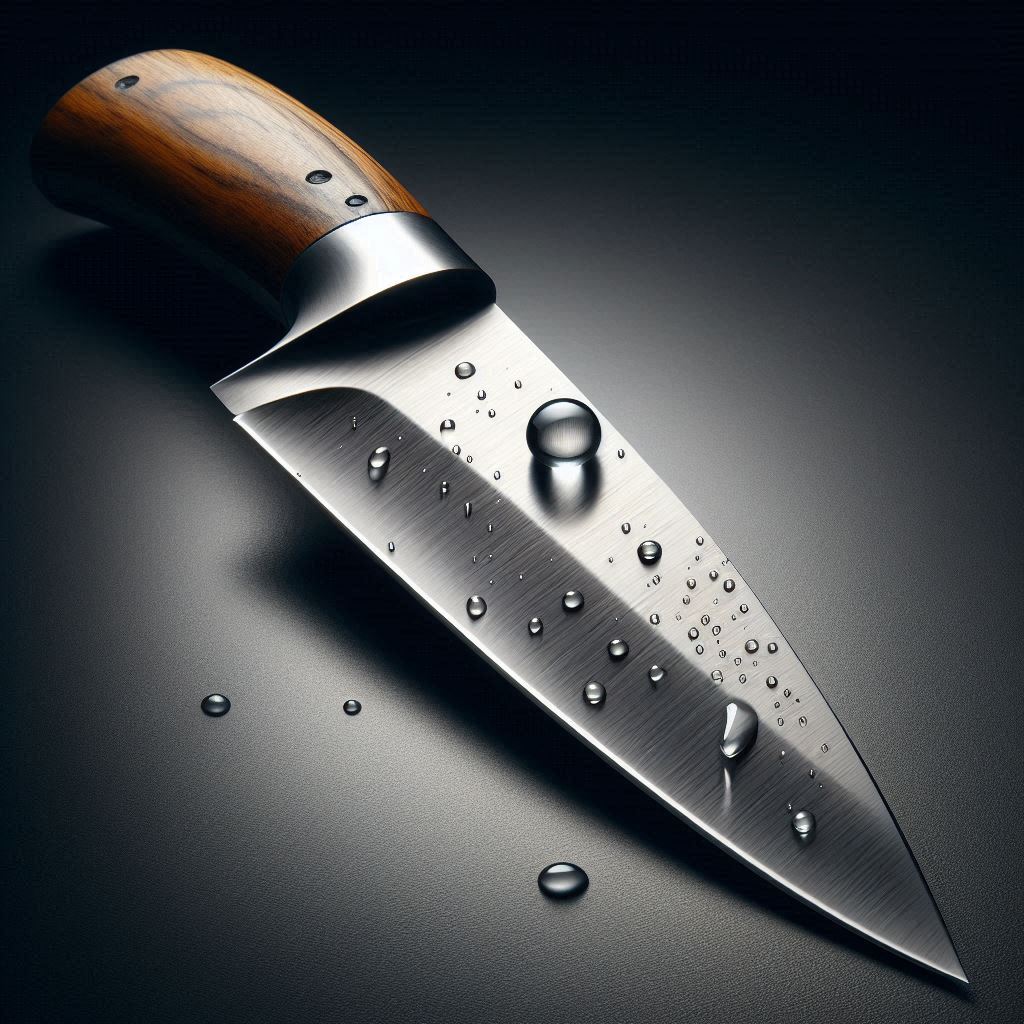
Use and Applications
Full Tang knives are widely used in various practical applications. Their robust design makes them ideal for:
- Hunting and fishing.
- Preparing food in rural settings or on the go.
- Making cuts in survival situations, such as skinning animals or creating shelters.
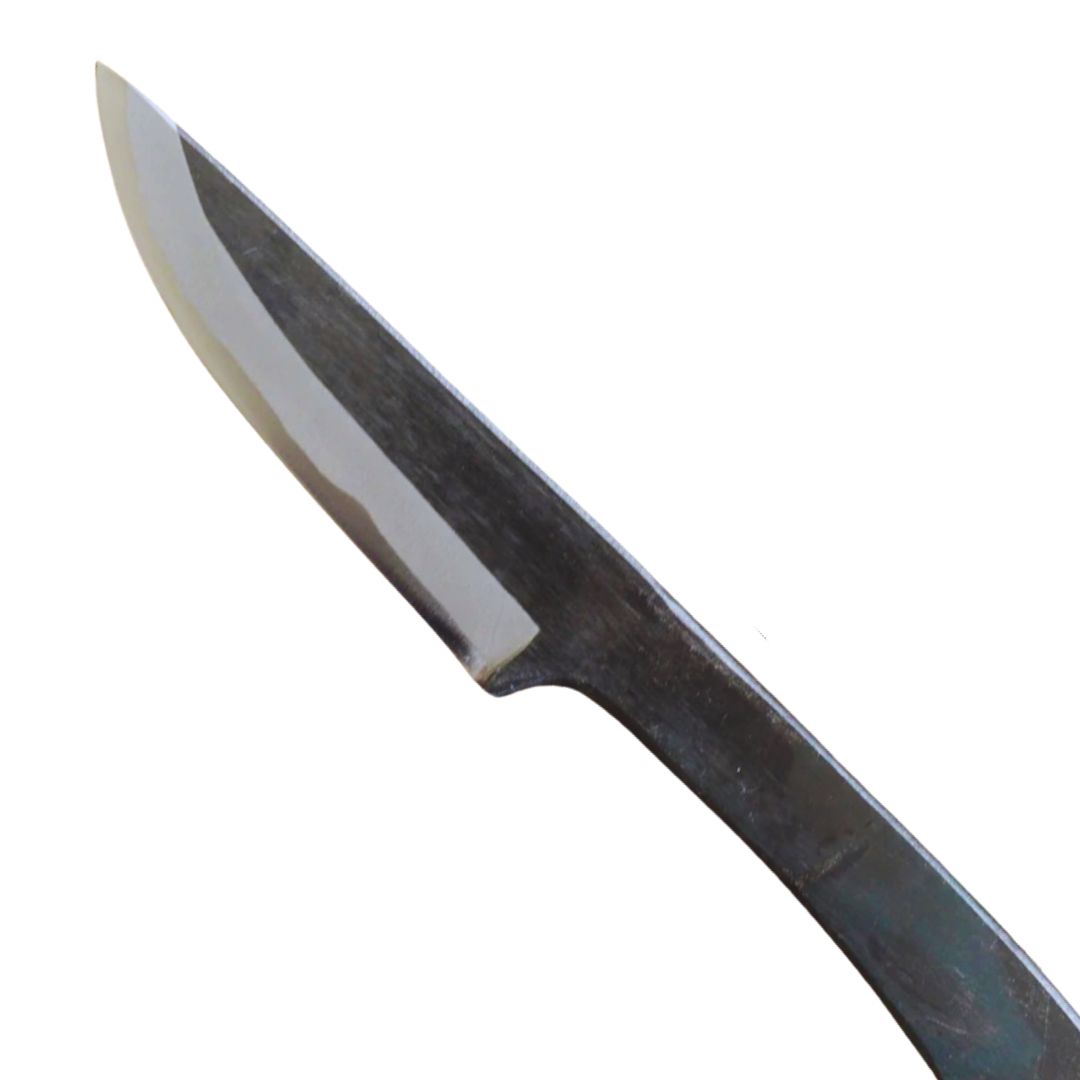
When choosing a Full Tang knife, it is essential to consider factors such as the blade material, cut profile, and the treatment it has received to ensure optimal and lasting performance.
The katana and the medieval sword are two of the most iconic weapons in the history of warfare, each representing the culture and technique of their respective civilizations. In this comparative analysis, we will explore their origins, characteristics, and performance in combat, allowing you to better understand their differences and similarities.
Origin and Fabrication
Katana
Originally from Japan, the katana is a sword characterized by its curved, sharp blade, primarily made of tamahagane, a pure steel derived from iron sand. The katana is not only a weapon but also symbolizes the bushido code, reflecting fundamental values such as honor and loyalty in samurai culture.
Medieval Sword
The medieval sword encompasses various forms and styles used in Europe throughout the Middle Ages, with the longsword being one of the most renowned versions. These swords were made of high-quality steel, with weights ranging from 1.5 kg to 4 kg, depending on the model, which directly affects their maneuverability and effectiveness.
Characteristics and Combat Use
Katana
The katana is noted for its agility, allowing for quick and precise cuts, especially in close-range combat. Its curved design provides a significant advantage in direct attacks, making it the ideal choice for warriors trained in the art of swift combat.
Medieval Sword
On the other hand, the medieval sword, especially the longsword, favors combat techniques requiring greater reach. Its flexible hilt offers additional protection and allows the warrior to use different attack techniques, from deep strikes to defensive maneuvers.
Comparison of Efficacy
Efficiency in Cutting and Piercing
In terms of cutting and piercing efficacy, the medieval sword can surpass the katana under certain circumstances, especially when dealing with armor. However, the katana compensates for this with its speed and effectiveness in hand-to-hand confrontations, a crucial factor in close combat.
Mobility and Precision
The katana is known for its high mobility, benefiting those who prefer a swift fighting style. In contrast, the longsword, although less maneuverable, offers a more robust structural defense, ideal for longer-distance engagements, though its use may be slower in closed situations.
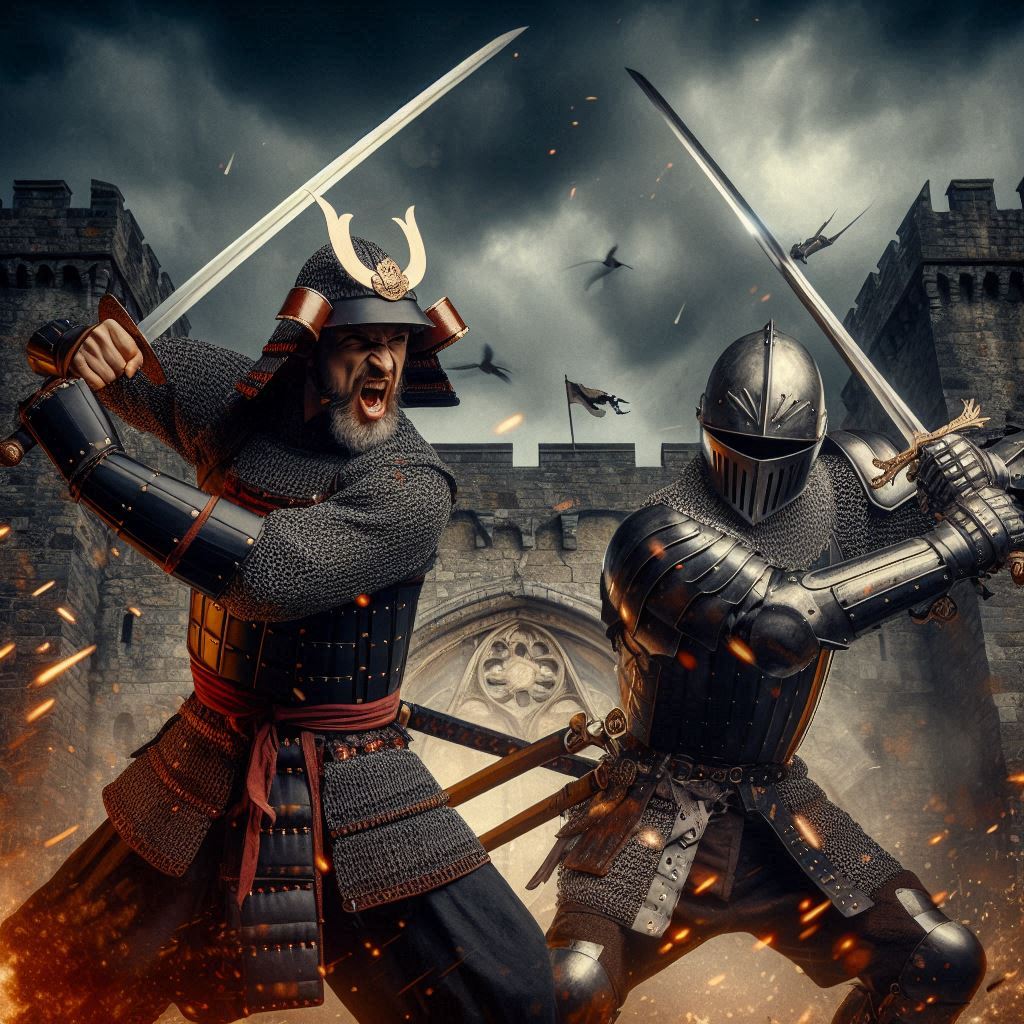
Perfectly adapted to their contexts and combat techniques, both the katana and the medieval sword present unique advantages. Knowing their history and characteristics allows us to appreciate the cultural richness each represents, as well as their role in the evolution of the art of combat.
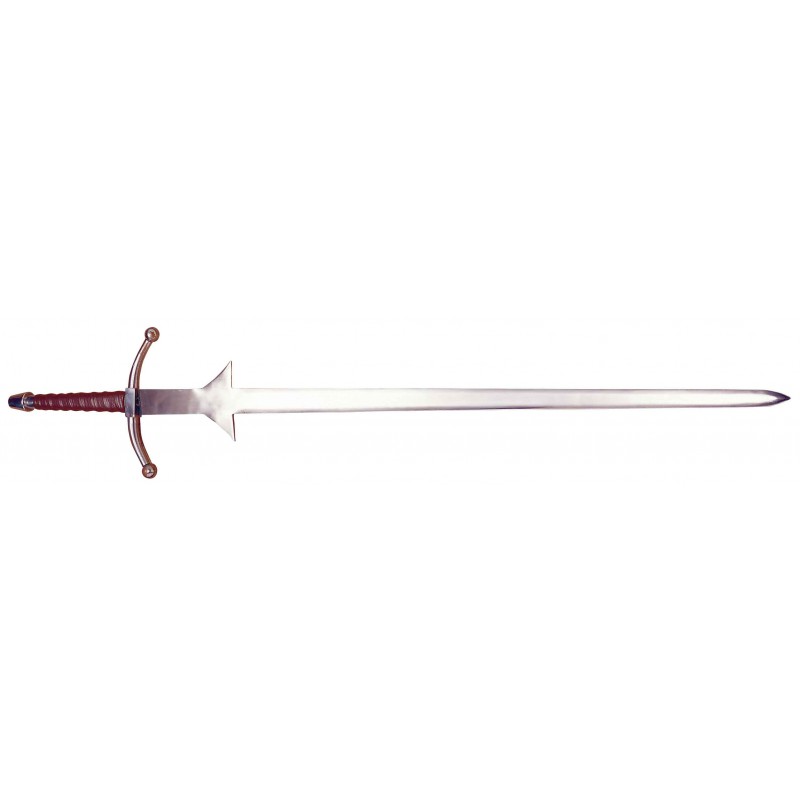
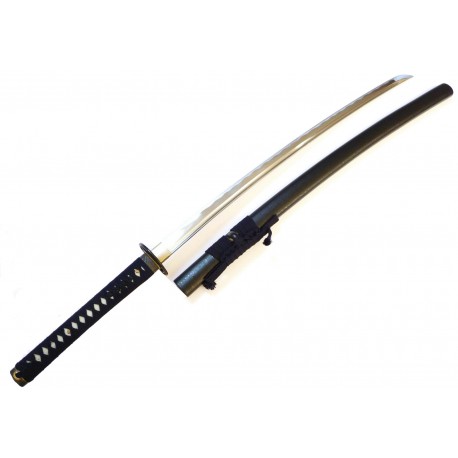
The medieval era is known for its fascination with weapons and warfare. Among the many weapons of the time, one-handed swords and hand-and-a-half swords have captured the attention of historians and enthusiasts alike. Below, the distinctive features and uses of these two icons of medieval warfare are examined in detail.
One-Handed Sword
The one-handed sword is one of the most iconic weapons of the Middle Ages, designed to be used with one hand. Its compact and versatile design makes it an effective tool for close combat.
- Short Blade: Generally, its blade is shorter, making it easier to use in confined spaces.
- Wide Grip: This design allows for better grip and handling.
- Usage: Perfect for close-quarters combat, its speed and lightness are crucial advantages on the battlefield.
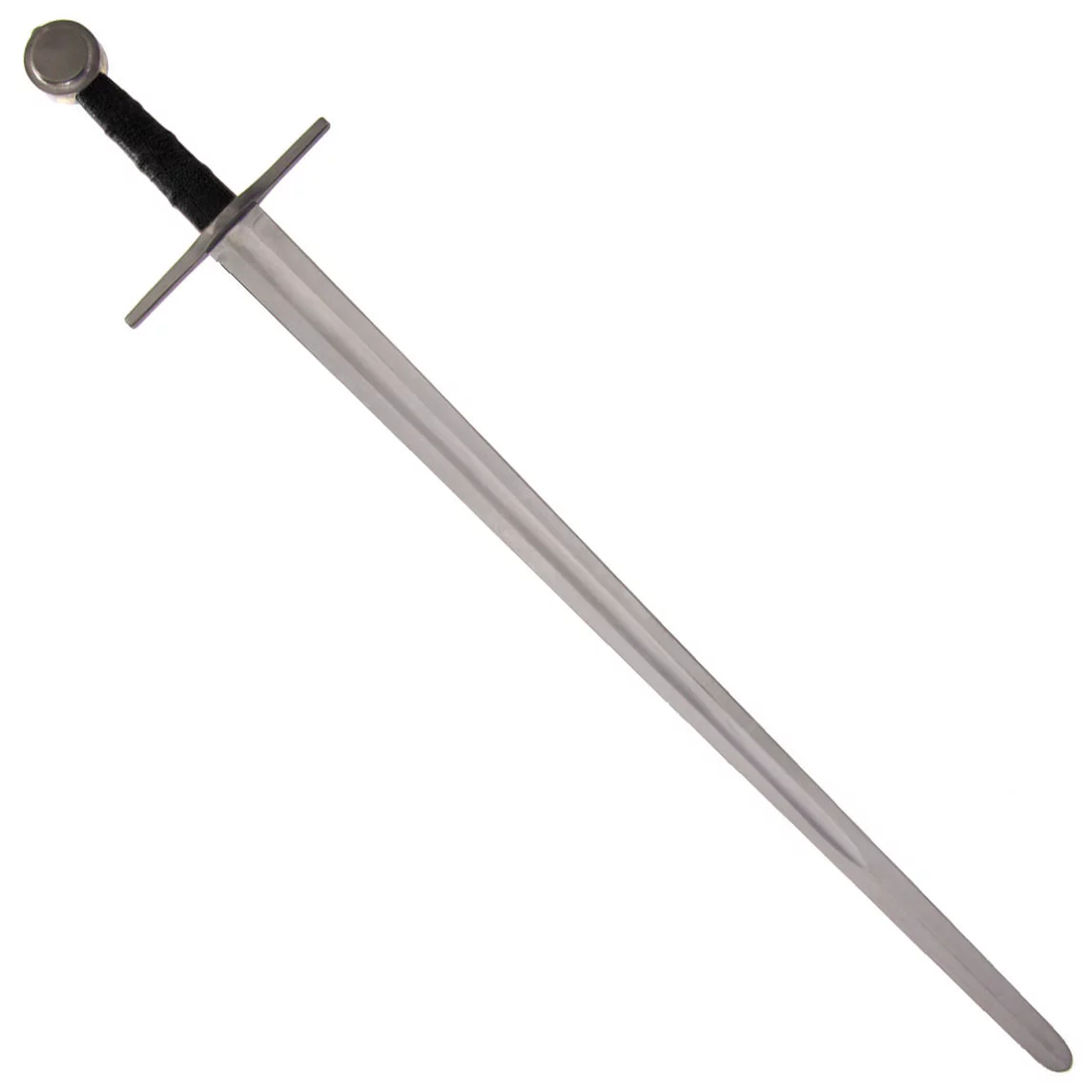
Hand-and-a-Half Sword
In contrast, the hand-and-a-half sword, often called a bastard sword, features a design that allows it to be used with either one or two hands. This feature makes it a versatile option for different combat styles.
- Long Blade: Its length provides greater reach and force in attacks.
- Narrow Grip: Allows a good grip with both hands, increasing stability during combat.
- Usage: Ideal for two-handed combat, it is especially valued by warriors seeking power and versatility.
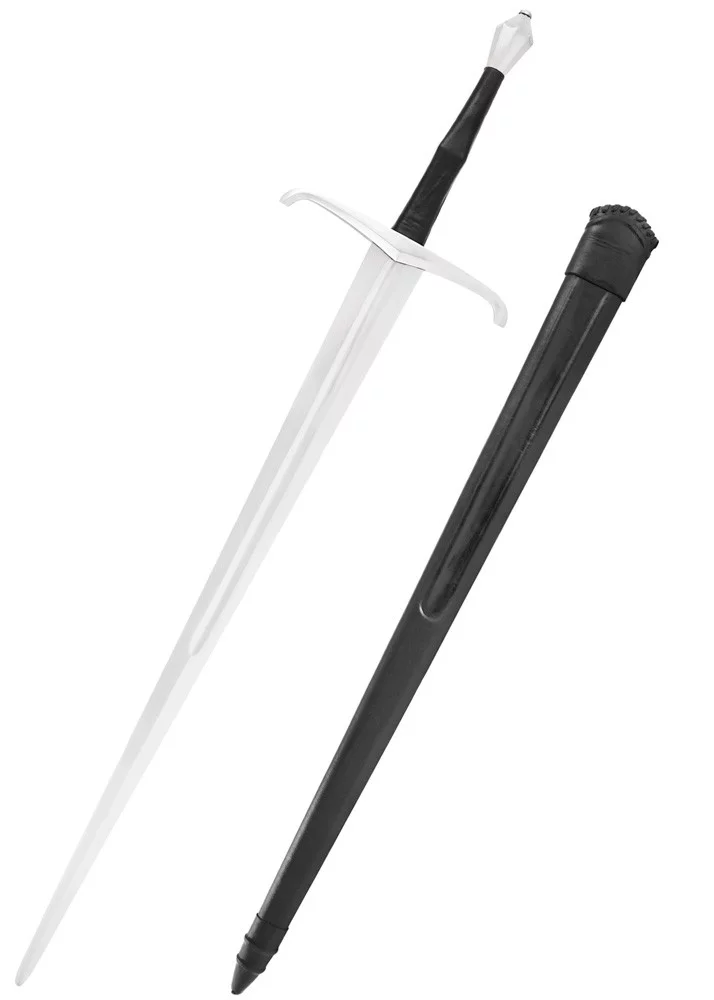
General Comparison
| Feature | One-Handed Sword | Hand-and-a-Half Sword |
|---|---|---|
| Blade | Short | Long |
| Grip | Wide | Narrow |
| Usage | Close-quarters combat | Two-handed combat |

It is essential to remember that both one-handed and hand-and-a-half swords have an important place in military history and popular culture. Both weapons have left an indelible mark on the tradition of swords, becoming symbols of honor and skill in the art of fencing and combat.
The sword has been one of the most emblematic weapons throughout history, used by warriors in different eras and cultures. Among the many variants, the hand-and-a-half sword and the two-handed sword stand out. In this article, we will explore their characteristics, advantages, and disadvantages, as well as their historical evolution.
Hand-and-a-Half Sword

- Origin: It appeared in the 13th century and reached its peak in the 14th and 15th centuries, becoming a favorite among medieval knights.
- Design: Its double-edged blade varies between 85 and 105 cm, while the total length ranges from 108 to 130 cm. It is designed to be wielded with either one or two hands.
- Weight: It generally weighs between 1,300 and 2,000 grams, allowing for agile and balanced handling.
- Use: Ideal for breaking piker formations, as well as for duels due to its speed and precision.
Two-Handed Sword
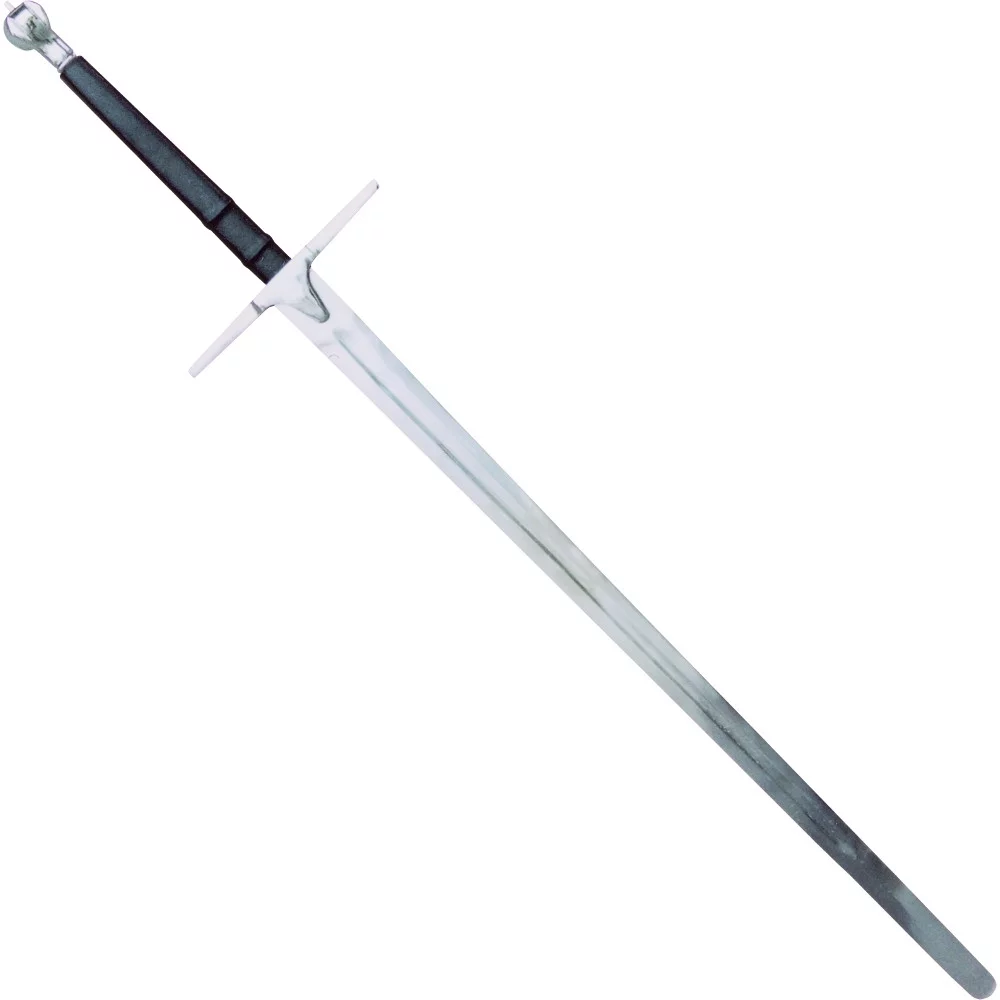
- Origin: It became popular during the 14th and 15th centuries, primarily used in close combat.
- Design: Its blade is longer and heavier than that of the hand-and-a-half sword, and its cruciform hilt allows for exclusive two-handed use.
- Weight: Its weight is considerably greater, making it ideal for delivering powerful strikes.
- Use: While not as versatile, its strength and stability make it suitable for combat formations.
Comparison and Advantages
Hand-and-a-Half Sword
- Advantages: Its versatility is one of its greatest assets, allowing it to be handled in various combat situations.
- Disadvantages: For more powerful movements, the use of both hands is recommended, which may complicate certain maneuvers.
Two-Handed Sword
- Advantages: Its weight allows for devastating strikes, and the stability is notable when using both hands.
- Disadvantages: The difficulty in maneuvering quickly and making precise movements with one hand can be a limitation.
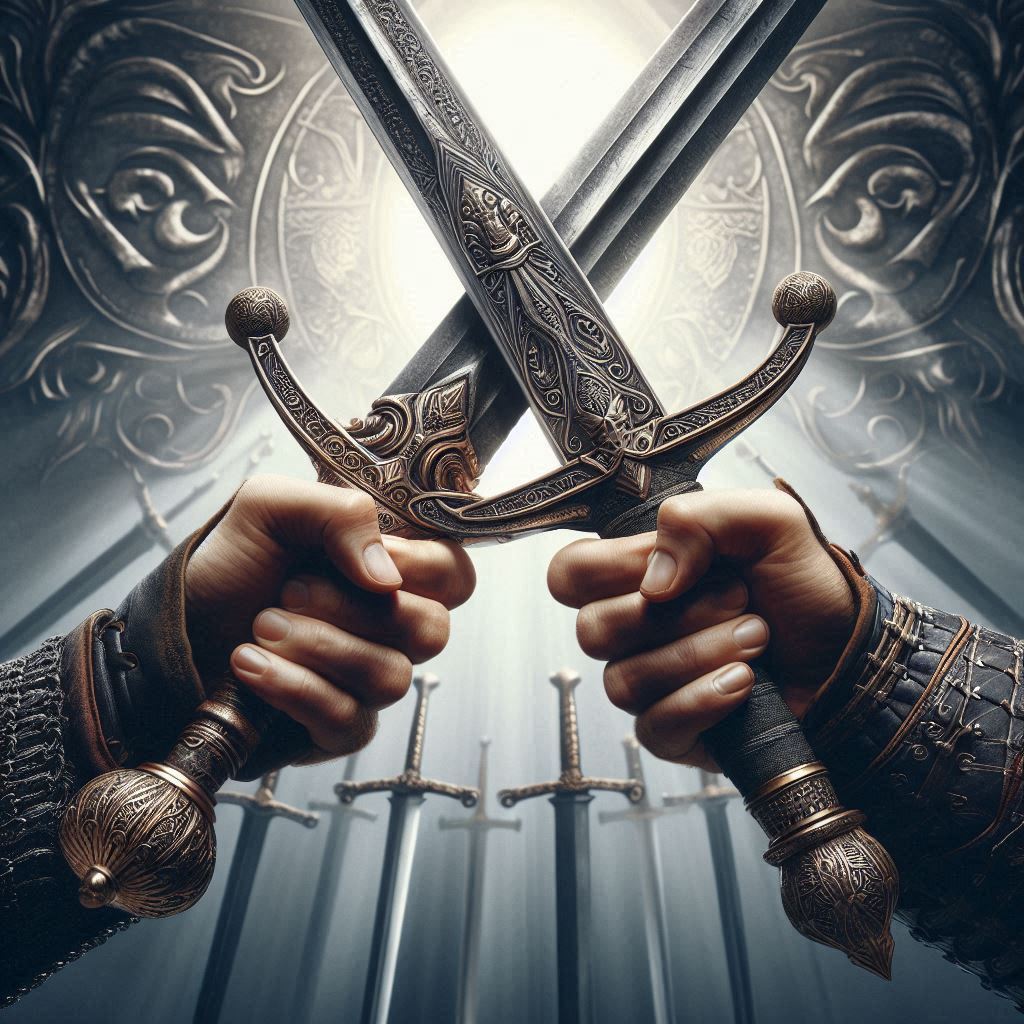
Historical Evolution
Both swords symbolize the evolution of medieval combat technique, adapting to the needs of the battlefield. While the hand-and-a-half sword stood out for its versatility and agility, the two-handed sword became a symbol of brute force and dominance in close combat.
| Characteristic | Hand-and-a-Half Sword | Two-Handed Sword |
|---|---|---|
| Main Use | Versatile, individual combat and formations | Close combat and formations |
| Weight | 1,300 - 2,000 g | Heavier, varied |
| Blade Length | 85 - 105 cm | More than 105 cm |
| Hilt | One or two hands | Only two hands |
In the fascinating world of ancient Rome, weapons played a crucial role in the expansion and defense of the empire. Among the most emblematic were two swords that represented different tactics and combat styles: the gladius and the spatha. Next, we will explore their characteristics, uses, and differences.
The Gladius
The gladius, also known as gladius Hispaniensis, was the main sword used by Roman legionaries for around 400 years, from the 3rd century BC to the 2nd century AD. Its short and robust structure was designed for hand-to-hand combat.
Characteristics:
- Length: Approximately 25 inches (63 cm).
- Use: Especially effective for stabbing and thrusting attacks.
- History: Adapted from Celtiberian swords during the Punic Wars.
Use in Combat:
Legionaries received intense training with the gladius, focusing on quick and precise thrusts. Its lightness allowed for agile and effective maneuvers in compact formations.
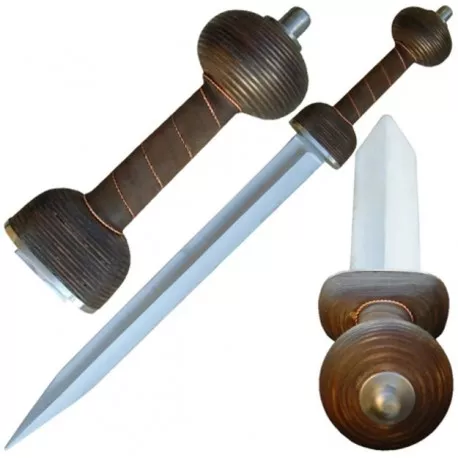
The Spatha
In contrast, the spatha was a longer and heavier sword, originating from the Central European Celtic region. It became popular among Roman cavalry units, and later, among infantry.
Characteristics:
- Length: Approximately 30-40 inches (76-102 cm).
- Use: Ideal for slashing attacks and keeping distance from the enemy.
- History: Inspired by Celtic swords, adopted by the Romans in the 1st century BC and widely used from the 2nd century AD.
Use in Combat:
The spatha provided soldiers with superior reach, favoring battles where distance was beneficial, particularly in engagements involving cavalry.
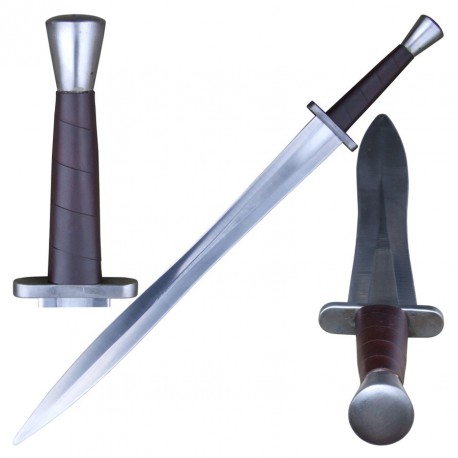
Comparison between Gladius and Spatha
| Characteristic | Gladius | Spatha |
| Length | 25 inches (63 cm) | 30-40 inches (76-102 cm) |
| Use | Close combat, stabbing | Distance combat, slashing |
| History | Adapted from Celtiberian swords | Inspired by Central European Celtic swords |
| Training | Intensive training for stabbing | Training to maintain distance and perform slashes |
Both the gladius and the spatha represent significant stages in the evolution of Roman weaponry, each suited for different contexts and combat styles. The choice between one or the other varied according to the circumstances of the engagement, reflecting the adaptability and strategy of the ancient Romans.
Steel is a fundamental material in the industry, widely used for its versatility and durability. Among the most prominent varieties, we find stainless steel and carbon steel. Each type has unique characteristics that make them suitable for specific applications. Below, we will analyze the main differences between these two types of steel so you can choose the most suitable one for your project.
Characteristics of Stainless Steel
The stainless steel stands out for its high resistance to corrosion, thanks to the inclusion of chromium in its chemical composition. This alloy, which also contains iron, carbon, and sometimes nickel, creates a protective layer of chromium oxide, allowing it to excel in humid environments or those exposed to extreme temperatures. Its properties make it a preferred choice for applications where aesthetics and durability are essential.
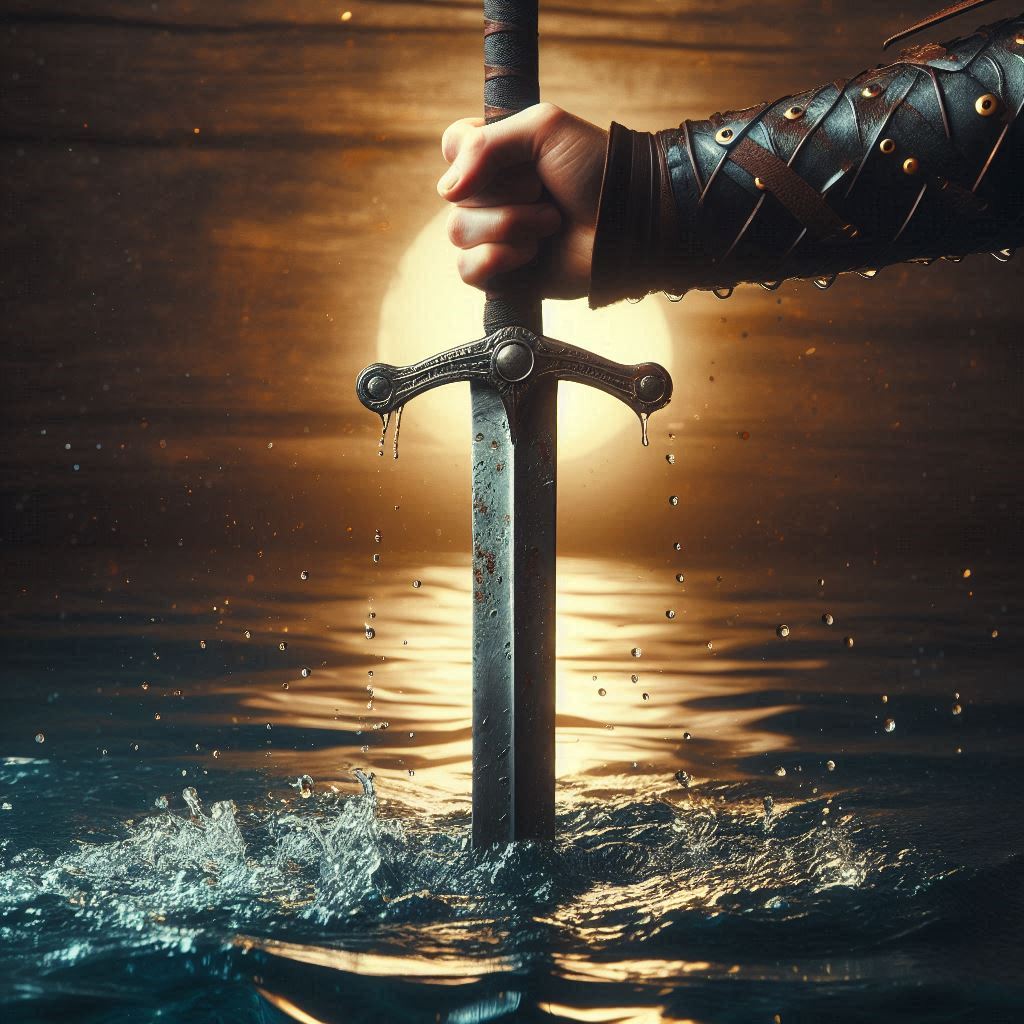
Characteristics of Carbon Steel
The carbon steel, on the other hand, is an alloy composed mainly of iron and carbon, sometimes including other elements like silicon and manganese. Its hardness and flexibility are notable; however, its high porosity makes it more vulnerable to corrosion and oxidation in humid conditions. This type of steel is commonly used in applications where an aesthetic finish is not required.
Key Differences
- Corrosion Resistance:
- Stainless Steel: High resistance, almost maintenance-free.
- Carbon Steel: Needs protective coatings in humid environments.
- Appearance:
- Stainless Steel: Bright and attractive finish.
- Carbon Steel: Matte and less flashy finish.
- Applications:
- Stainless Steel: Excellent for kitchen utensils, construction, and medical equipment.
- Carbon Steel: Ideal for internal structures and non-visible elements.
- Cost:
- Stainless Steel: More expensive due to its composition.
- Carbon Steel: More economical and accessible.
Advantages and Disadvantages
Stainless Steel
- Advantages:
- High resistance to corrosion.
- Attractive aesthetics.
- Durability in adverse conditions.
- Disadvantages:
- High cost.
- Difficulty in machining.
Carbon Steel
- Advantages:
- Greater flexibility and elasticity.
- Affordable for large-scale projects.
- Ease of machining.
- Disadvantages:
- Greater susceptibility to corrosion.
- Less aesthetic, ideal for structural use.
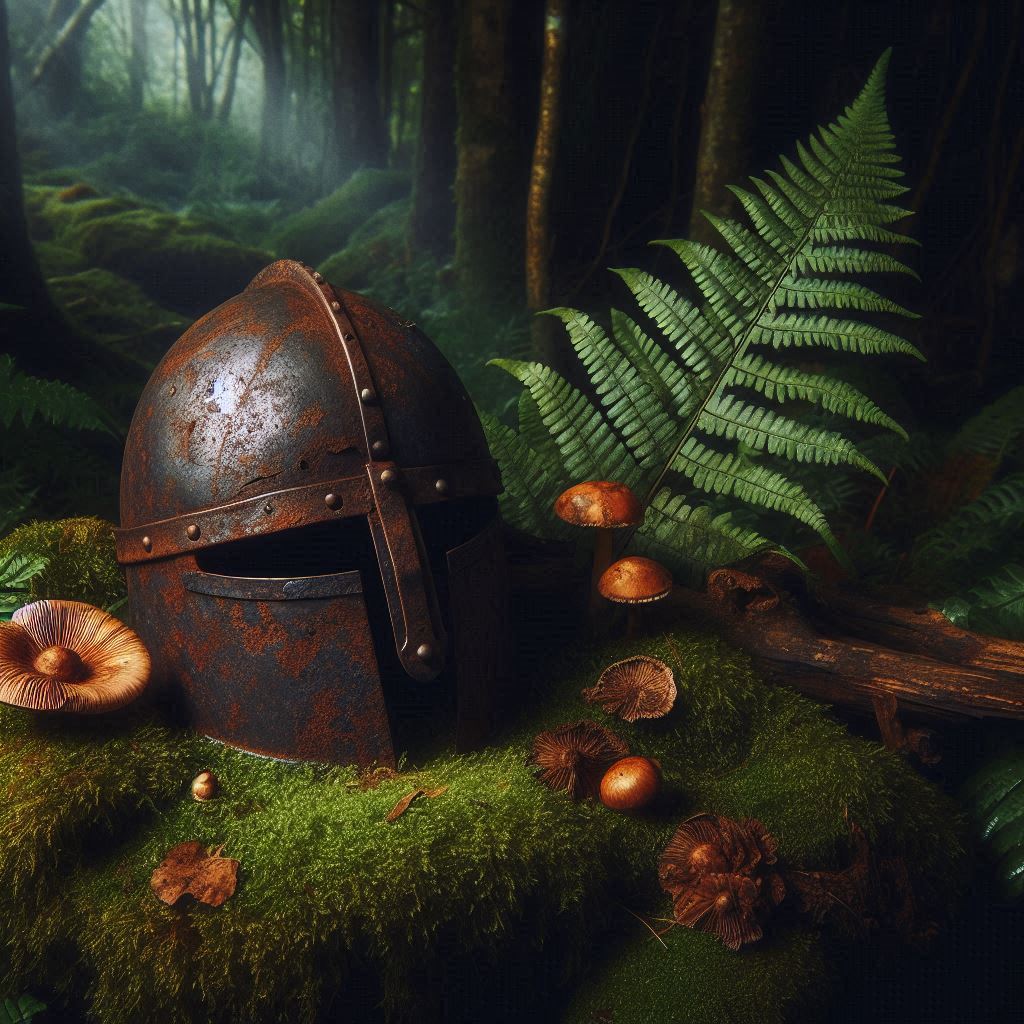
| Characteristics | Stainless Steel | Carbon Steel |
|---|---|---|
| Corrosion Resistance | High | Low |
| Appearance | Lustrous | Matte |
| Cost | High | Low |
| Applications | Tools, automobiles, construction | Structures, internal machinery |
The cup guard is a fundamental element in the construction of sabers and swords, designed to provide protection to the weapon's hilt. This component not only ensures the saber's durability in combat but also enhances its ergonomic use. Below, we break down the characteristics, types, and relevance of the cup guard in fencing practices.
Features of the Cup Guard
- Materials: Cup guards are usually made from durable metals such as aluminum and other coated metals that ensure wear resistance.
- Design: They have a convex and round shape, allowing for adequate padding that minimizes blows. The highly polished outer surface provides an efficient grip.
- Main Function: The cup guard protects the saber's hilt from blows and falls, which is very pertinent during fencing maneuvers, where every impact counts.
Types of Cup Guards
Cup guards can be classified according to their design and use, such as:
- Regulatory Cup Guards: Formulated to comply with specific regulations, such as those of certain organizations (e.g., the Civil Guard). These cup guards feature specific handles and distinctive emblems.
- Insulating Cup Guards: Some cup guards may include insulating elements, providing greater comfort to the user. There are various color options that allow fencers to customize their equipment.
Importance in Fencing
The cup guard plays a crucial role in the context of fencing, where protecting the hilt translates to enhancing the athlete's performance:
- Protection: Prevents damage to the hilt, ensuring the saber maintains its integrity after multiple encounters during practice or competitions.
- Reliable Grip: Thanks to its shape and material, the cup guard ensures that the athlete has a secure grip, contributing to better control of the saber.
Usage Examples
The cup guard, besides being functional, can also be aesthetically appealing. Choosing an appropriate cup guard can influence the comfort and performance of a fencer.

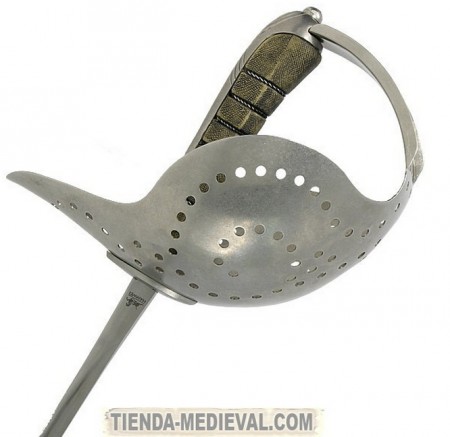
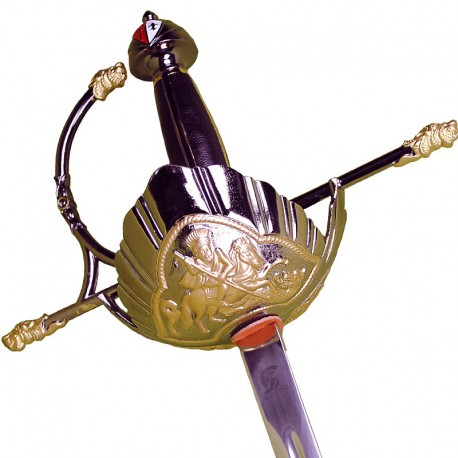
In fencing practice, considering aspects like the cup guard can make the difference between a satisfactory experience and poor performance. Proper selection and care of the saber, including its cup guard, is essential to ensure optimal performance during combat.
The falcata is a traditional sword from pre-Roman Iberia, used by Iberian cultures. Known for its distinctive design and effectiveness in close combat, the falcata has captured the attention of historians and fencing enthusiasts over the years.
Main Characteristics of the Falcata
- Curved and Asymmetric Blade:
The falcata is characterized by having a concave, curved, and asymmetric blade. It generally features a single edge that curves forward before returning towards the axis of the sword. This morphology places its center of gravity in the middle of the blade, thus maximizing cutting force.
- Grooves and Decorations:
Some falcatas have grooves on the non-cutting side, reducing weight without sacrificing effectiveness. They are often decorated with damascening, incorporating silver threads in intricate designs.
- Handle:
The handle is designed for a single hand and is typically offset, allowing for a comfortable grip. Some handles are decorated with materials such as bone or ivory and may have symbolic pommels, like those of a horse or a griffin.
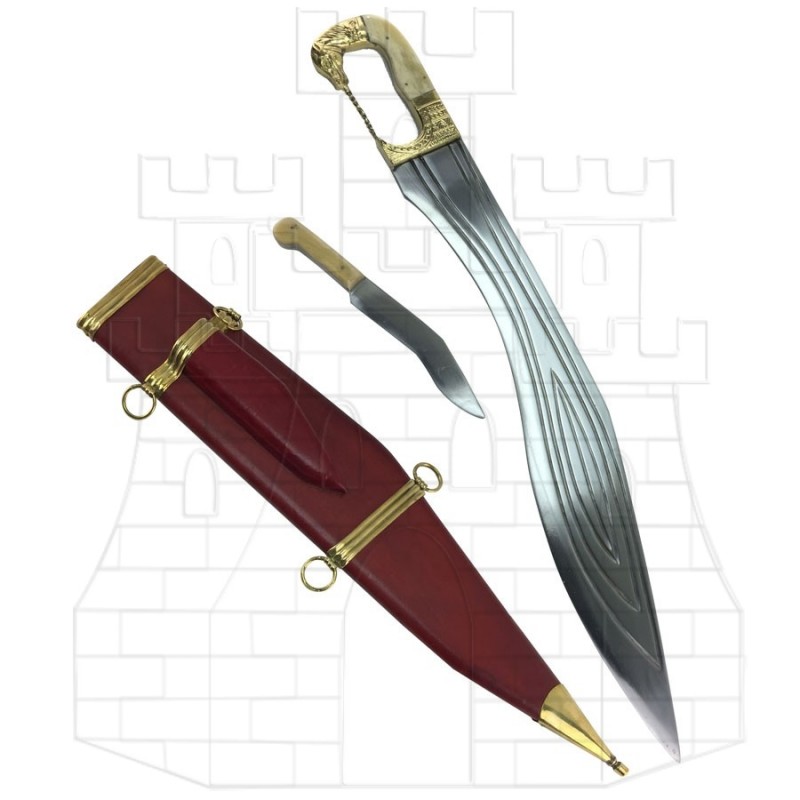
Use in Combat
- Efficiency in Close Combat:
Thanks to its design, the falcata is particularly effective in hand-to-hand combat. It allows for clean and devastating cuts, adapting well to combat with a shield and taking advantage of offensive techniques like thrusts and diagonal cuts.
- Customization:
Each falcata was often a unique weapon, tailored to the warrior's personal needs and preferences. This not only gave them effectiveness but also social status, serving as a symbol of the Iberian warrior.
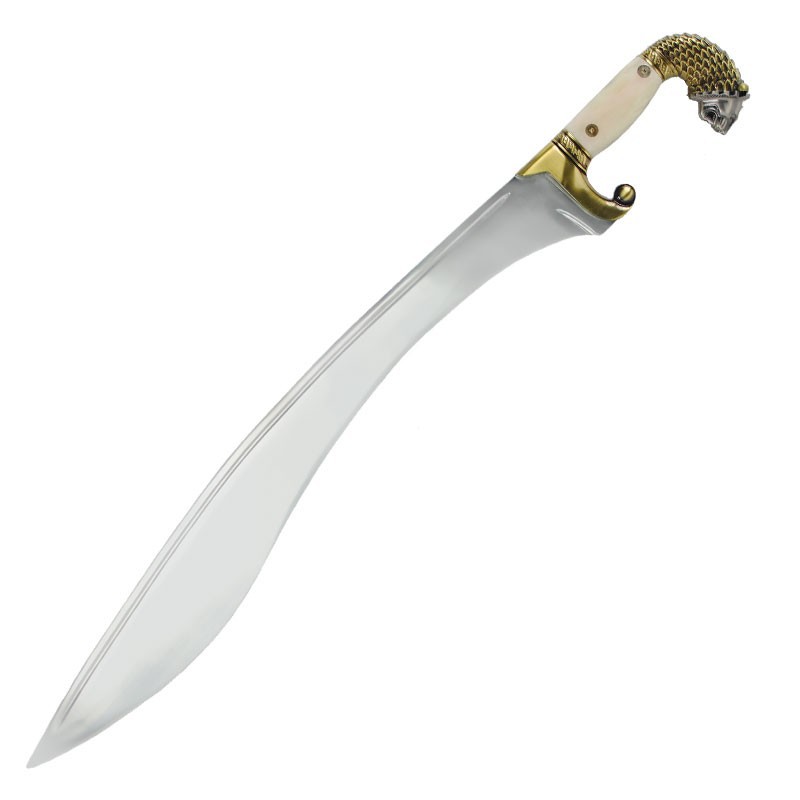
Origin and Historical Evolution
- Theories of Origin:
The falcata has multiple theories regarding its origin; some suggest it is derived from Hallstatt culture knives, while others link it to Hellenic weapons like the *makhaira*.
- Development:
Over time, the falcata evolved, becoming lighter and more practical for ground combat, reflecting the Iberians' adaptation to changing warfare tactics.
Manufacturing Technique
The forging of the falcata involved advanced methods for its time, using quality iron, contributing to its durability and combat effectiveness. These forging processes were essential to creating a sword that met the expectations of Iberian warriors.
| Characteristics | Description |
| Blade | Curved and asymmetrical, single edge |
| Handle | Small and designed for one hand |
| Decoration | Grooves and damascening |
| Use | Close combat and offensive use |
The Gladius is an iconic sword used by the Roman legions, famous for its efficient design and crucial role on the battlefield. In this article, we explore its history, features, and military use in ancient Rome.
Origin and Design
The Gladius is inspired by the Hispano-Celtiberian sword, known as the gladius hispaniensis. This short and light sword was adopted by the Roman legions during the Punic Wars, enhancing their combat effectiveness. The standard length of the Gladius was about half a meter, although they could be customized to fit each soldier's height.
Characteristics
- Straight and Wide Blade: The blade was straight and considerably wide, making it a lethal weapon in the hands of a trained legionary.
- Double Edge: Its double-edged design allowed legionaries to use it for both thrusting and cutting, giving it versatility in battle.
- Varied Grip: Depending on the rank, the grips could be made of wood, bone, or ivory, with a spherical pommel, providing a secure hold.
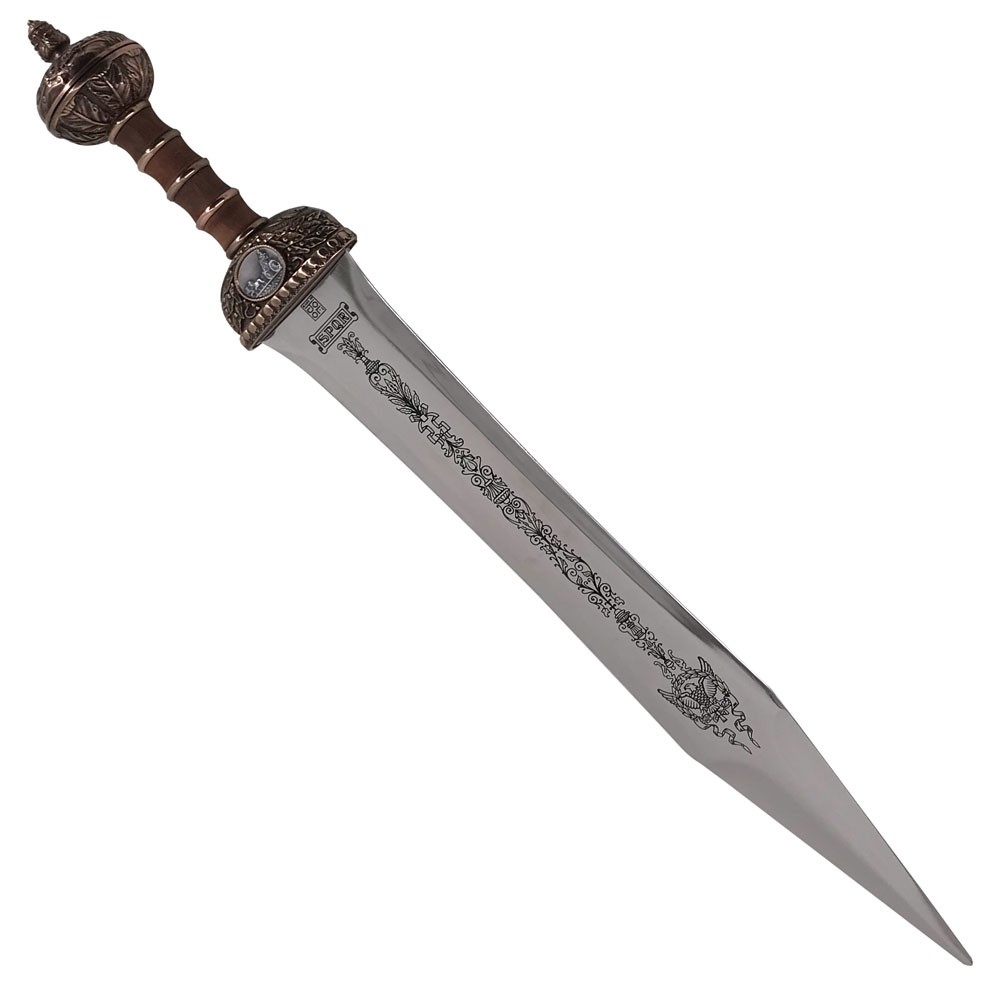
Use on the Battlefield
The Gladius was designed for quick attacks, particularly useful in the tight formation of legionaries. By sheltering behind the scutum (shield), soldiers awaited the right moment to deliver a swift thrust, using their Gladius to incapacitate opponents in seconds.
Adaptations and Evolution
As the Roman Empire expanded, the design of the Gladius evolved. One of the most recognized variants is the Mainz Gladius, noted for its straight blade and distinctive disc-shaped pommel, adapting to different needs on the battlefield.
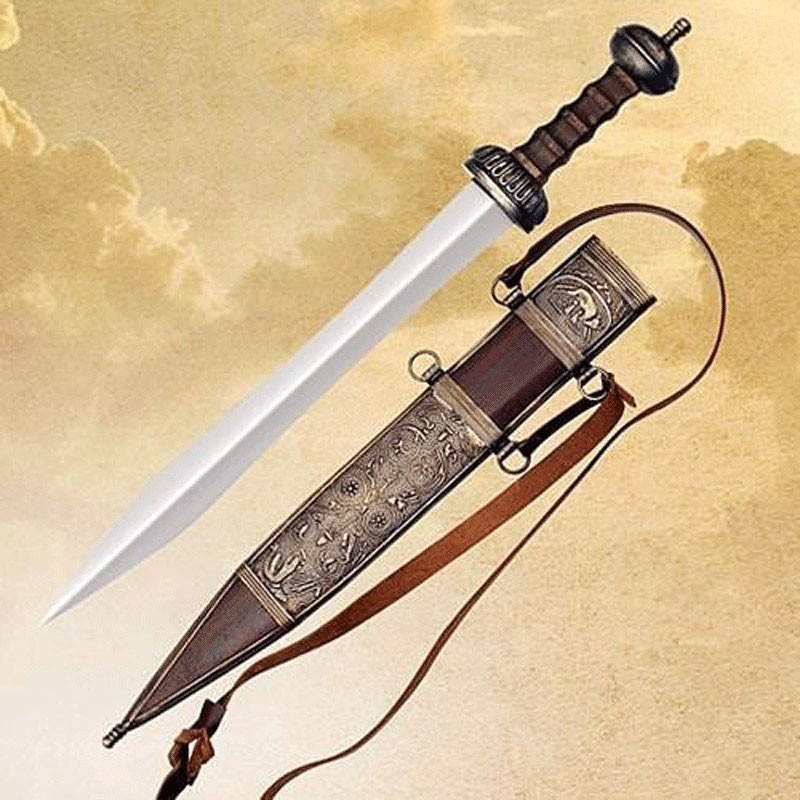
Historical Impact
The Gladius was not only a key tool for the victories of the Roman legions but also symbolizes the strength and discipline of the Roman army. Although it was eventually replaced by the spatha in the late Imperial period, its legacy lives on as one of the most effective and iconic swords in military history.
| Features | Description |
| Length | Approximately 50 cm |
| Blade | Straight, wide, and double-edged |
| Grip | Wood, bone, or ivory |
The Spatha is a historical long sword that played a fundamental role in the arsenal of the Roman Empire from the 1st to the 6th century AD. With its distinctive design and multiple uses in combat, the Spatha represents a significant advancement in the evolution of weapons of the time. Below, we will explore its characteristics, origin, and use within the Roman military context.
Features of the Spatha
- Length: Generally ranges between 75 and 100 centimeters, making it a notably longer sword than the Gladius, the traditional legionary sword.
- Design: The blade of the Spatha is straight, with a wide structure and often double-edged, providing effectiveness for both cutting and thrusting.
- Grip: Its grip is generally made of wood, elegantly carved and detailed with brass. This, in addition to the guard, ensures a better hold during combat.
- Scabbard: Its scabbard, made of wood and leather, includes ornamental brass elements, allowing easy transport and access to the sword.
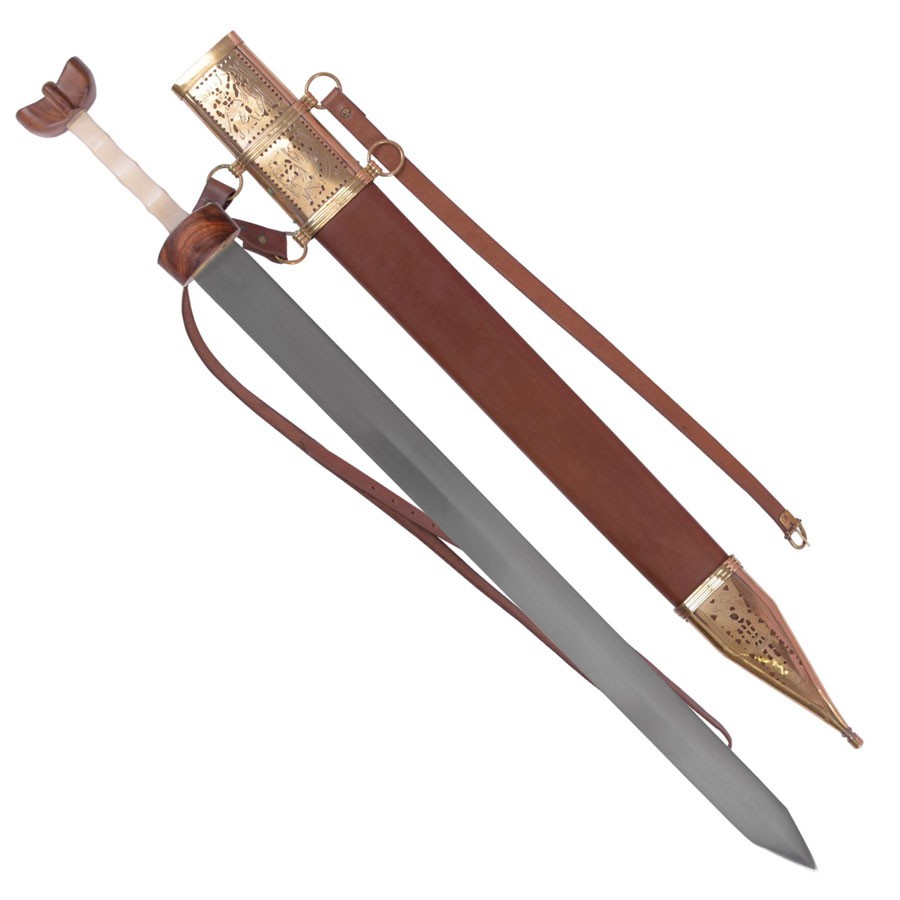
Origin and Influences
The origin of the Spatha is still a matter of debate among historians. It is believed to have emerged in the 1st century AD, possibly influenced by Celtic and Germanic swords, as warriors from these cultures served in the Roman army. It has been suggested that its design may have been developed in regions of northern Europe.
Military Use
The Spatha became the preferred choice for heavy infantry and cavalry. As military tactics evolved, so did the weapons used. Its specific use can be observed as follows:
- Infantry: From the 3rd century AD, soldiers began to prefer the Spatha over the Gladius due to its greater length, facilitating attacks from a safer distance.
- Cavalry: For cavalry, the Spatha was modified to have a blunt tip, preventing accidents while riding.
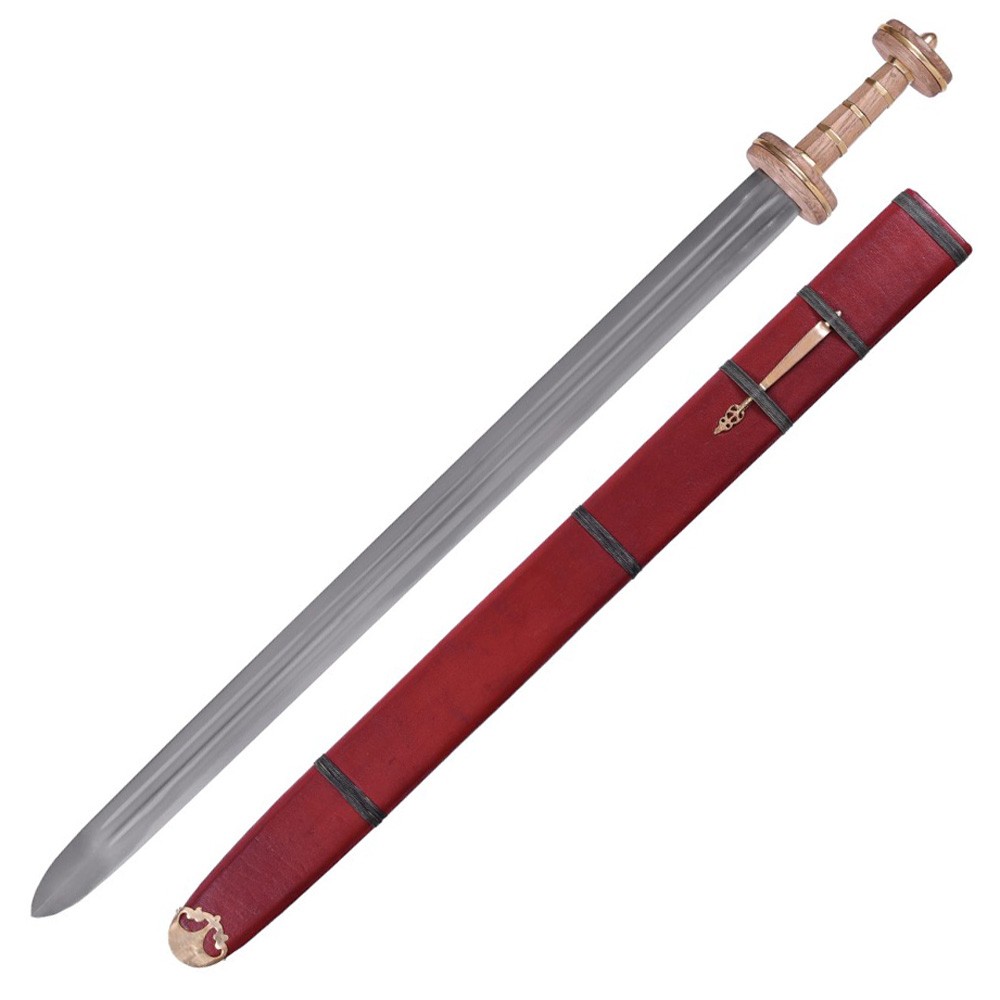
Versatility in Combat
Beyond its use on the battlefield, the Spatha was also employed in gladiator fights, demonstrating its adaptability in different combat scenarios. It is a sword that symbolizes not only the technical advancement in weaponry but also the rich military history of the Roman Empire.
| Characteristics | Description |
|---|---|
| Length | 75 - 100 cm |
| Design | Wide blade, double-edged |
| Grip | Carved wood with brass adornments |
| Scabbard | Wood and leather with brass ornaments |
Petersen's Typology is one of the most relevant systems in archaeology for the study of Viking swords. Introduced by Norwegian archaeologist Jan Petersen in 1919, this classification is recognized for focusing on the shape of sword hilts, allowing for an analysis of their historical evolution, manufacturing techniques, and their importance in Viking society. Although it has been revised and complemented over time, it remains an essential reference in the study of these iconic weapons.
Origin and Purpose of Petersen's Typology
Jan Petersen published his classification system in the work “Der Norsk Vikingesverd” (The Norwegian Viking Age Swords) in 1919. His main goal was to create a systematic method for analyzing and categorizing Viking swords based on the characteristics of their hilts. This approach allowed researchers to identify historical patterns, determine geographical origins, and better understand the evolution of Norse society.
Main Features of the Typology
1. Focus on Hilts
Petersen’s system is almost entirely centered on the hilts of the swords. This component encompasses the pommel, guard, and grip—elements whose design varied significantly depending on the period, region, and function of the weapon. The hilts not only contained technical information about manufacturing but also revealed artistic and cultural aspects.
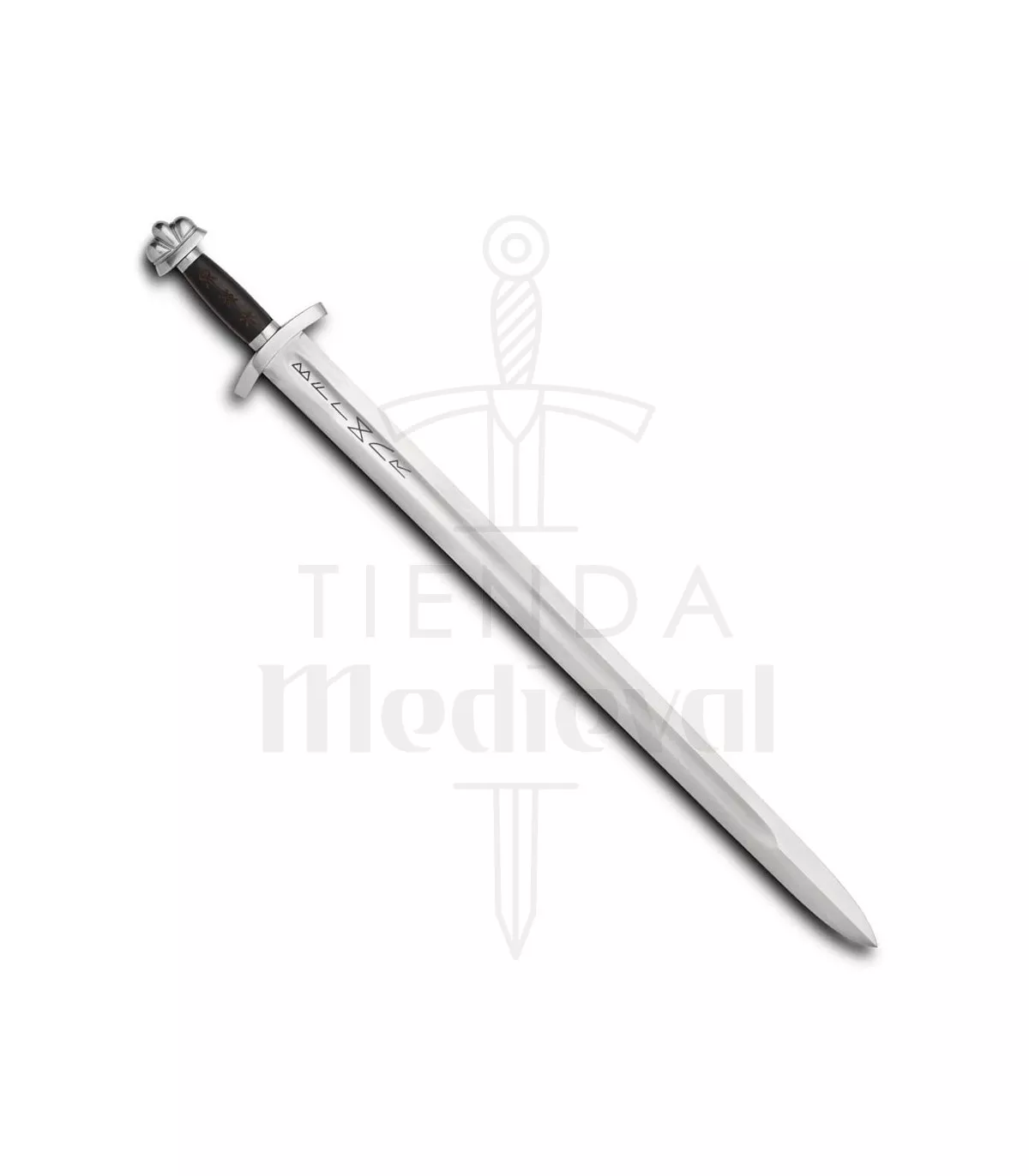
2. Morphological Classification of 26 Types
Petersen developed a classification with 26 categories designated by uppercase letters from A to Z. Each type is defined by specific details in the shapes and sizes of the hilt’s components. This methodological organization is still widely used by archaeologists and ancient weapons experts across Europe.
3. Historical Context
Beyond being a mere categorization scheme, Petersen used swords as tools to study the evolution of Viking society. Through the similarities and differences in the hilts, better insights were gained into trade, cultural influences, and technological development in early medieval Europe.
Adaptations to the Original System
Although Petersen's classification is detailed, its complexity posed challenges for some researchers. In 1927, archaeologist Sir Robert Eric Mortimer Wheeler proposed a simplified version, reducing the number of types to just nine. This adaptation made it easier to use for broader analyses while retaining the essence of the original system.
Significance and Limitations of the System
Significance
- Petersen's Typology remains the primary framework for studying Viking swords, providing a standard for comparing archaeological findings in different regions.
- It has enabled researchers to date findings more precisely, contributing to the chronological understanding of the Viking Age.
- It offers valuable information about manufacturing techniques, uses, and the symbolism of swords in Viking culture.
Limitations
- The exclusive focus on hilts overlooks important aspects such as blade decorations, inscriptions, and material analyses.
- This bias has encouraged other researchers to develop complementary systems focusing on the blade or integrative characteristics of the entire weapon.
- Its usage demands a detailed understanding of Petersen's original work, making it sometimes difficult for beginners to apply.
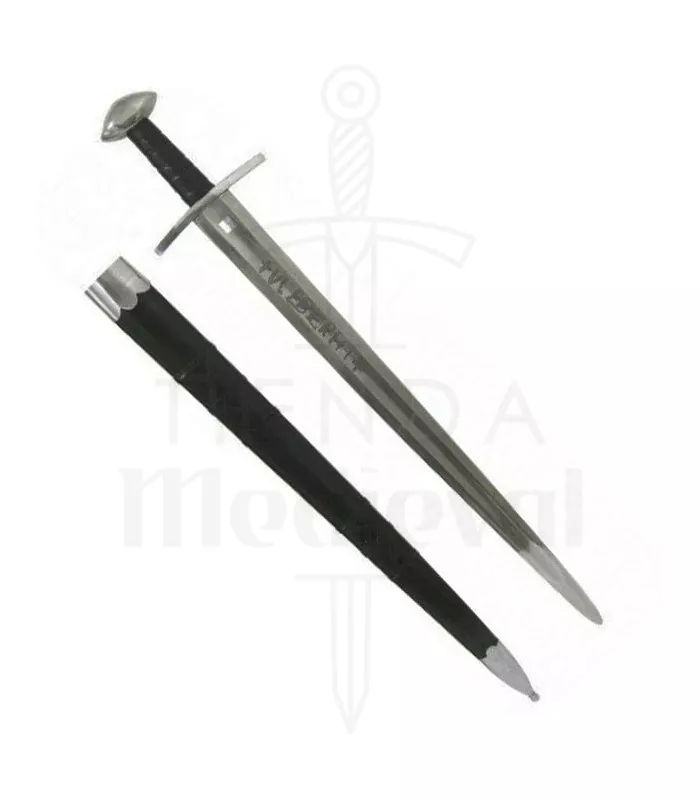
Impact on the Study of Viking Weapons
Despite its limitations, Petersen's Typology has revolutionized the archaeology of weapons. Thanks to this tool, researchers have been able to uncover not only the technical evolution of Viking swords but also the social and cultural aspects associated with their use. Its influence endures today, inspiring complementary research and systems that enrich our knowledge of the Viking world.
The rapier is one of the most emblematic weapons of the European Renaissance, standing out not only for its functionality but also for its aesthetic refinement and its symbolism in the society of the time. This type of sword, used mainly between the 16th and 17th centuries, transcended its defensive purpose to become a fashion accessory and a symbol of social status.
What is a Rapier?
The rapier was a sword designed for civilian, non-military use. The term encompassed any sword that was integrated into daily attire, regardless of the design of its blade or hilt. Unlike military swords, these were lighter, more stylish, and designed for self-defense or dueling, making them an elegant addition to everyday clothing.
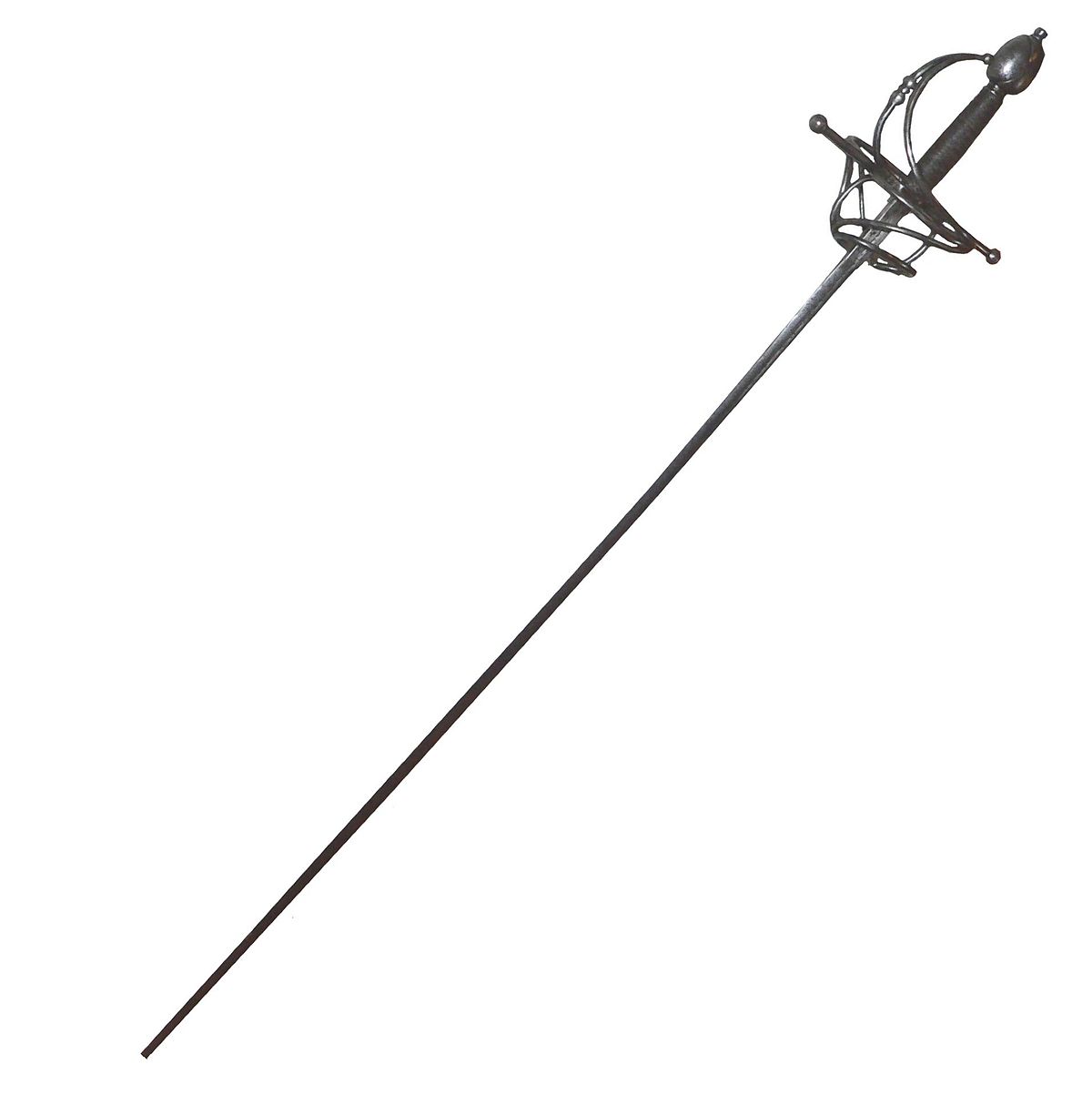
The Origin of the Term
The term "rapier" has sparked debates regarding its etymology. While many authors associate it with a Spanish origin, some support a link to the French word "rapière." Interestingly, in 16th-century English, "rapière" was translated as "Spanish sword," reinforcing the potential Spanish connection. However, some academic perspectives place the Spanish origin on equal footing with the Italian, recognizing the influence of both countries in the design of these weapons.
Its Role in Society
Rapiers were, first and foremost, civilian weapons used for personal defense in urban settings. They were part of fashion and worn daily as an accessory, distinguishing themselves from war swords by being lighter and less offensive in character.
- Personal defense: useful in duels or dangerous situations.
- Fashion: a symbol of status and elegance for the upper and middle classes.
- Non-military tool: especially popular among citizens of Renaissance cities where insecurity could demand quick self-defense.
Common Misconceptions
The term "rapier" has often been misinterpreted, particularly in English-speaking countries. It is frequently applied erroneously to any sword from the 16th or 17th century, especially those with ornate hilts and slender blades. However, not every sword from this era can be identified as a rapier, as its original definition refers primarily to its use rather than specific characteristics.
Variety and Synonyms
In historical documents, alternative terms for rapiers include:
- Gallant's sword: associated with refinement and elegant men.
- Girdle sword: referring to its position in clothing.
- Ribbon sword: another name that alludes to how it was worn.
These names paint a comprehensive picture of the multiple interpretations of this type of sword during its time.
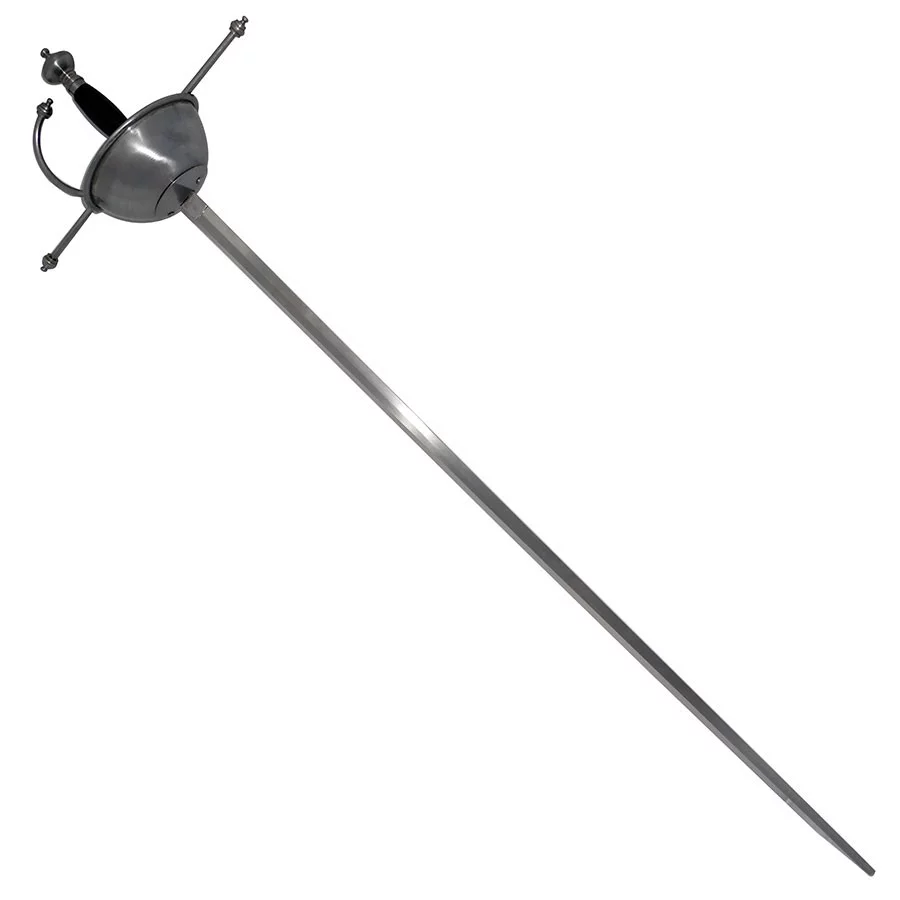
Technical Characteristics and Design
There was no unique design for rapiers. They often differed based on the personal preferences and economic capacities of their bearers. Some of the most common characteristics were:
- Blade length: from 90 to 130 cm.
- Weight: around 1 kg, lightweight compared to other swords.
- Balance point: located 8 to 15 cm from the hilt.
- One-handed use: allowing combination with items like bucklers, daggers, or cloaks.
- Aesthetic variety: hilts decorated in minimalist or extravagant styles, and blades that could vary in width.
Cultural Impact
Beyond its functionality, the rapier played a significant role in the cultural imagination of the Renaissance. For the upper classes, it symbolized not only power and defensive capability but also refinement and distinction. In an urban context where insecurity was frequent due to unemployment and precarious conditions, this civilian weapon became indispensable for the middle and upper classes.
| Attribute | Description |
| Use | Personal defense and fashion accessory |
| Length | 90-130 cm |
| Weight | A little over 1 kg |
| Balance point | 8 to 15 cm from the hilt |
| Design | Wide variety in hilt and blade |
The rapier, with its blend of functionality, design, and symbolism, remains a testament to the ingenuity and social dynamics of the Renaissance, marking an era both in fashion and urban fencing.
The baldric is a historical piece that stands out for its functionality and design, associated with the transport of weapons, particularly swords, during the 16th and 17th centuries. This accessory, beyond its utility in military equipment, represents a cultural element that combines practicality with aesthetics, even reflecting the social status of those who wore it.
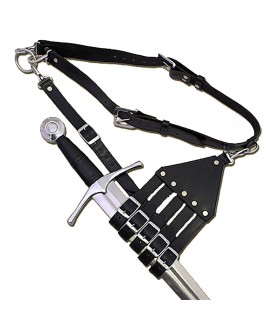
What is a Baldric?
The baldric is an accessory designed to support and carry swords. It is defined as the structure from which the straps (bands or belts) hung, connecting the sword to the belt or girdle. In this way, this accessory fulfilled both support and accessibility functions, ensuring the weapon was ready to be used at any moment.
Function of the Baldric
Throughout history, the baldric played an essential role for soldiers, knights, and armed civilians. Its design allowed the sword to be carried comfortably, securely, and accessibly. This practicality translated into greater efficiency during confrontations or ceremonies, where the sword also held symbolic value.
How was the Baldric Made?
The making of the baldric was entrusted to harness makers or specialized artisans, ensuring high quality and precision. Metal elements such as buckles and hooks, essential for connecting the baldric to the girdle, were often produced by skilled swordsmiths. This division of labor ensured durable and functional products.
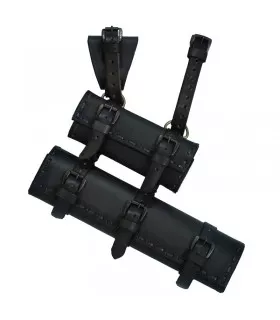
Materials Used
Baldric materials varied depending on the economic level and social position of the wearer. Among the most prominent materials are:
- Leather: Frequently used, varieties like cowhide, kidskin, or cordovan were employed.
- Velvet and silk: In more luxurious models, the leather could be lined with these fabrics, enhancing its aesthetic appeal.
- Sea wolfskin or suede: Less common but valued in decorative or exclusive pieces.
Decoration and Personalization
In addition to its practical function, baldrics were also a reflection of fashion and social status. Decoration played a significant role, which could include features such as:
- Gold stitching and braiding.
- Engravings in floral or geometric patterns.
- Gold- and silver-plated hardware.
- White studs, bluing, or striped effects.
These intricate decorations were a symbol of prestige, especially among military and civilian elites. In some cases, the straps and girdle associated with the baldric were also decorated to maintain design consistency.
Relationship with the Strap
It's common to find some confusion between the baldric and the strap. While the former was connected to the belt or girdle, the strap was a leather band that crossed the chest and hung from one shoulder, suspending the sword at the side. This suspension method, of Arabic origin, was sometimes used as an alternative to the baldric.
A Multifaceted Element
The baldric was not merely a functional accessory; its design and use transcended the practical, turning it into an indicator of social rank and the lifestyle of its era. Whether on the battlefield or in ceremonial occasions, the baldric was as useful as it was aesthetic.
| Characteristics | Description |
| Function | Support for swords, attaching them to the belt. |
| Materials | Leather, velvet, silk, among others. |
| Decorations | Stitching, metal braids, engravings, and studs. |
Excalibur Sword is one of the most iconic artifacts in literary and folkloric traditions, deeply tied to the figure of King Arthur and Arthurian legends. Often regarded as a symbol of power, legitimacy, and transcendence, its story is shrouded in mystery and has evolved over centuries through oral storytelling, medieval texts, and modern reinterpretations.
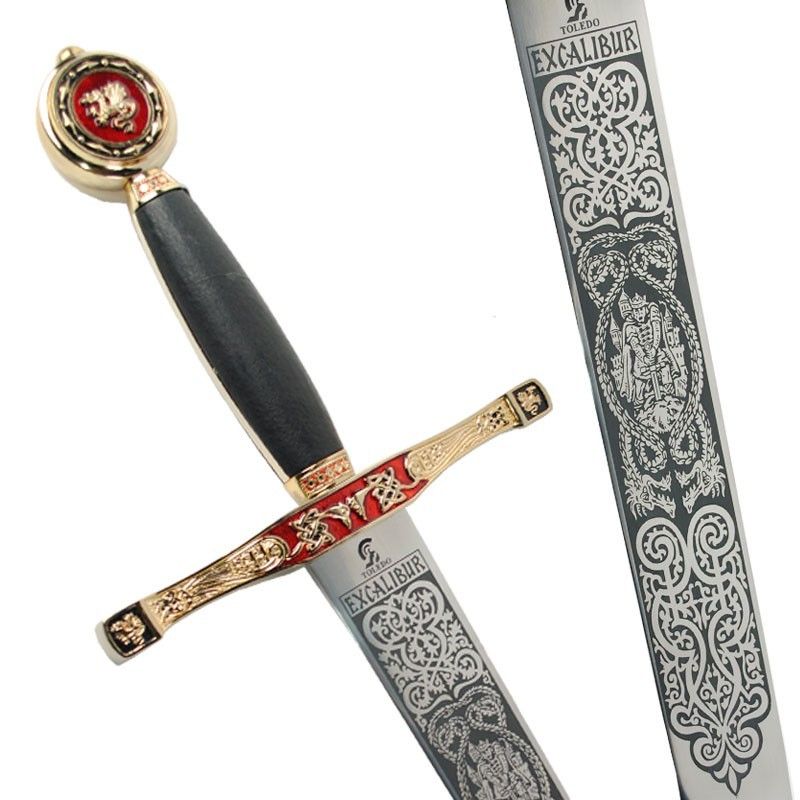
Whose Sword Was Excalibur?
King Arthur and the Legend of Excalibur
The Excalibur sword is primarily associated with the legendary King Arthur, who led the Knights of the Round Table in their crusade for justice and the protection of the kingdom of Camelot. According to the most well-known literary traditions, Arthur was not only chosen to wield this grand weapon, but his bond with it marked his destiny as a legitimate sovereign.
Excalibur should not be confused with the "Sword in the Stone," although in some versions both swords are connected. The most widespread legend says that Excalibur was given to Arthur by the Lady of the Lake, a mystical and immortal water dweller, who emerged to deliver the sword as a symbol of Arthur's divine legitimacy.
How Did Arthur Obtain Excalibur?
There are several versions of how Arthur came to possess Excalibur. Among the most accepted narratives are:
- Merlin, the wise mentor and wizard, forged Excalibur on the magical island of Avalon. According to this tale, the sword was reserved for a ruler worthy of leading and protecting their people.
- In an alternate version, Arthur received Excalibur after losing his original sword in a duel against Sir Pellinore. The replacement of the weapon marked an important moment in the consolidation of his role as a leader.
Both stories align in associating the delivery of Excalibur with mythical and supernatural approval, reinforcing the idea that Arthur was the chosen and rightful king.
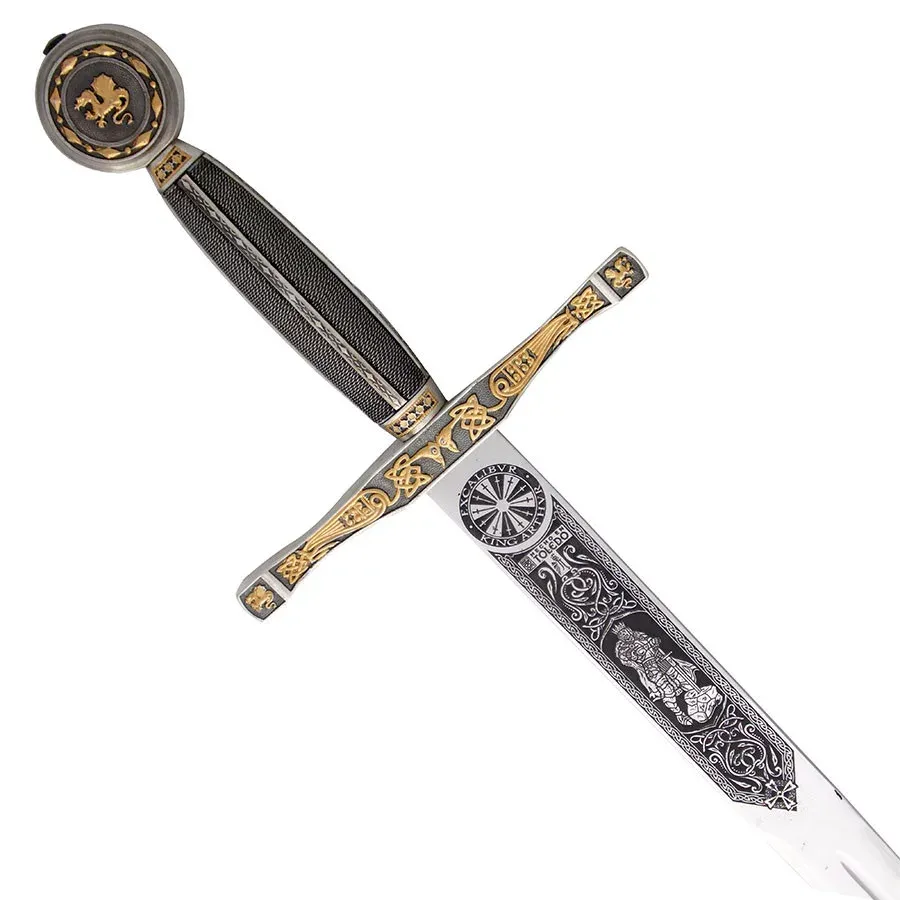
Magical Properties of Excalibur
Excalibur was not just an ordinary sword; the stories tell of magical characteristics that made it extraordinary. Among the most notable properties are:
- Superior cutting ability: It was said that Excalibur could cut through any material, even the most resistant, making it an unbeatable weapon.
- Invulnerability for its bearer: The bearer of Excalibur benefited from magical invincibility, rendering Arthur an almost indestructible warrior.
- The magical scabbard: Beyond the sword itself, Excalibur’s scabbard was of incalculable value, as it had healing properties and protected against mortal wounds.
The Disappearance of the Sword
Like many legends, the story of Excalibur concludes with a mystical ending. After Arthur's final battle at Camlann, where he faced his son Mordred, Arthur was mortally wounded. On his deathbed, he asked one of his loyal knights, generally identified as Sir Bedivere, to return Excalibur to the lake from which it had emerged.
After throwing the sword into the water, the legend tells of how a feminine hand, cloaked in white silk, emerged from the lake to seize the sword before disappearing into the depths. This act marked Excalibur's return to a realm beyond the human, preserving its mythical nature.
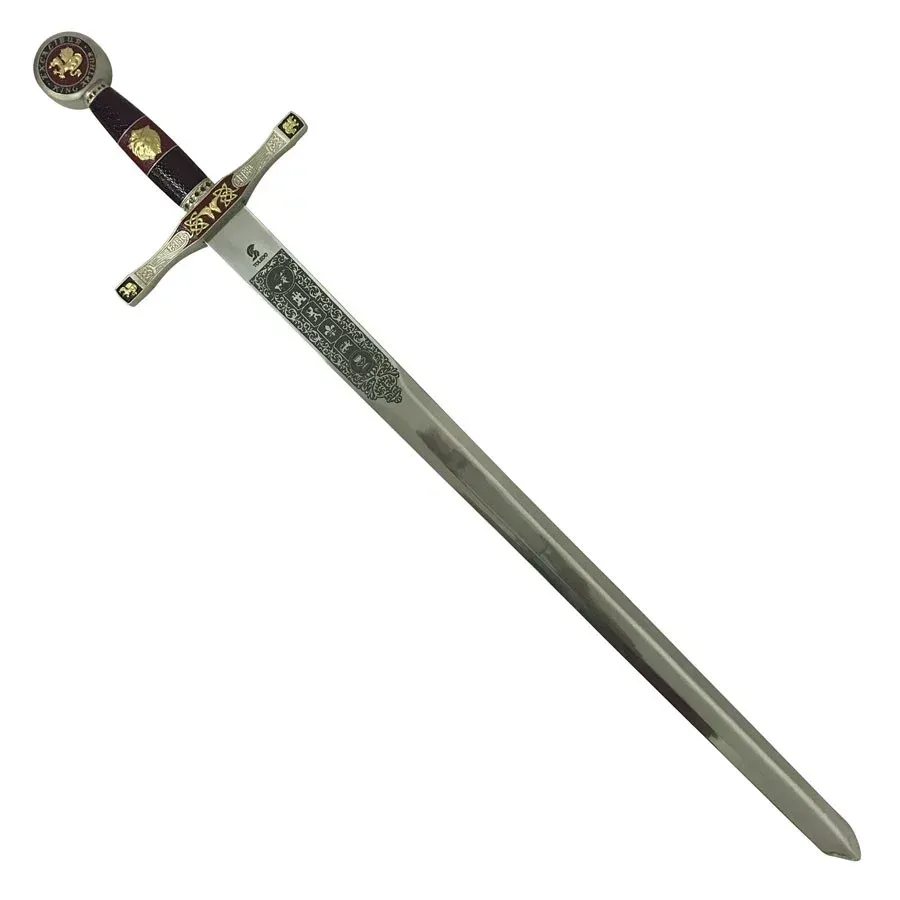
Cultural Impact and Legacy
The myth of Excalibur transcends time and has left an indelible mark on popular culture. It has been represented in countless texts, films, series, video games, and art, becoming a symbol of power and justice.
Although there is no archaeological evidence of its real existence, Excalibur continues to fuel the collective imagination as an emblem of heroism and nobility linked to the myth of King Arthur. Its presence in medieval accounts and its reinterpretation in modern literature have ensured its place as one of the most recognizable elements of Western mythology.
| Attribute | Description |
| Giver | Lady of the Lake |
| Properties | Unbeatable cutting, invulnerability, healing scabbard |
| Final fate | Returned to the Lake (guarded by the Lady of the Lake) |
| Legacy | Symbol of heroism and justice |
The legend of Excalibur is not just a tale of sword and magic but a narrative that encapsulates universal values such as legitimacy, bravery, and sacrifice. Much like King Arthur, its legacy endures the passage of time, reminding us of the timeless resonance of great legendary stories.
The Claymore sword is one of the most iconic symbols of Scottish medieval history. Known for being one of the most impressive and lethal weapons of its time, this two-handed sword is associated with the bravery of Scottish warriors and their historic battles. Throughout this article, we will explore its origin, characteristics, service history, and relevance in the modern world.
Origin and Meaning of the Name
The term "Claymore" comes from the Scottish Gaelic "claidheamh mòr", which translates to "great sword" or "big sword." Another term used is "claidheamh dà làmh", meaning "two-handed sword." These names highlight its imposing size and design, which was intended for two-handed combat—a key innovation in medieval battles.
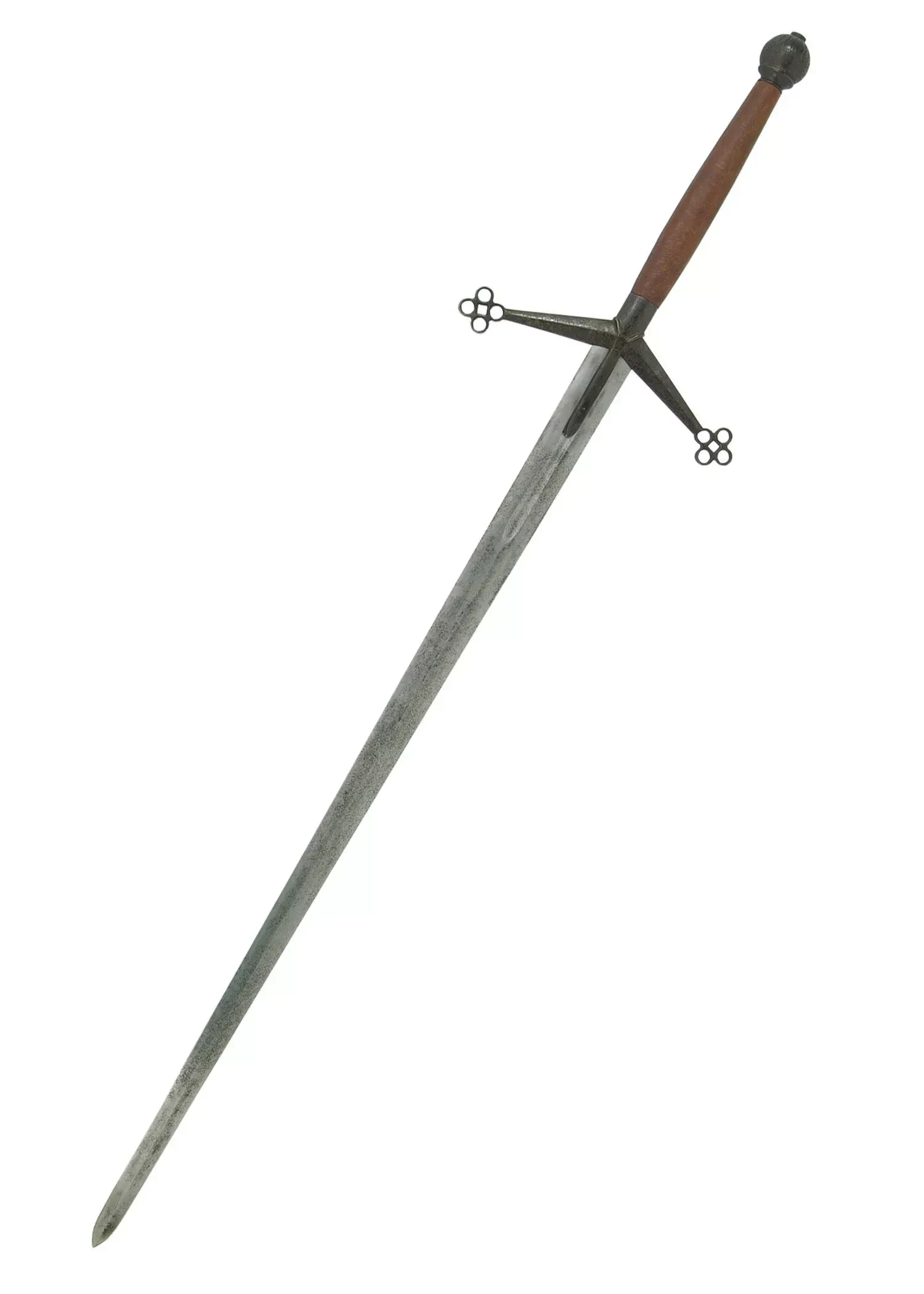
Main Characteristics of the Claymore Sword
- Design and Construction: The Claymore is a double-edged sword designed to be wielded with both hands. Its characteristic long hilt allows for greater control, while the guard in the shape of an inverted cross provides a powerful quillon that blocks and deflects enemy attacks.
- Length and Weight: On average, the sword measures 1.5 meters and weighs between 1.5 and 2 kilograms. However, some extremely large versions could reach up to 2.24 meters in length and weigh approximately 10 kilograms. This size made it especially intimidating on the battlefield.
- Manufacturing Materials: Most Claymores were forged from high-quality steel, ensuring superior strength. Additionally, many of these swords included decorations inspired by Scottish culture, such as Celtic crosses and rampant lions. These ornaments reflect both the artistry and warrior spirit of Scotland.
A Glimpse into its History
The Claymore sword played a prominent role in the armed conflicts of the Middle Ages, particularly in battles between Scotland and England during the 13th century. It was the weapon of choice for Scottish clans, known for their courage and combat prowess. A notable historical example is the sword associated with William Wallace, the Scottish hero who led the revolt against Edward I of England. Wallace is famously remembered for wielding a greatsword that symbolized both his determination and the resilience of the Scottish people.
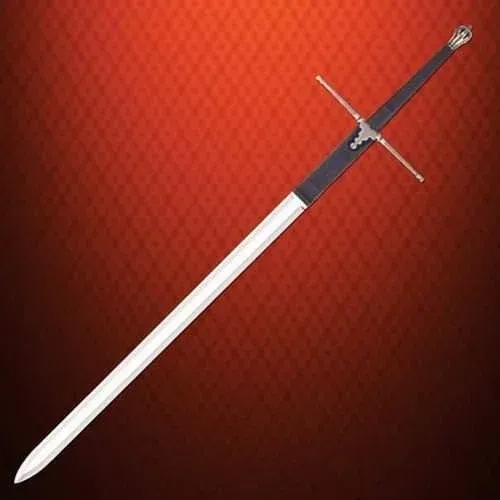
Use in Combat
The design of the Claymore made it ideal for close combat. Its cross-shaped guard allowed warriors to easily block enemy attacks, while its double-edged blade provided a lethal advantage. This combination of defensive and offensive strength made the Claymore a feared weapon on the battlefield. Moreover, its large size and weight required skill and strength, meaning those who wielded it were truly experts.
The Claymore in Modern Times
Today, the Claymore sword has transcended its original function as a weapon to become a decorative and cultural element. Many modern replicas are made of carbon steel, combining functionality and aesthetics. These reproductions are highly valued by collectors, medieval history enthusiasts, and lovers of historical weaponry.
Additionally, the Claymore remains a symbol of resilience and national pride in Scotland, appearing in ceremonies, films, and historical events as a representation of the Scottish cultural legacy.
Comparative Table: Classic and Modern Specifications
| Feature | Classic Claymore Sword | Modern Claymore Sword |
| Material | Forged steel | Carbon steel |
| Length | 1.5 – 2.24 meters | 1 – 1.5 meters |
| Weight | 1.5 – 10 kg | 1 – 3 kg |
| Use | Combat | Decorative and functional |
The Claymore sword is not just a relic of the past but also a living legacy that connects us to the history and culture of Scotland. Thanks to its unparalleled design, it continues to inspire admiration worldwide. Its symbolism, combat effectiveness, and aesthetic value make it one of the most emblematic weapons of the Middle Ages.
The Durandal Sword, also known as Durandarte, is one of the most fascinating artifacts in medieval history. Associated with the legendary paladin Roland, nephew of Charlemagne, this sword has been the protagonist of countless legends and epic tales. Its story combines mythology, religion, and historical facts, captivating generations of readers and researchers alike.
Legendary Origins of the Durandal Sword
According to literary accounts and historical traditions, the Durandal Sword was given to Roland by Charlemagne himself as a symbol of his knighthood at the early age of 17. This gift not only highlighted Roland's merits but also imbued the sword with an almost sacred character due to the relic objects it contained:
- A tooth of Saint Peter, one of Jesus' apostles.
- Hair and blood of Saint Basil, a prominent saint of the Christian Church.
- A fragment of the Virgin Mary's mantle, symbolizing divine protection.
Durandal was not merely a weapon but a symbol of Christian faith and Charlemagne's mission to expand his empire and religion in medieval Europe.

The Heroic End of Roland and the Sword's Fate
The legend of Durandal is closely tied to the heroic death of Roland in the historic Battle of Roncevaux Pass, which took place on August 15, 788. During this battle, Roland used the sword until the final moment to defend his army from an ambush led by Basque tribes. However, the aftermath of the battle left multiple versions of what happened to the sword after his death:
- One of the most popular legends suggests that Roland, to prevent Durandal from falling into enemy hands, threw it into a lake, specifically Lake Carucedo. It is said that the sword remains submerged there, hidden from human sight.
- Another version of the story claims that Bernardo del Carpio, a celebrated Leonese knight, defeated Roland and took possession of the sword. Later, he supposedly buried it in Peña Longa, from where it was retrieved by Charles I.
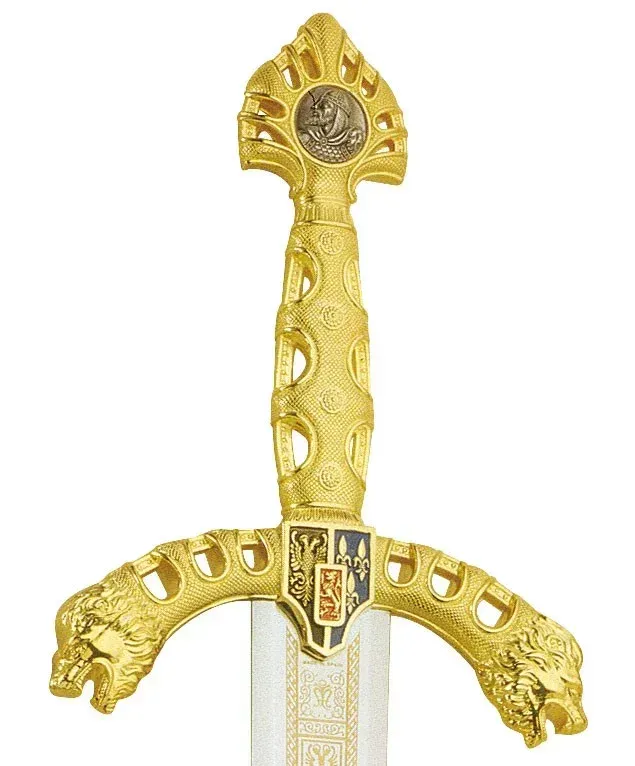
Durandal and the Rocamadour Sanctuary
No less intriguing is the legend that places Durandal embedded in the rock of the Rocamadour Sanctuary in France. According to this version, Roland, overwhelmed by his enemies and near death, drove the sword into a cliff so that it could never be used by opponents. Although this narrative was possibly a propaganda strategy promoted by the sanctuary’s monks, the embedded sword has become a prophetic symbol that continues to attract pilgrims and curious visitors.
Durandal in Literature and Popular Culture
The impact of the Durandal Sword transcends history and oral tales. This mythical artifact has been immortalized in classic works such as "The Song of Roland" and "The Lay of Roncevaux," stories that have helped forge the legend of Roland as one of the most heroic knights of medieval tradition. In these accounts, Durandal appears not only as a formidable sword but as a symbol of loyalty, faith, and sacrifice.
Moreover, Durandal inspired later artistic, literary, and cultural creations, solidifying its place as an archetypal relic in medieval imagination.
An Artifact Lost in Time
To this day, the final destiny of the Durandal Sword remains a mystery. Is it truly submerged in a lake, hidden in a cave, or does it simply exist as a literary tale? The uncertainties surrounding the location of this sword have not diminished the fascination it evokes, remaining a recurring subject of study for historians, archaeologists, and novelists alike.
| Theory | Description | Associated Location |
| Lake Carucedo | Roland threw the sword into the water to prevent it from falling into enemy hands. | Lake Carucedo, Spain |
| Peña Longa | Bernardo del Carpio buried it after defeating Roland. | Peña Longa, Spain |
| Rocamadour | Embedded in a rock by Roland in his final moments. | Rocamadour Sanctuary, France |
The Tizona Sword, one of the most emblematic pieces in Spain's history, is deeply rooted in the legend of Rodrigo Díaz de Vivar, the renowned Cid Campeador. More than a weapon, the Tizona is a symbol of the Reconquista and an icon of Spanish medieval culture. However, its history—blending myth, literature, and documented history—has been the subject of debates regarding its origin, authenticity, and ownership.
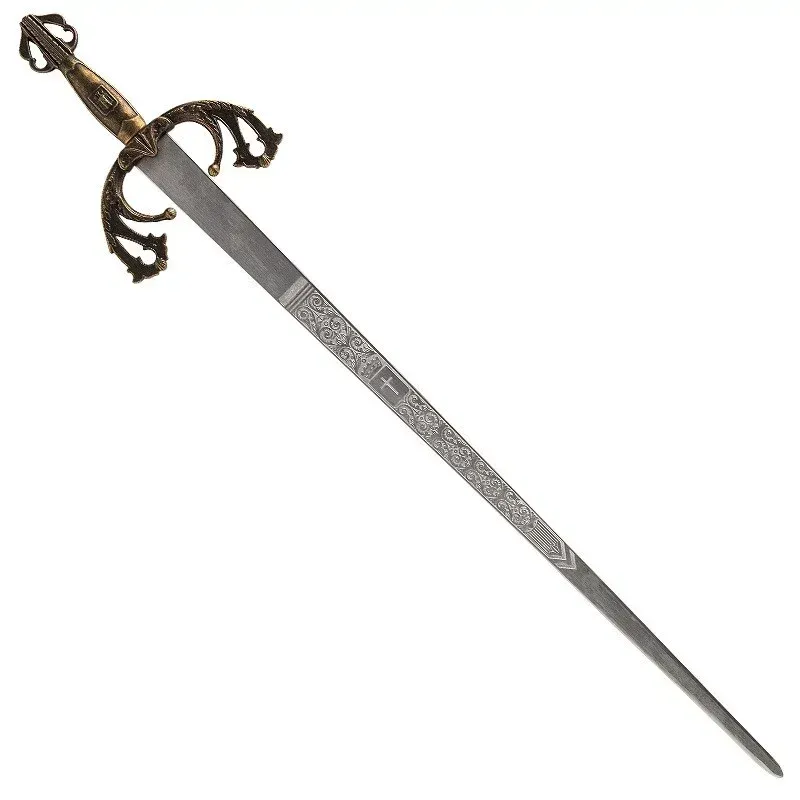
Origins and Attribution of the Tizona Sword
The Tizona is one of two swords attributed to the Cid Campeador, alongside the Colada. According to the "Cantar de Mío Cid," one of the earliest literary works mentioning this sword, Rodrigo Díaz de Vivar acquired the Tizona after defeating King Búcar of Morocco in Valencia. Later on, he gave it to the Infantes of Carrión as part of his daughters' marriages in an effort to strengthen family and political alliances.
However, it is important to note that the first written reference to the Tizona dates to at least a century after the Cid's death. This raises reasonable doubts about how much of its story is based on oral and literary accounts versus historical facts.
Historical Documentation of the Tizona
Technically, the Tizona makes its appearance in documentary records in 1503, when it was included in an arms inventory of the Alcázar of Segovia, conducted by Gonzalo de Bricio. This reference marked the beginning of its historical recognition beyond the literary framework.
Later, Fray Prudencio de Sandoval (chronicler of the Kings of Castile and León) noted that the sword came into the possession of the Marquises of Falces as a gift from King Ferdinand the Catholic in gratitude for their services. This adds an interesting element regarding its ownership in noble hands.
Controversies Over Ownership
The Tizona has been the subject of legal disputes that extended well into the 21st century. In 1987, a previous Marquis of Falces, Pedro Velluti de Murga, was declared the universal heir to the sword. However, in 2016, the Supreme Court of Spain ruled that another Marquis of Falces, José Ramón Suárez-Otero Velluti, was the sole legitimate owner of the sword, overturning previous decisions that granted shared rights to it.
This resolution was crucial not only to settle the debate over its ownership but also to ensure its preservation and public display as a piece of cultural heritage.
Final Destination and Preservation
In 2007, José Ramón Suárez-Otero Velluti sold the Tizona to a consortium of companies and a foundation, who subsequently donated it to the Community of Castile and León. Currently, the sword is displayed in the Museum of Burgos, where it can be visited by those wishing to see this historical treasure.
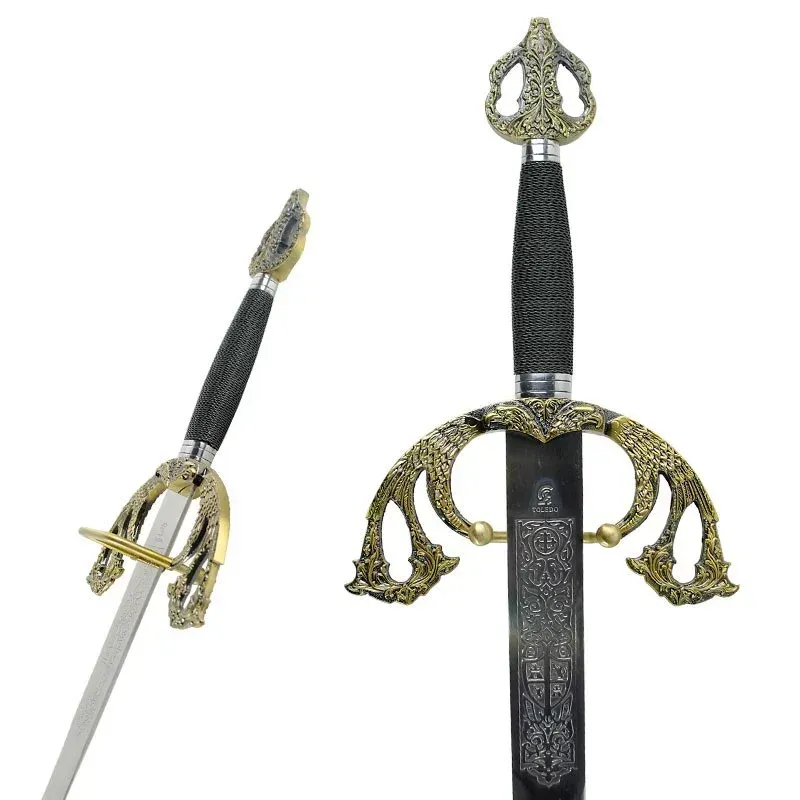
Features of the Sword
The Tizona is a weapon whose quality reflects both its purpose and its symbolic status. It has a total length of 93 centimeters, with a blade measuring 79 centimeters, possibly forged in Seville. Its Gothic-style hilt was added in the 15th century, indicating modifications made after its original creation.
The high-quality steel, attributed to Andalusian craftsmen, gives the Tizona unique properties, both aesthetic and functional, making it a masterpiece of medieval blacksmithing.
Cultural Significance
The Tizona transcends its nature as a physical weapon to become a symbol laden with cultural meaning. Its mention in the "Cantar de Mío Cid" ties it inseparably to the figure of the Cid Campeador, one of the most iconic heroes of the Spanish Reconquista. Additionally, the inscription on its blade, "IO SOI TIZONA FUE FECHA EN LA ERA DE MILE QUARENTA," reinforces not only its historical character but also its prestige as a relic of a turbulent and glorious era.
Technical Specifications
| Total Length | 93 cm |
| Blade Length | 79 cm |
| Hilt Style | Gothic |
| Material | Forged Andalusian steel |
The fascinating story of the Joyous Sword, also known as Joyeuse, intertwines myths, legends, and historical facts to create one of the most captivating narratives of medieval Europe. Attributed to Emperor Charlemagne, this sword was not only a weapon on the battlefield but also a symbol of authority and power that shaped centuries of history in France. Today, this emblematic sword can be admired at the Louvre Museum, though its authenticity remains a subject of academic debate.
History of the Joyous Sword
The Joyous Sword, according to chronicles, was created during the Carolingian period, between the 10th and 11th centuries AD. Although surrounded by numerous legends, it is believed to have been forged to serve as the personal sword of Charlemagne, the great emperor of the Holy Roman Empire. According to popular tales, Charlemagne wielded this sword in multiple battles during his reign, solidifying his image as an invincible leader.
Origins and Military Use
In the context of the Carolingian wars, possessing a sword like Joyeuse was essential for demonstrating power and inspiring troops. The sword stands out for its flat blade, sharpened on both edges, designed to be used alongside a shield in the opposite hand. It was said that Joyeuse was not merely a combat weapon but also a talisman with almost magical properties, including the ability to shine intensely, blinding enemies in battle.
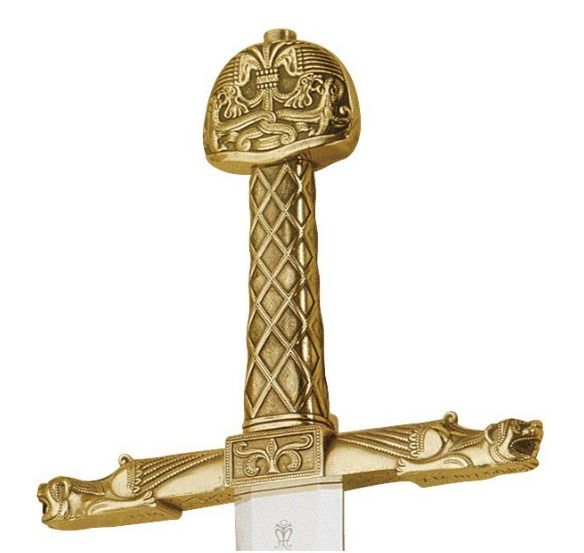
Loss and Recovery
One of the most famous stories about Joyeuse recounts how Charlemagne lost it during a battle. In a gesture of generosity and strategy, he promised land to the soldier who found it. The sword was eventually recovered in the region of Ardèche by a member of his army, who was rewarded with that territory. The emperor renamed the lands "Joyeuse" in honor of the sword.
Characteristics and Decoration
An Eclectic Design
The Joyous Sword is characterized by a mix of decorative styles from various European regions. Among its initial features were dragon engravings, which over time were replaced by other motifs, such as the fleur-de-lis, a symbol of French royalty. However, for the coronation of Napoleon Bonaparte, this decoration was removed.
The entirety of the sword is a work of art. The pommel is adorned with an intricate network of diamonds, while the hilt and cross showcase meticulous detail, including two stylized winged dragons. This rich ornamentation underscores its value as both a historical and artistic treasure.
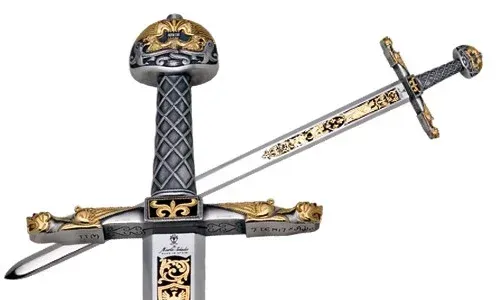
A Louvre Treasure
Since 1793, following the French Revolution, Joyeuse has been preserved at the Louvre Museum in Paris. Although there is controversy over whether the sword on display is the original, there is no conclusive evidence to support this claim. Its presence in the museum has made it a subject of great interest for both historians and visitors passionate about medieval history.
The Joyous Sword in Coronations
One of Joyeuse's most significant roles lay in its ceremonial use. From the coronation of Philip III in 1271 to that of Charles X in 1825, the sword was used as a symbol of the continuity of royal power in France. For long periods, the sword was kept in the Abbey of Saint-Denis, under the care of monks, undergoing several decorative changes throughout the centuries.

Legacy and Symbolism
Beyond the stories of its magical abilities, the Joyous Sword represents power and legitimacy in the French monarchy. Its association with Charlemagne granted it an almost mystical status, making it an essential piece in France's ceremonial traditions. Joyeuse has been evoked on multiple occasions as a symbol of the glory and grandeur of France's past.
Myths and Legends
Among the legends associated with the sword is the idea that it could reflect sunlight in a way that blinded its enemies. This myth, while difficult to confirm historically, has helped perpetuate its fame as a unique weapon and an emblem of invincibility for Frankish armies.
| Feature | Description |
| Ornamental Material | Diamonds, dragon engravings, and fleur-de-lis motifs |
| Museum | Louvre Museum, Paris |
| First Coronation | Philip III (1271) |
| Last Coronation | Charles X (1825) |
The bastard sword, also known as the hand-and-a-half sword, is one of the most iconic medieval weapons of Europe. Its unique design and versatility make it a standout tool for both battles and duels. This type of sword, which combines the characteristics of a short sword and a long sword, allows for use with one or both hands, offering flexibility in both attack and defense. Below, we delve into its origin, characteristics, design, and historical use in detail.
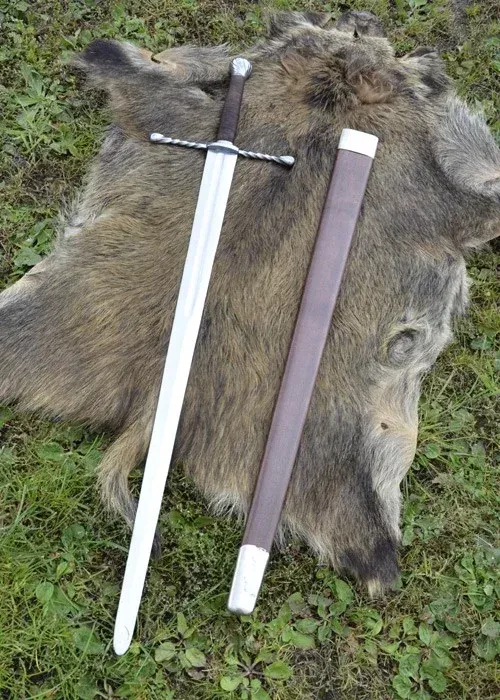
Origin and Etymology
The bastard sword first appeared in the late 13th century and remained in use until the mid-16th century. Its name derives from the "hybrid" nature of this weapon, as it combines elements of two-handed swords, which are longer and heavier, with short swords, which are lighter and more maneuverable. In some historical texts, it is also referred to as a "hand-and-a-half sword," highlighting its ability to be wielded either with one hand or both.
During its heyday, it was highly valued on battlefields and in tournaments, used by both knights and mercenaries due to its adaptability to the challenges of hand-to-hand combat or organized group battles.
Characteristics of the Bastard Sword
- Long, Straight Blade: Its straight, sharp blade enables efficient cuts and precise thrusts. This feature made it ideal against enemies with light armor or no protection.
- Adapted Grip: The grip of the bastard sword is longer than those of other short swords, allowing for a two-handed hold that provides greater power in strikes.
- Resilient Materials: Made of high-carbon steel, these swords were notable for their durability and resistance to heat, impact, and wear.
- Battlefield Versatility: In addition to being used as a sword, it could also be employed to strike with the guard, pommel, or even as a spear in certain tactical situations.
- Advanced Technique: Its handling required skill, utilizing technical stances from the era such as "the cat," "the knight," and "the lady." Additionally, attacks with the pommel or guard added a wider array of combat strategies.
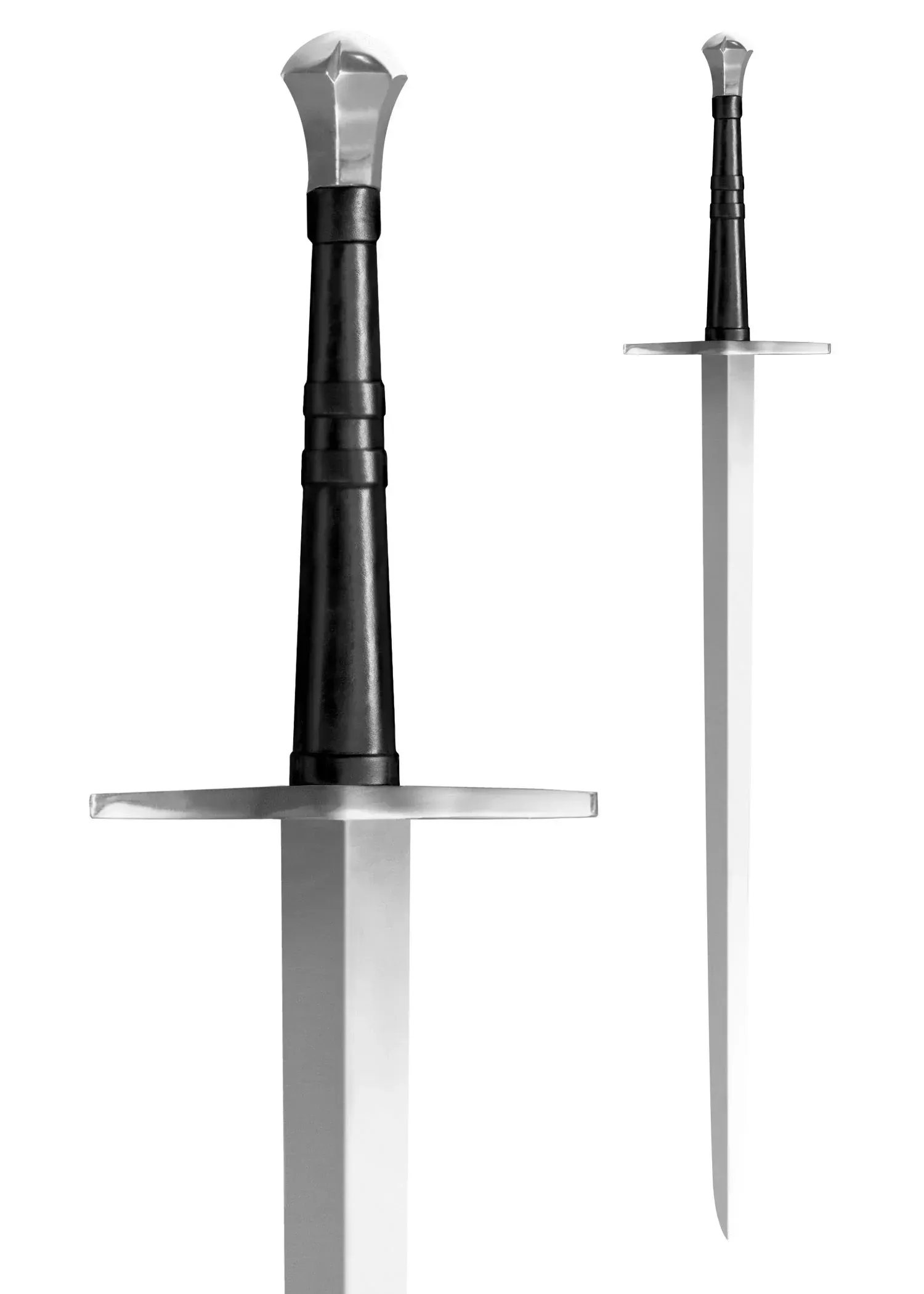
Design and Structural Details
The design of the bastard sword reflects both functionality and aesthetics. Below, we outline the details that define this weapon:
- Grip: Usually covered in black leather, it measures around 17 cm and features a steel spacer ring that facilitates two-handed handling. This design increases stability during strikes.
- Pommel and Guard: Both elements were often aged to provide a rustic and authentic appearance. They served a dual purpose as decorative features and functional components for balance and protection.
- Sheath: To protect and transport the sword, the sheaths were decorated with steel details, combining utility and style.
Historical Use on the Battlefield
The bastard sword played a crucial role in historical conflicts, especially during the 15th and 16th centuries. Its popularity spread throughout Western Europe, particularly in battles such as the famous Battle of Bosworth, where it was used by both the House of York and the House of Lancaster. Its versatility and adaptive design made it an indispensable weapon for both individual skirmishes and formation combat.
Beyond its role in war, this type of sword was also employed in duels and knightly training. Some treatises from the era recount its strategic use, often taught under the guidance of experienced masters-at-arms.
Highlighted Elements
| Element | Description |
| Blade | Long, straight, and double-edged. |
| Grip | Adapted for one-handed or two-handed use. |
| Pommel | Functional and decorative counterweight. |
| Material | Made of high-carbon steel. |
| Versatility | Suitable for attack and defense in various strategies. |
The alfanje is an iconic sword that arises from the cultural fusion of the Iberian Peninsula, serving as a testament to the exchange of knowledge between Muslim and Christian civilizations. Its name, derived from the Hispano-Arabic "al-janyar," meaning "the dagger," reflects its roots in Muslim culture and its use as a combat tool throughout past centuries.
Origin and Etymology
The term "alfanje" has deep roots in the linguistic and cultural history of the Iberian Peninsula. Derived from Hispano-Arabic, this word is evidence of the contact between Islamic and European cultures. Alfanjes were widely employed from the Middle Ages to the Renaissance, with their use spreading across the Mediterranean and particularly in Italy.
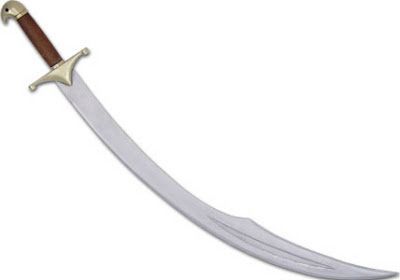
Characteristics of the Alfanje
-
- Wide and Curved Blade: This is one of the most distinctive features of the alfanje. This characteristic not only gives it a majestic appearance but also optimizes its use for effective cuts. Its structure is ideal for delivering decisive slashes, making this sword a preferred weapon in armed combat.
- Edges: The alfanje typically has a single-edged blade, but in some designs, the back edge extends into its last third, allowing for additional versatility in handling.
- Historical Use: Throughout its extensive history, the alfanje has been a constant ally in battle for warriors from various cultures. During the time of the Muslim conquest, it was introduced to the Iberian Peninsula, where it quickly adapted to new tactics and wartime needs.
- Regional Variations: Although primarily recognized as a combat weapon, in certain regions of Mexico, the term "alfanje" is still used to describe an agricultural tool meant for cutting weeds, demonstrating its semantic longevity and adaptability.
Comparison with Other Weapons
The alfanje is often compared to the European falchion, a sword that is also curved but comes from a different heritage. While the falchion has its roots in seax and scramasax weapons, the alfanje reflects a design with greater Eastern influence. This distinction underscores the cultural richness and diversity of influences that characterize each of these weapons.
Importance in the Iberian Peninsula
During the Muslim conquest of the Iberian Peninsula, the alfanje was introduced by the Moors, who brought with them a vast collection of weapons and combat techniques. The alfanje, in particular, was quickly absorbed by Christian warriors, who appreciated its effectiveness in close combat.
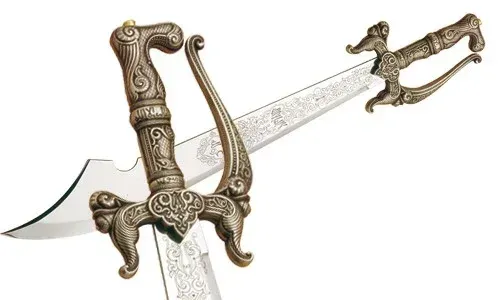
Cultural References
Throughout history, the alfanje has appeared in various literary and artistic works, prominently featured in Renaissance poetry. Examples include poetic verses that honor and evaluate its unique design, celebrating both its utility and the complexity of its craftsmanship. Phrases such as "I didn't mean to say alfanje, / because if I named it alfanje / without mentioning the Damascus, / the alfanjes would be angered" illustrate its prestigious position in Renaissance literature.
Cultural and Technical Impact
The history of the alfanje is both a narrative of military technology and a living cultural story. Its evolution and adaptability reflect not only the pragmatic need of societies to defend themselves but also their capacity to integrate and refine foreign influences into something unique and powerful.
There is a world of meanings and uses behind every defined arc that the alfanje presents. This weapon is not merely a war artifact but a legacy of human interaction and its constant adaptations to new times and cultures.
The Templar swords and Viking swords are two of the most emblematic and iconic weapons in history, each deeply rooted in its respective culture and era. Both swords share significant symbolic and functional importance for the warriors who bore them. In this analysis, we will explore the differences and similarities of these swords regarding their origin, design, technical features, symbolism, and functionality.
Origin and Culture
Templar Swords- Origin: The Templar swords arise from the Order of the Temple, a military and religious order founded in the 12th century during the Crusades. The Knights Templar were known for protecting pilgrims on their journeys to the Holy Land.
- Culture: They symbolized the status and commitment of the knights, who were known for their bravery and loyalty to the order. The swords were not only tools of combat but also symbols of honor and duty.
- Origin: Viking swords have their roots in Scandinavian culture, used by Viking warriors between the 8th and 11th centuries. Their earliest recorded raid was in the year 793, marking the beginning of a nearly 300-year Viking era.
- Culture: Vikings revered their swords, believing they would accompany them in the afterlife in Valhalla. The blacksmith was a mystical and highly respected figure for his ability to forge these exceptional weapons.
Design and Technical Features
Templar Swords- Design: They are characterized by a straight blade, a cross in the shape of a Latin cross, and a pommel adorned with symbols specific to the Order of the Temple. The handle is meticulously crafted, reflecting attention to detail and craftsmanship.
- Materials: The blades are made of high-quality steel, while the pommels and guards are made of metals such as brass or stainless steel, providing durability and strength.
- Design: These swords are up to 80 cm long and have a double edge, with a more rounded tip than Gladius swords. This morphology makes them primarily suitable for cutting.
- Materials: Crafted with ancient techniques, often using wootz steel, which made them three times stronger, more flexible, and more resilient than other swords of the time.
Symbolism and Functionality
Templar Swords- Symbolism: The swords represented the faith and religious commitment of their bearers. They incorporated inscriptions and decorations that reflected the honor and bravery of the Templar knights.
- Functionality: Beyond being combat weapons, they symbolized the status and skill of the knights in battle, as well as represent a spiritual bond with their mission.
- Symbolism: They were signs of power and status among Viking warriors. The belief that they would accompany the bearer on their journey to Valhalla testified to their deep cultural significance.
- Functionality: Their versatility in combat was manifested in their double-edged design, making them effective for cutting and attacking with great precision.
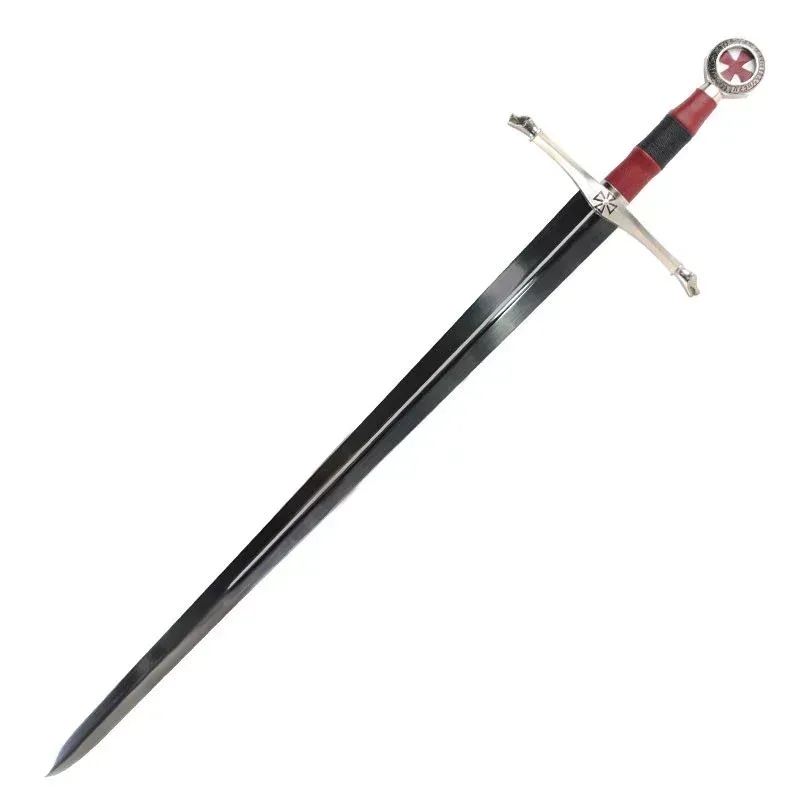
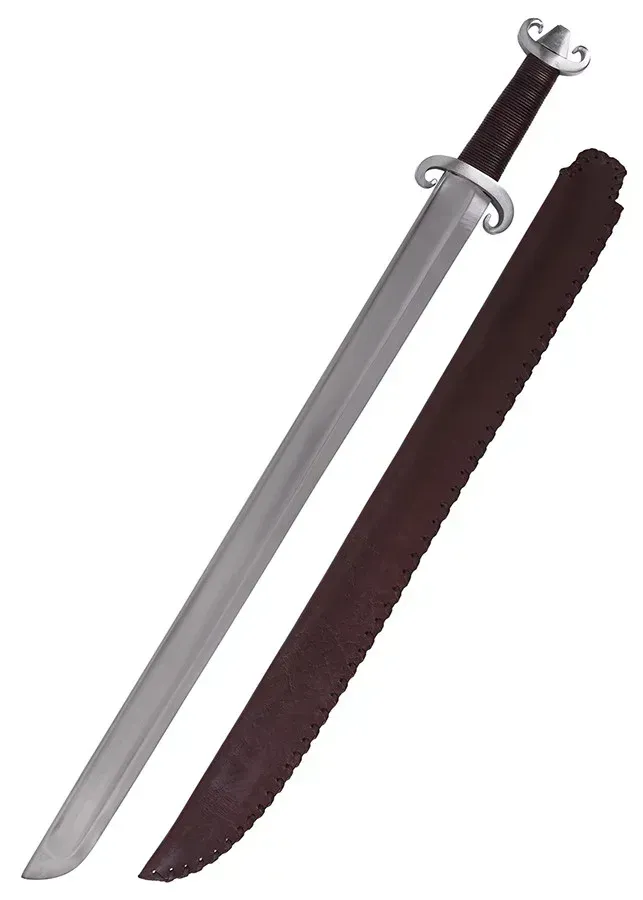
| Aspect | Templar Swords | Viking Swords |
|---|---|---|
| Origin | Order of the Temple, 12th century | Scandinavian culture, 8th-11th century |
| Culture | Meaning of honor and duty | Symbol of power, belief in Valhalla |
| Design | Straight blade, Latin cross | Long and double-edged |
| Materials | High-quality steel, brass | Wootz steel, stronger and more flexible |
| Functionality | Combat, symbol of knights | Effectiveness in cutting and combat |
Both swords not only stand out for their functionality in combat but also for their profound cultural and spiritual significance. Framed in historical times of change and war, these violent weapons also tell stories of values, beliefs, and symbolism that resonate through the centuries.
The Curtana Sword, also known as the Sword of Mercy, is one of the most emblematic pieces within the regalia used in the coronations of British monarchs. Its symbolism and rich history have accompanied the kings and queens of England throughout the centuries, standing out as a reminder of power and mercy in the exercise of monarchy.
Description of the Curtana Sword
With a length of 96.5 cm and a handle width of 19 cm, the Curtana Sword is striking both for its size and its design.
Originally, its blade had a sharp point, but it was rounded and squared to symbolize mercy. This distinctive detail is a clear expression of its nickname, "Sword of Mercy." The blade features a decorative engraving known as "running wolf," a traditional design that originated in the city of Passau, located in Lower Bavaria, Germany.

Cyril Davenport (1848–1941), Public domain, via Wikimedia Commons
The handle of the sword is a masterpiece of gilded iron, complemented by a wooden grip elegantly wrapped in wire. The sheath, for its part, is made of leather adorned with red velvet and gold embroidery. It is noteworthy that the sheath we see today was created in 1937 and has been replaced several times since the 17th century.
History of the Curtana Sword
The history of the Curtana Sword is as ancient as it is fascinating. It is believed that its origins date back to the reign of Edward the Confessor, one of the last Saxon kings of England. The first known mention of the sword dates back to 1236, during the coronation of Queen Eleanor of Provence, where it is referred to as "Curtana" in the "Red Book of the Exchequer" and as "Curtein" in Matthew Paris's "Chronicle," which identified it with the "Sword of Edward the Confessor."
Reproduction in the 17th Century
The current version of the Curtana Sword was created between 1610 and 1620, probably by Robert South, a member of the Worshipful Company of Cutlers. This version was first used in the coronation of Charles I in 1626 and has since remained in the collection of coronation regalia located in Westminster Abbey.
Meaning and Use
The Curtana Sword is much more than just a ceremonial piece. Its rounded and squared tip is a powerful symbol of mercy and clemency, values that every monarch must embody. Over the years, it has served as a tangible reminder of the compassion that should accompany any act of authority.
Finally, although today the sword is not used in combat, its role in royal ceremonies continues to be a living testament to the tradition and history of the British monarchy, making the Curtana Sword an object of incalculable cultural and symbolic value.
| Aspect | Features |
|---|---|
| Total Length | 96.5 cm |
| Handle Width | 19 cm |
| Handle Material | Gilded iron and wire-wrapped wood |
| Decoration | Running wolf on the blade |
| Use | British coronations |
| Symbolism | Mercy and clemency |
The Curtana Sword remains an integral part of the rich and varied heritage of British monarchical traditions, not only standing out as a historical relic but also as a constant emblem of virtue and nobility.
The Zulfiqar Sword is one of the most prominent and revered symbols in Islamic culture, especially associated with Imam Ali, the son-in-law of the Prophet Muhammad. This iconic sword is not only a historical artifact but also a spiritual emblem that represents values such as justice, courage, and divine protection. Over the centuries, the Zulfiqar has transcended its function as a weapon to become a central element in the iconography and faith of millions of people.
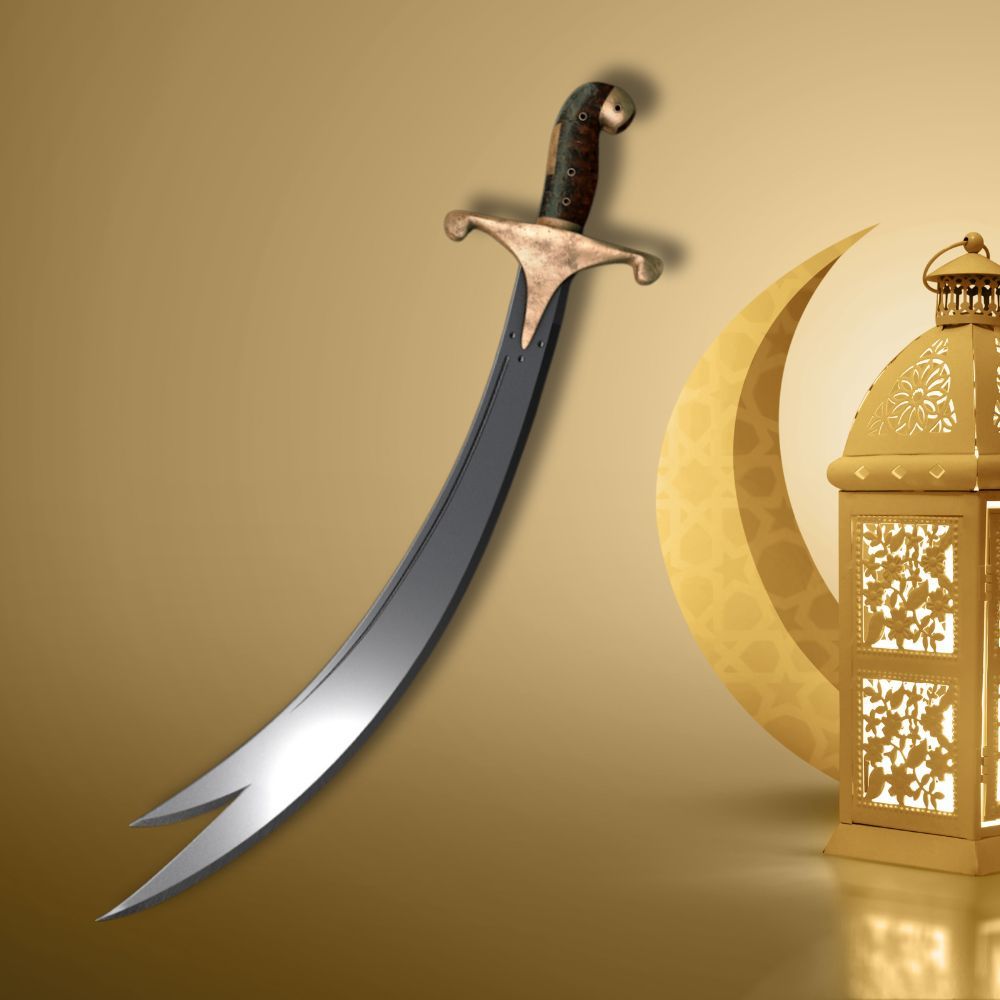
Origin and Meaning of the Name
The name Zulfiqar comes from the Arabic term "Thul-Fiqar", which translates as "divider" or "splitter." This name is intrinsically linked to its divine origin, as it is believed to have been given to the Prophet Muhammad by Allah during the Battle of Badr. One of its most distinctive features is its bifurcated design, with two sharp blades that symbolize the duality between good and evil, light and darkness. This unique design also reinforces its function as a powerful and symbolic weapon.
History and Legacy of the Zulfiqar
The sword is closely associated with Imam Ali, who received it as a gift from the Prophet Muhammad. According to tradition, Ali demonstrated his valor and combat skills during the Battle of Uhud, where he split in two the shield and helmet of the enemy's strongest warrior. Impressed by his courage, Muhammad gave him the Zulfiqar to replace his broken sword. This act not only solidified Ali's reputation as an exceptional warrior but also elevated the sword to a sacred status.
In addition to its historical importance, the Zulfiqar has been represented in various artistic and symbolic forms. During the Ottoman period, it was a frequent element on the flags of the Janissary cavalry, especially between the 16th and 17th centuries. In Shia iconography, the sword is commonly depicted as a double-edged scimitar, accompanying Imam Ali and reinforcing his role as the guardian of the faith.
Symbolism and Use in Islamic Culture
The Zulfiqar is much more than a tool of war; it is a symbol of protection, justice, and bravery. Its legend is so deeply rooted in Islamic culture that it has become a talisman of protection. One of the most famous inscriptions associated with the sword is:
لَا سَيْفَ إِلَّا ذُو ٱلْفَقَارِ وَلَا فَتَىٰ إِلَّا عَلِيٌّ
lā sayfa ʾillā ḏū l-faqāri wa-lā fatā ʾillā ʿalīy^un^
"There is no sword but the Zulfiqar, and there is no youth but Ali."
This phrase reinforces the connection between the sword and Imam Ali, highlighting his role as a spiritual leader and warrior. Furthermore, the Zulfiqar is used in religious ceremonies and protection rituals, where its power is invoked to safeguard believers.
Cultural Importance and Current Relevance
The Zulfiqar Sword plays a fundamental role in the cultural and religious identity of millions of Muslims around the world. It is not only a symbol of faith and devotion but also a reminder of the values it embodies: justice, courage, and divine protection. Its legacy transcends the religious sphere, influencing various cultural expressions, from literature to cinema and music.
In popular culture, the Zulfiqar has been represented in many works, establishing itself as an icon that combines the historical with the spiritual. Its unique design and rich history continue to inspire people to cultivate virtues such as bravery and the defense of justice in their own lives.
The sword was reforged once more, honoring the direct lineage of Elendil and strengthening Aragorn's desire to be King of Gondor and Arnor. The physical characteristics of Andúril include a blade length of 103.2 cm, with a cutting edge of 85 cm. The handle measures 27 cm long, with a solid metal pommel, finished in aged silver plating and 24-carat gold fixtures. The blade also features authentic runes deeply engraved on both sides of the false edge, making it even more special for weapon collectors.
The Andúril Sword is one of the most iconic and significant weapons in the The Lord of the Rings universe created by J.R.R. Tolkien. Its history, design, and symbolism make it a fascinating object for lovers of epic fantasy. Known as the "Flame of the West," this sword is not only a weapon but also a symbol of leadership, courage, and the struggle against dark forces.
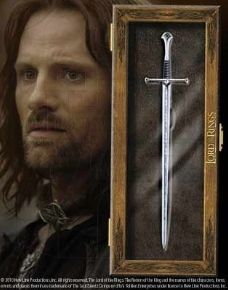
Origins and Significance
The Andúril Sword was forged in the year 3019 of the Third Age from the fragments of Narsil, the legendary sword of Elendil. Narsil was used by Isildur, son of Elendil, to cut the One Ring from Sauron's hand during the War of the Last Alliance. After the battle, the remnants of Narsil were taken to Rivendell, where they remained for centuries until they were reused to create Andúril.
Physical Characteristics
The Andúril Sword is a masterpiece of forging, both in Tolkien's narrative and in the official replicas. Here are its main characteristics:
- Blade: Made of 420 J2 stainless steel, it measures 103.2 cm in length, with an edge decorated with elvish runes. It includes an inscription in Quenya that means: “The bearer of this sword shall summon the deadliest army.”
- Handle: Constructed from solid metal, it features an ancient silver finish and details plated in 24-carat gold. The grip is wrapped in authentic leather, engraved with runes that reinforce its authenticity.
- Additional details: The crossguard and pommel are made from solid metal, with finishes in aged silver and gold. Furthermore, the runes deeply engraved on both sides of the false edge add a touch of elegance and meaning.
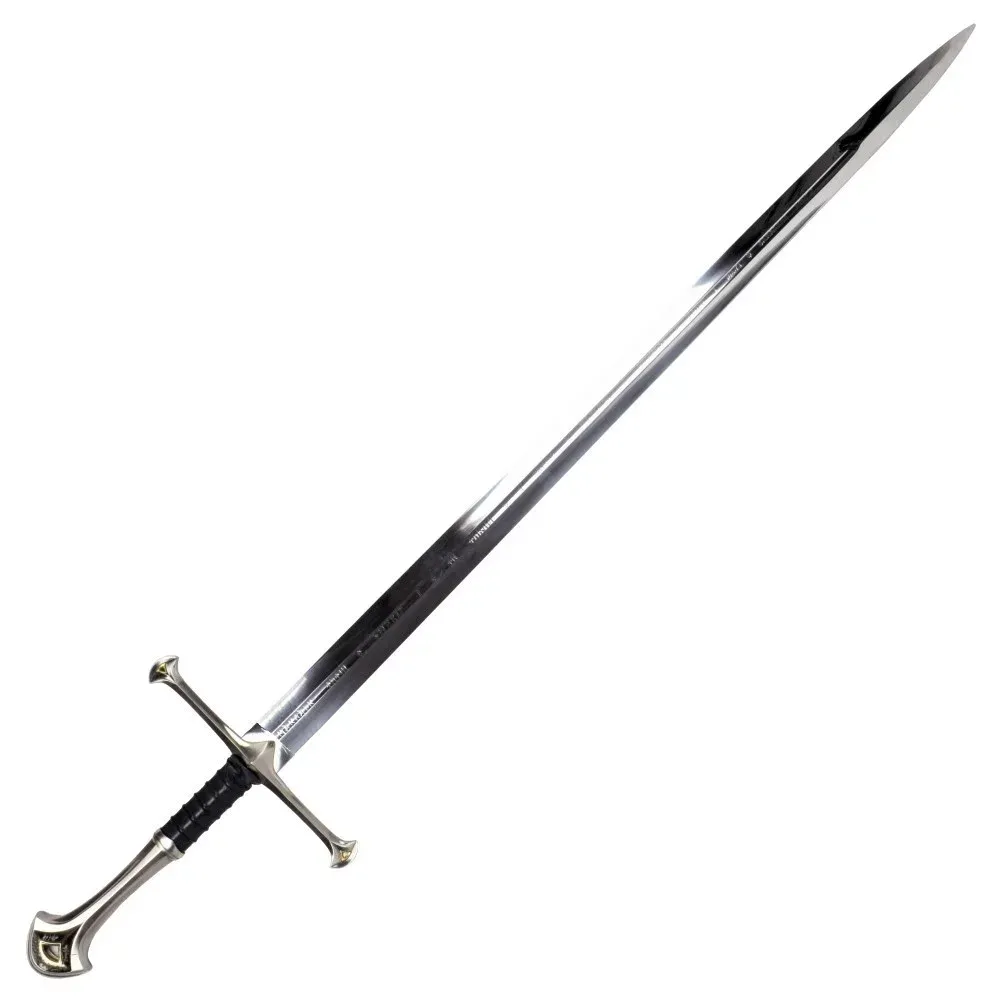
Symbolism in the Narrative
In Tolkien's work, the Andúril Sword represents the rebirth of the legacy of Elendil and the redemption of the House of Isildur. Its bearer, Aragorn, uses the sword as a symbol of his right to the throne of Gondor and Arnor. From its departure from Rivendell as part of the Fellowship of the Ring, the sword becomes an emblem of resistance and hope in the fight against Sauron.
Replicas and Collecting
For fans of The Lord of the Rings, official replicas of the Andúril Sword are essential pieces in any collection. Made with high-quality materials and details faithful to the original work, these replicas allow lovers of the saga to dive even deeper into the world of Middle-earth.
| Feature | Detail |
|---|---|
| Blade Length | 103.2 cm |
| Blade Material | 420 J2 Stainless Steel |
| Handle Length | 27 cm |
| Finishes | Aged Silver and 24-Carat Gold |
| Decoration | Elvish Runes and Quenya Inscription |
The Glamdring Sword is a fundamental piece in the imagery of J.R.R. Tolkien's universe, and it is closely tied to the iconic character Gandalf in "The Lord of the Rings." This sword is not only a weapon but also a historical and cultural testament to Tolkien's universe.
Origins and Crafting
The origin of the Glamdring Sword dates back to the ancient elven city of Gondolin during the First Age. Gondolin, famous for its armories, produced some of the most formidable swords in the history of Middle-earth. Glamdring, along with other elven weapons, was forged to confront the enemies of the Elves, standing out for its effectiveness and mysticism.
Specific Features
- Blue Light: One of the most famous properties of this sword is its ability to emit a blue light when Orcs are near. This ability was common among elven weapons and symbolized the precision and quality of Gondolin's forging.
- Usage by Gandalf: Gandalf, the White Wizard, wielded Glamdring in numerous battles. His skill was especially demonstrated in his confrontation with the Balrog of Morgoth on the Bridge of Khazad-Dûm, where this sword proved crucial.
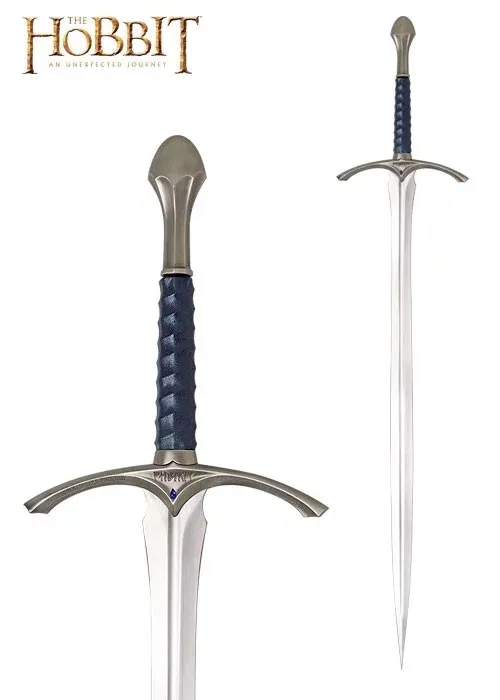
History in the Narrative
The story of Glamdring within Tolkien's narrative is fascinating and rich. Although Gandalf was its most recognized bearer, it was Bilbo Baggins who discovered it along with other elven swords like Orcrist and Sting in a trolls' cave. These weapons stood out in the fight against the evils of Middle-earth, and their influence extended even beyond Tolkien's times.
Detailed Description
As for modern replicas of Glamdring, they are made from quality materials. The blade is usually made of AUS-6 stainless steel, and its handle is crafted from metal and leather, details that contribute both to its functionality and aesthetic value. However, it is important to remember that these replicas are contemporary interpretations and do not accurately represent the original versions from Tolkien's world.
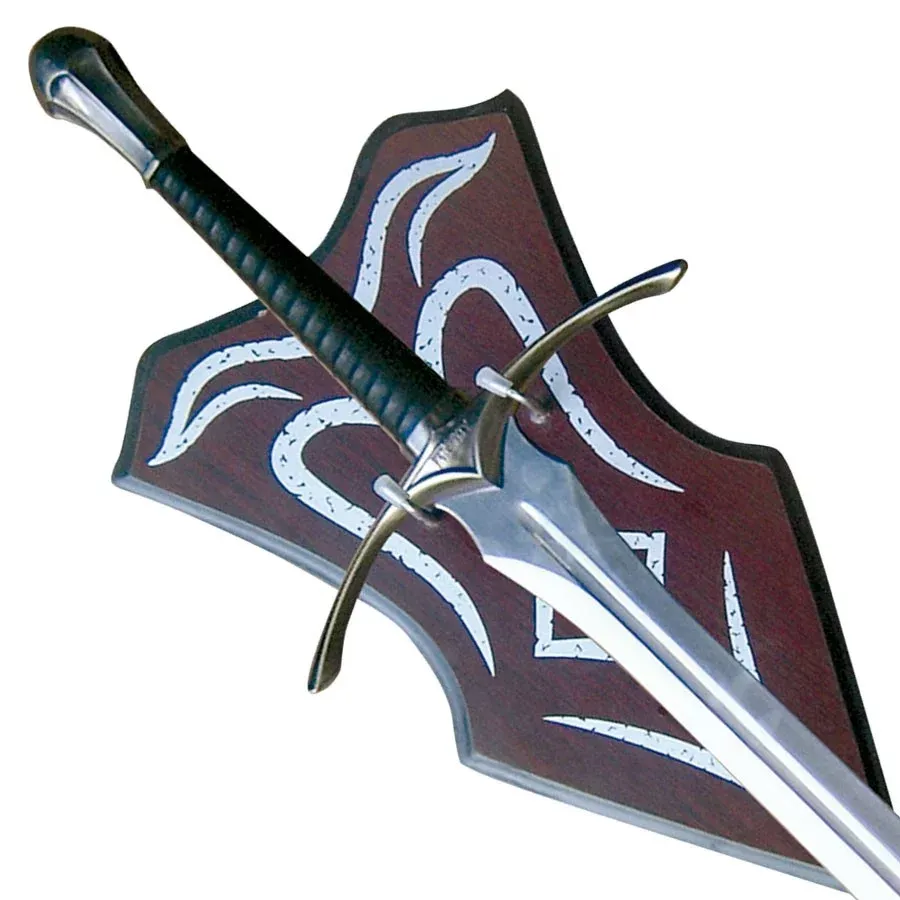
Replicas and Collecting
The world of collecting has made Glamdring replicas highly appreciated by fans and collectors around the globe. These pieces, although not sharp, are ideal for decoration and for creating themed environments inspired by "The Lord of the Rings." They are a testament to the love and fascination generated by Tolkien's literary universe, allowing enthusiasts to integrate a part of that world into their own collections.
Therefore, Glamdring is not simply a sword; it is a symbol of resilience and nobility, embodied by one of the most endearing and powerful characters in Tolkien's legendarium. Its legacy endures, both in the tales of Middle-earth and in the hearts of those who marvel at its stories.
The Clarent sword is a fascinating element of Arthurian mythology, although it is less known and popular than the legendary Excalibur. Nevertheless, its role in the story of King Arthur and his knights is equally important and filled with symbolism. Below, we will delve into its characteristics and meanings within this rich narrative.
Origin and Use
The Clarent Sword is often referred to as the "Sword of Peace." In various Arthurian tales, Clarent is used by King Arthur during solemn and peaceful moments, such as coronation ceremonies. This usage stands in stark contrast to Excalibur, famous for its performance on the battlefield, highlighting the duality between war and peace in these stories.
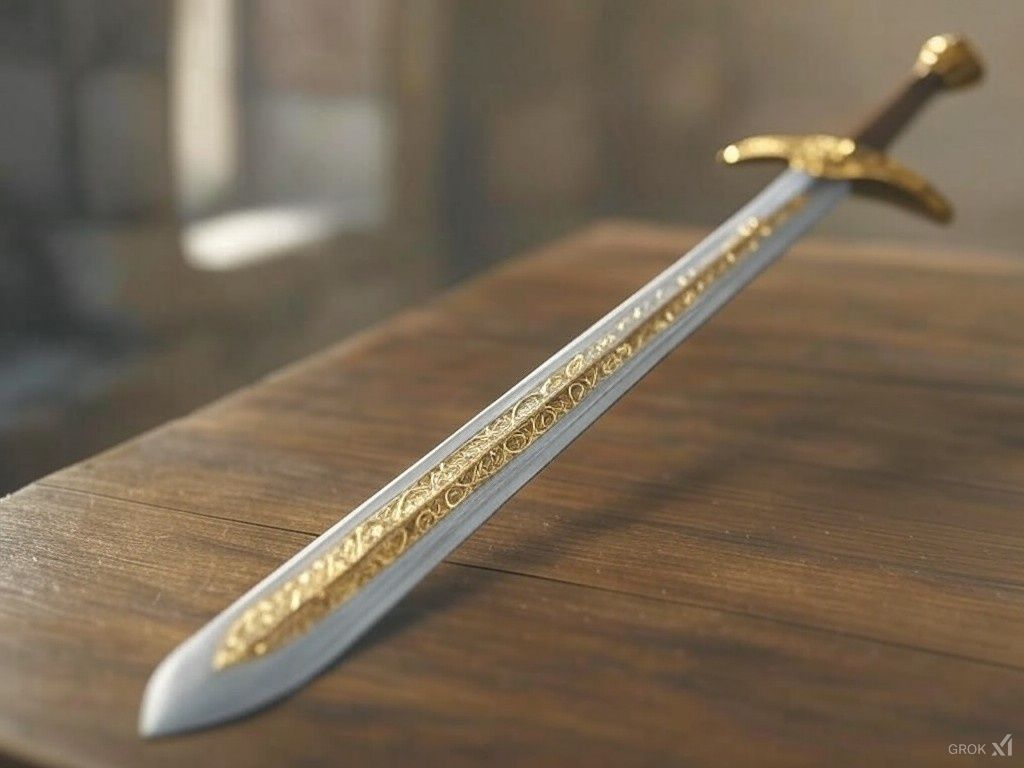
Description
Despite its significance, descriptions of Clarent are scarce in Arthurian literature. It is generally envisioned as a ceremonial sword, likely adorned with symbolism reflecting its peaceful use. Although concrete details about its design are unknown, it can be assumed that it featured royal or religious embellishments suitable for the occasions when it was employed.
History and Fate
One of the most tragic and well-known stories related to Clarent is its use by Mordred in the mortal wounding of Arthur. This event, occurring in the final battle, is particularly ironic as a sword designed to symbolize peace becomes the weapon that ends the king's life. This paradox underscores the complexity and multiple layers present in the Arthurian narrative.
Cultural Representations
Over time, Clarent has not enjoyed the same prominence in popular culture as its counterpart Excalibur. However, it has started to appear more frequently in literary works and modern adaptations that seek to explore lesser-known facets of the Arthurian legends. These contemporary tales often explore the themes of peace, betrayal, and fate associated with Clarent, further enriching its mythological background.
- Clarent as a symbol of peace.
- Clarent in contradiction with Excalibur.
- Mordred and his betrayal through Clarent.
- Increasing modern interest in the myth of Clarent.
In summary, while Clarent may not have the notoriety of Excalibur, its importance should not be underestimated. The sword serves as a tangible emblem of the duality present at King Arthur's court and is a reminder that even symbols of peace have the potential to become something different when circumstances demand it.
The sword of Joan of Arc is an artifact shrouded in mystery and symbolism. Over the centuries, it has captured the imagination of historians and enthusiasts alike. This object, closely linked to the figure of the French heroine Joan of Arc, represents not only a weapon but also a symbol of courage and determination at a crucial moment in France's history. Below, we will explore in detail the history, context, and significance of this sword.
History of the Original Sword
The legend of Joan of Arc's sword has its origins in the 15th century during the turbulent period of the Hundred Years' War. According to historical accounts, Joan of Arc received a divine revelation that led her to the church of Saint Catherine of Fierbois in France. There, hidden behind the altar, was the sword she had envisioned in her dreams and visions. This tale has fascinated generations, and although the authenticity of the story may be debated, there is no doubt that it has contributed to the mystical aura surrounding Joan of Arc.
Description of the Sword
Historically, the description of Joan of Arc's sword is surrounded by uncertainty due to the lack of concrete details about its design. However, some sources mention that the sword featured five crosses engraved on the blade, a decorative motif that was popular during the medieval period. The resistance of the blade to rust suggests that it was made from a metal less prone to corrosion, indicating a possible advanced technology for its time.
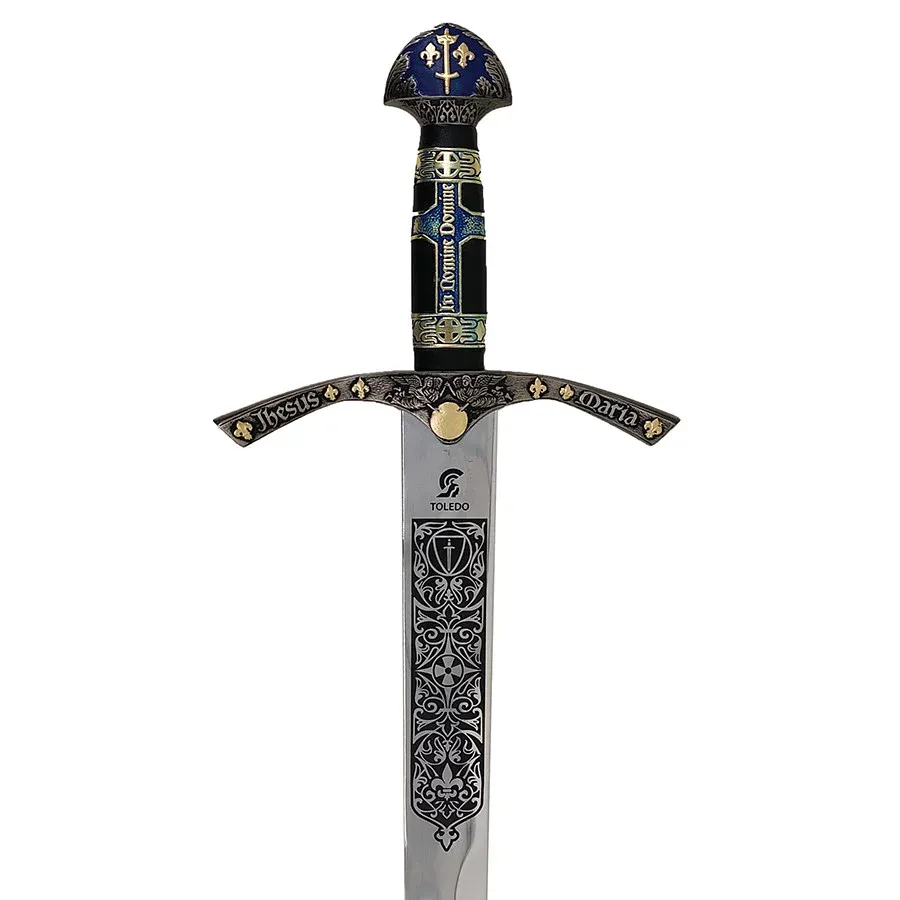
Historical Context
Joan of Arc wielded this sword during her military campaigns, including her crucial role in the liberation of Orleans in 1429. However, the sword's final whereabouts were lost after Joan was captured and later executed in 1431. This disappearance has fueled numerous myths and theories about its fate.
Modern Decorative Sword
Today, many swords known as "Joan of Arc swords" are actually decorative reproductions. These pieces are not exact replicas, as they are based on the scarce historical descriptions available, but they serve as iconic monuments to Joan of Arc's legacy. They are commonly found in historical exhibits and ceremonies in France, reflecting their function as ceremonial and decorative objects.
Significance and Mythology
Beyond being a weapon, Joan of Arc's sword embodies the indomitable spirit of the young warrior. It has been mythologized over the years as an emblem of divine inspiration and historic mission. Its legacy has been perpetuated not only through these decorative replicas but also in the heart of French culture as a reminder of Joan's brave service.
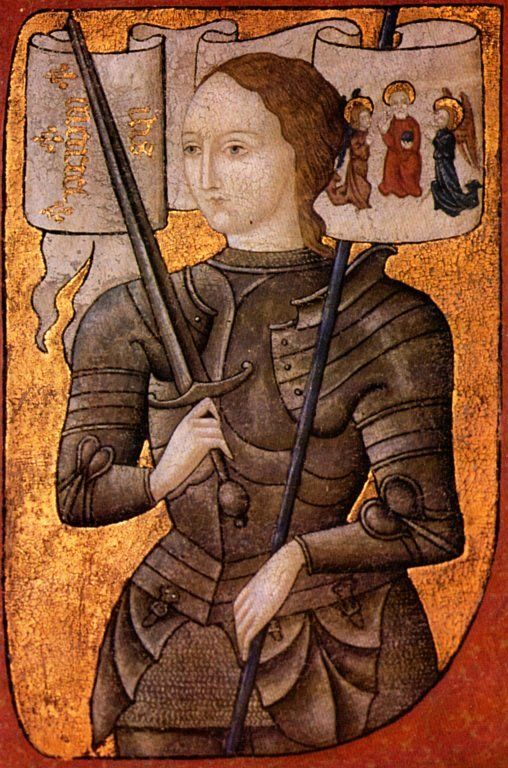
The montante, also known as the spadone, is one of the most iconic weapons of the medieval and Renaissance eras. These imposing swords were skillfully wielded with both hands, reflecting the prowess and strength of the warriors who carried them. Let's delve into their details, from their origins to their evolution, to better understand their historical and functional significance.
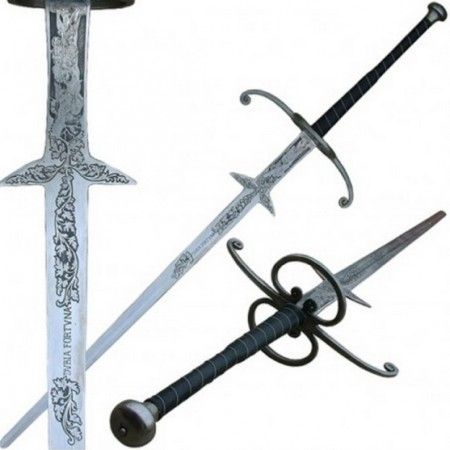
Origin and Etymology
The term "montante" refers to long and robust swords, primarily handled with two hands. The dictionary records its use since the 14th century and it remained present in literature and the jargon of weapon experts until the 19th century. This terminology establishes an undeniable link to the past, evoking times of chivalry and epic battles.
Characteristics of the Montante
- Length and Weight: Montante swords typically measured between 1.60 and 2 meters. Contrary to what one might think given their size, their weight was generally under 2 kg, facilitating agile handling with both hands.
- Blade and Quillons: The blade could be straight or curved depending on the style and time period. The quillons, vital for the weapon's structure, initially started straight and over time became curved to improve their use and effectiveness in combat.
- Grip and Pommel: Designed for a firm and secure grip with both hands, the grip often exceeded one-third of the length of the blade. The pommel, with a broad and heavy structure, counterbalanced the weight of the blade, providing optimal balance to the weapon.
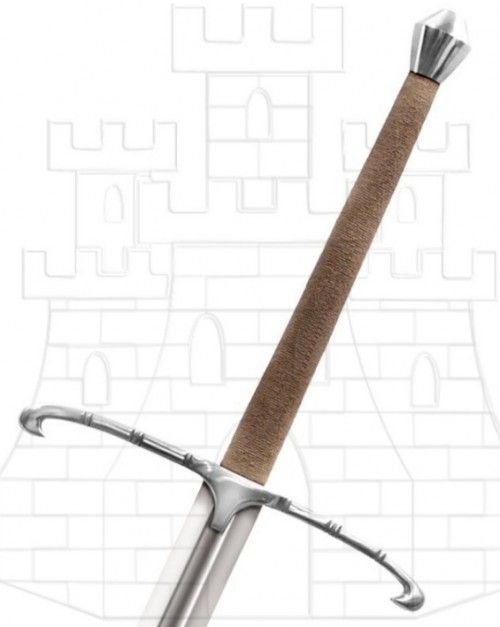
Historical Use
During the Middle Ages, particularly from the 11th century onwards, the medieval cavalry adopted the montante as part of their arsenal. Knights, defenders of feudal domains often involved in the Crusades, used these weapons to impose authority and protect their lands. In the 16th century, montante swords continued to be instrumental; in particular, the German Landsknechts, mercenary soldiers serving the Hispanic monarchy, wielded these great swords to disrupt enemy formations and create chaos among rival lines.
Evolution and Modern Use
Although the term "montante" has fallen out of use, the word "spadone" remains, derived from "spatha," a Greek term that displaced "gladius" from vulgar Latin. Today, the montante is primarily studied by enthusiasts of ancient fencing, a discipline included within the so-called Western martial arts.
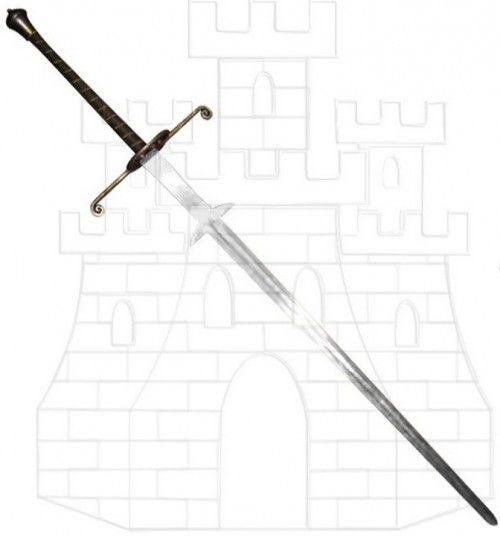
The montante is more than just a weapon; it is a testament to the ingenuity and military skill of past eras. Its captivating design and practical functionality allowed its relevance for centuries, and today it inspires fascination and interest among those studying the history and art of sword combat. The majesty of this spadone endures as a symbol of power and precision in the history of weaponry.
The flame-like blades, also known as wavy blades, are one of the most distinctive elements in certain swords, achieving an appearance reminiscent of flames. This undulating shape not only provides an impressive visual effect but also encapsulates an interesting combination of history, symbolism, and functionality.
Distinctive Features of the Flame-like Blade
The flame-like blade is famous for its wavy shape, designed to evoke the image of tongues of fire. This feature is appreciated not only from an aesthetic point of view but has also played a role in symbolic representation across various cultures. For instance, in the Masonic realm, a sword with a flame-like blade symbolizes honor, courage, and dignity, serving as an emblem of authority and protection.
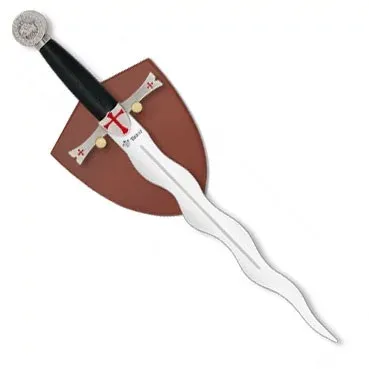
Decorative and Ceremonial Uses
- **Decoration**: Flame-like swords are primarily associated with decorative and ceremonial purposes. Their imposing design makes them sought-after pieces in decorative weapon collections.
- **Ceremonies**: Commonly used in formal events, flame-like blades symbolize power and respect. In contexts such as Freemasonry, they are utilized in lodge ceremonies as a crucial part of Masonic symbolism.
Types of Flame-like Swords
Among the most recognized variants of flame-like swords, we find:
- Rapier Swords: Short swords primarily used as decorative elements.
- Zweihänder: These are two-handed swords, popularized in the 16th century by the brave Landsknechts, trained warriors who fully harnessed the functionality of the wavy blade.
- Other variants have existed, but they did not gain as much popularity as the aforementioned.
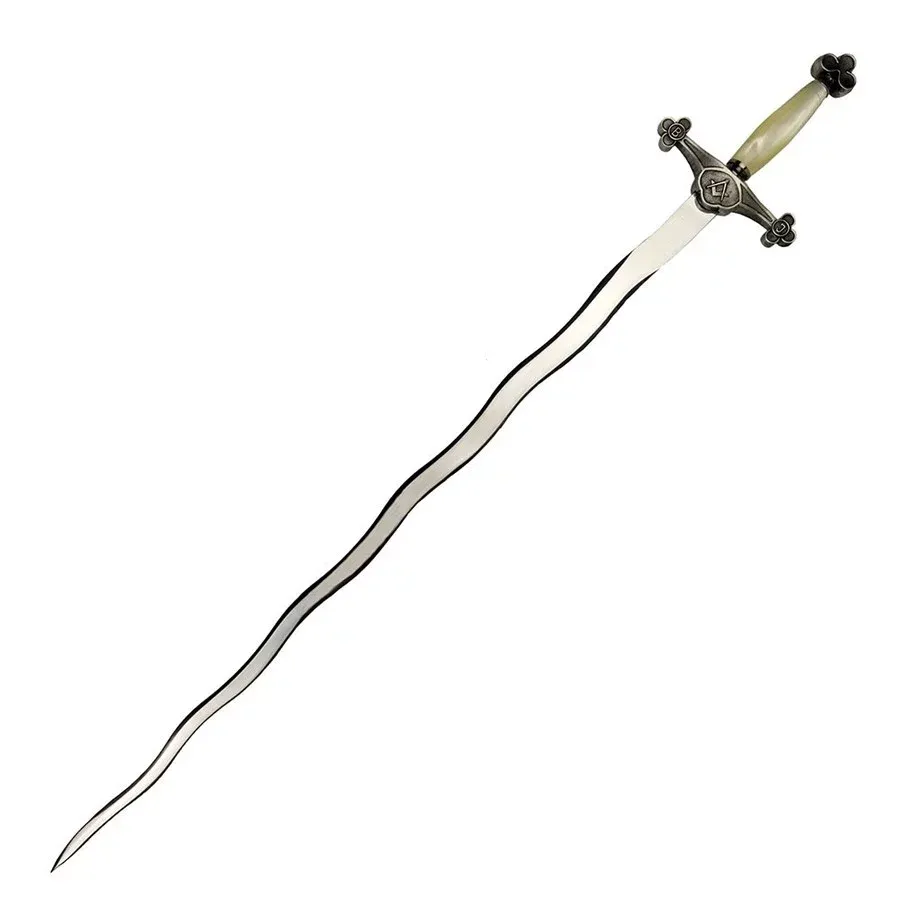
Materials and Craftsmanship
The **craftsmanship** process of these swords reflects the importance given to their durability and aesthetic appeal. Generally, flame-like blades are made of high-quality stainless steel to ensure strength and longevity:
- The materials used in the grips vary, ranging from leather and metal to wood.
- Additional details can be found in gold or silver, highlighting the beauty of the swords.
Symbolism and Use in Freemasonry
Beyond their aesthetic utility, flame-like swords hold a deep significance in certain contexts, highlighting:
- In the Masonic context, they are symbols of honor and authority, reflecting the radiance of thought.
- They are commonly used as insignias of power and command, contributing to the mystique of Masonic ceremonies and rituals.
The flame-like blades, with their characteristic undulating design that simulates flames, are not only appreciated for their unique visual effect but also for their cultural and historical relevance. From their use in ceremonies to their symbolic representation, these swords hold a special place in the tradition and art of sword-making. These pieces not only beautify collections but also preserve a rich symbolic heritage that continues to captivate enthusiasts and collectors alike.
The two-handed sword is an iconic weapon that stands out not only for its impressive size and weight but also for the skill and strength required to wield it. This type of sword has captured the imagination of many throughout history, serving as a symbol of power and prowess on the battlefield. We will explore its distinctive characteristics, historical context, and how it is valued today.
Characteristics of the Two-Handed Sword
- Weight and Dimensions: The two-handed sword is notable for its impressive size, which can weigh up to 4 kg and measure between 2 and 2.5 meters in length.
- Grip: The grip of this sword takes up a fifth or fourth of its total length, equipped with a cross guard and long quillons to protect the user's hands. The pommel, which is usually spherical or round, facilitates the rotation of the left wrist, allowing for quick and effective strikes and thrusts.
- Blade: Designed to be formidable, the blade of the two-handed sword is long and wide, made to pierce and strike through plate armor and chainmail. Although penetrating armor is not always possible, the impact can cause severe injuries such as fractures.
Historical Use of the Two-Handed Sword
- Time and Place of Use: This type of sword became popular in the Middle Ages, particularly during the 15th and 16th centuries. It was primarily used in foot combat, where weight and length played a crucial role in its effectiveness.
- Main Objective: Its robust design aimed to break the lines of armored pikemen, allowing cavalry units to exploit the chaos to advance in combat.
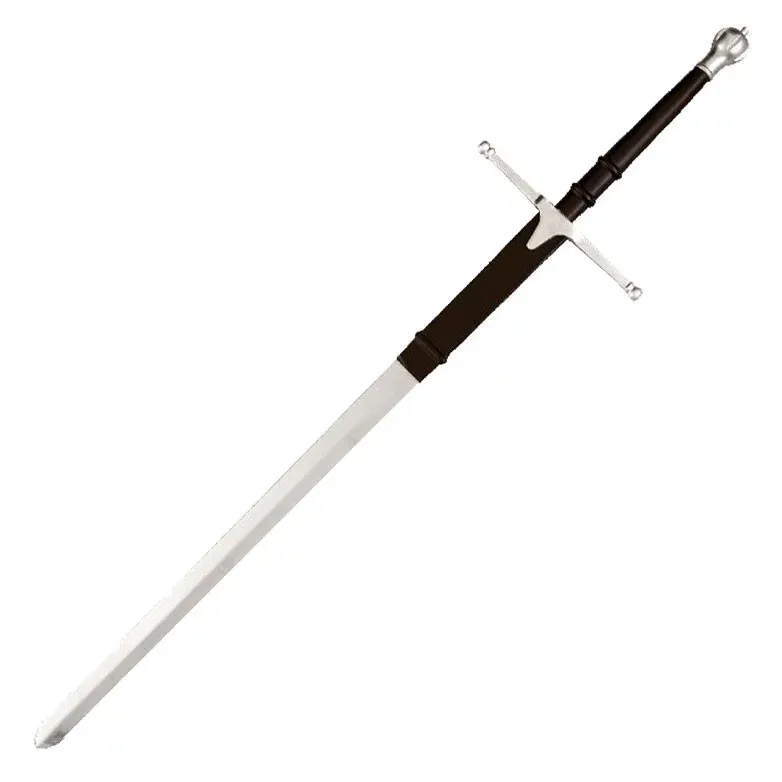
Current Uses of the Two-Handed Sword
- Collecting and Decoration: Today, the two-handed sword is highly valued in the collecting world for its historical and aesthetic worth. It is frequently used in decoration, as well as in historical reenactments, films, and plays that seek to capture the essence of medieval battles.
Historical Example: The Sword of William Wallace
An iconic two-handed sword is that of William Wallace, the 13th-century Scottish leader. Recognized for its considerable size, with a blade over one and a half meters long, it required both hands to wield, making it ideal for close combat. When wielding it, one hand was placed on the grip while the other could be positioned over the first third of the blade to improve control in short-range attacks.
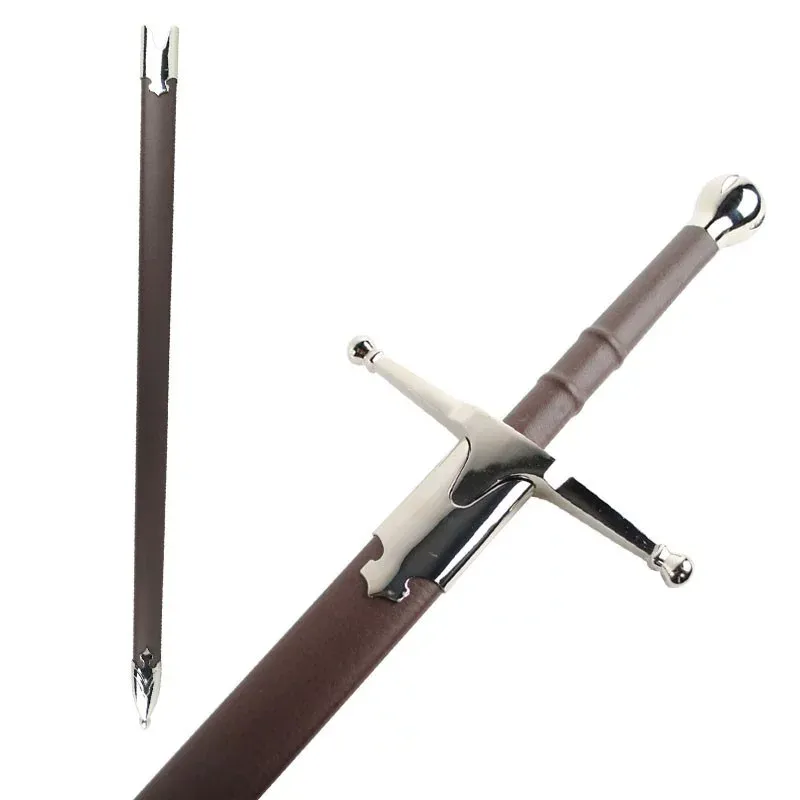
Although it is no longer used in modern combat, the two-handed sword remains a culturally significant and evocative piece of a warrior past, making it an eternal point of interest for historians and enthusiasts alike.
The foil is one of the three emblematic weapons used in the sport of fencing, alongside the épée and the sabre. It is characterized by being a light and flexible weapon, designed to execute techniques of great precision and skill. Its use dates back to the 17th century, evolving from its historical roots to become one of the fundamental components of modern fencing.
Features of the Foil
- Length and Weight: With a length of 1.1 meters and a weight of less than half a kilogram, the foil is made of carbon steel and has a rectangular cross-section.
- Flexibility: This weapon is flexible, allowing for precise and technical execution, facilitating quick and controlled movements.
- Tip: The foil has a blunt tip designed solely for scoring points through direct contact. In electric scoring tournaments, the tip is equipped with a spring button, known for indicating touches with accuracy.
- Uniform: Fencers using the foil typically wear a lamé, an electrified vest that registers hits during competitions.
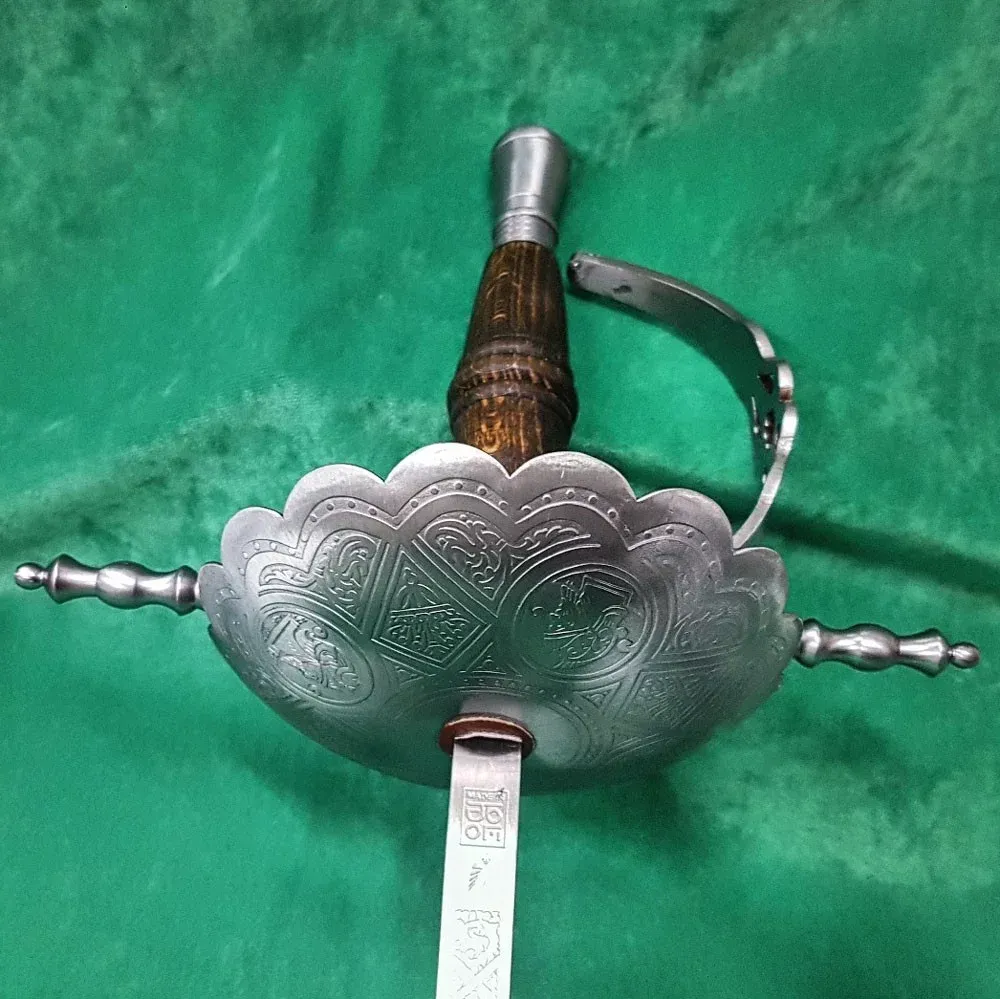
History of the Foil
- Origins: The foil emerged in the 17th century as a blunted weapon, with a flexible blade ending in a flower-shaped button. This structure allowed for the safe practice of simulated duels, minimizing the risk of injury.
- Modern Use: In France, during the 18th century, the foil became established as a training tool to refine fencing techniques with quick and subtle thrusts. Over time, it developed into one of the primary weapons of sport fencing.
Use in Competitions
- Scoring: In modern tournaments, electric scoring is essential to confirm valid touches. A system that includes a switch at the tip of the foil and the lamé vest verifies that contact has occurred on the valid target.
- Valid Target: The target area for the foil is focused exclusively on the torso, as historically, this region encompassed vital organs, making it a crucial point during duels to the death.

Categories and Age Groups
- Classifications: National fencing federations assign classifications based on specific systems, which determine the starting positions in the group rounds of tournaments.
- Age Groups: Fencers are divided into age categories such as Y10 (10 years or younger), Y12 (12 years or younger), Y14 (14 years or younger), cadet (16 years or younger), junior (19 years or younger), and senior (over 19 years). Veteran categories are also considered for those aged 40 and over.
Techniques with the Foil
The foil requires considerable technical skill and an agile mind. Maneuvers, such as parries and responses, demand speed and accuracy. In a competitive context, the priority of attack is of great importance. The attacking fencer maintains the advantage until met with a successful parry or counter.
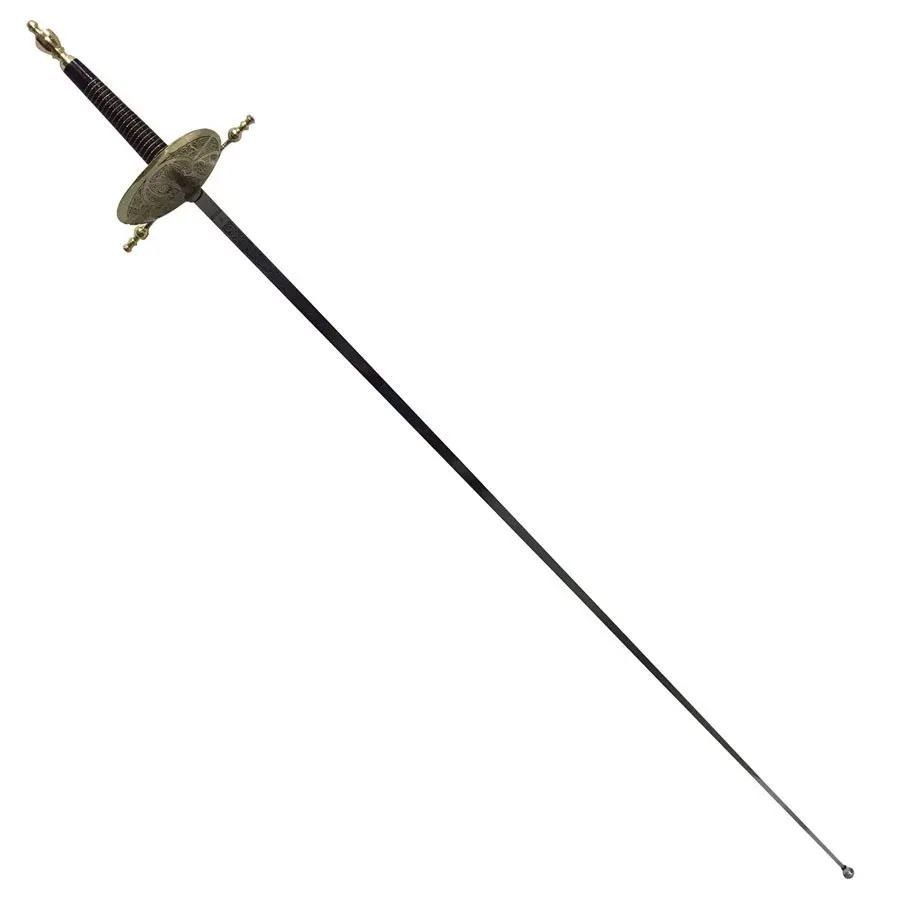
| Category | Age |
|---|---|
| Y10 | 10 years or younger |
| Y12 | 12 years or younger |
| Y14 | 14 years or younger |
| Cadet | 16 years or younger |
| Junior | 19 years or younger |
| Senior | Over 19 years |
| Veterans | 40 years or older |
The foil stands out as an essential weapon in competitive fencing, promoting the development of precise and elegant techniques. Its history and characteristics have contributed to its prestige, making it a preferred choice for competitions as well as training for fencers of all ages.
In the fascinating world of medieval weapons, the bracamarte holds a special place. Often considered a combination between a sword and a large knife, this weapon was a symbol of power and skill on the battlefield. It has a rich history and unique characteristics that make it stand out among other swords from the Middle Ages.
Origin and Etymology of the Bracamarte
The term "bracamarte" has quite an interesting origin. It comes from the French "braquemart," which is an adaptation of the German "Großes Messer," meaning "large knife." Deeper roots can be traced back to Flemish Dutch as "braeck-meeser," or "bone-breaking knife." This name reflects the weapon's primary function: large cuts and slashes, effective for breaking bones and light armor in battle.
Detailed Description of the Bracamarte
The essence of the bracamarte lies in its distinctive design:
- Wide and Heavy Blade: Designed to be wielded with one hand, the blade of the bracamarte is remarkably wide and has a considerable weight, providing strong cutting power.
- Distinctive Curvature: The blade is single-edged, with a curve upwards near the tip, facilitating powerful slashing blows.
- Variable Design: Its appearance could range from a curved sabre to a modern machete, demonstrating its versatility and effectiveness in combat.
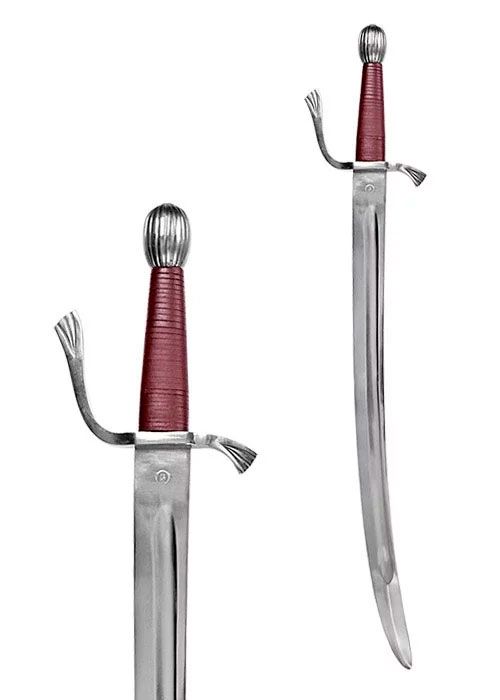
Specific Characteristics of the Bracamarte
One of the most important features of this sword is its complex guard system:
- Quillons: In its early versions, the bracamarte featured cross-shaped quillons. With the evolution into the Renaissance, these guards progressed into "S" shapes, especially common in Italian and German versions.
- Diverse Names: Depending on the region, it was known as "alfanje" or "terciado" in Spain, demonstrating its wide adoption and adaptation.
The Bracamarte in Combat
The use of the bracamarte was not limited to foot soldiers; it extended to various military units:
- Archers and Infantry Soldiers: This weapon served as an effective complement to archers, due to its capability to inflict severe damage in close combat.
- Use in Cavalry: From the 13th century onward, the bracamarte was also adopted in cavalry, where its slashing power was appreciated even while in motion.
- In the Spanish Tercios: In the famous Tercios, the integration of the bracamarte alongside the bucklers proved to be highly effective.
Historical Examples and Reproductions
Today, enthusiasts of historical weapons can appreciate ancient examples of the bracamarte in the Royal Armory of the Royal Palace of Madrid. History lovers and practitioners of historical fencing can also enjoy functional reproductions, meticulously designed to capture the essence of these historical swords.
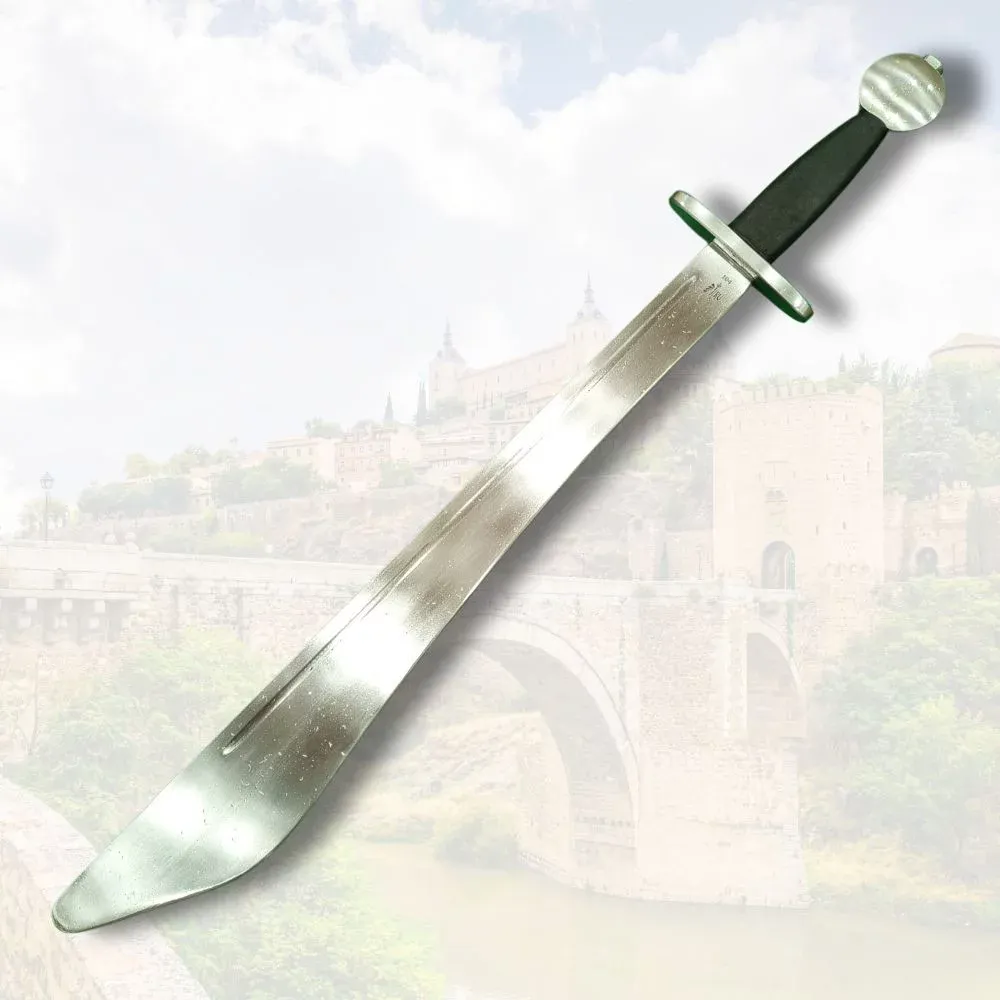
Over the years, the bracamarte has not only left a cultural and military mark in its time but continues to inspire modern historical reenactors and collectors who seek to revive the power and elegance of this remarkable medieval sword.
In the vast history of medieval weapons, two terms often generate some confusion: *alfanje* and *bracamarte*. Although both are curved single-edged blades, they have significant differences in their origins, design, and use. This article examines these fascinating weapons, exploring their key similarities and differences.
Origins of the Term
Alfanje
- Origin: The word "alfanje" has its roots in the Hispano-Arabic "al-janyar," which translates as "the dagger."
- History: This sword was widely used in the Iberian Peninsula as well as in parts of the Mediterranean and Italy during the Middle Ages up to the Renaissance. In Old Castilian, it was also known as "terciado."
Bracamarte
- Origin: The term "bracamarte" derives from French "braquemart," which translates directly to German "Großes Messer" (big knife).
- History: Its use was predominant during the Middle Ages, especially in the Castilian-Leonese kingdom. In English, it is known as a "falchion."
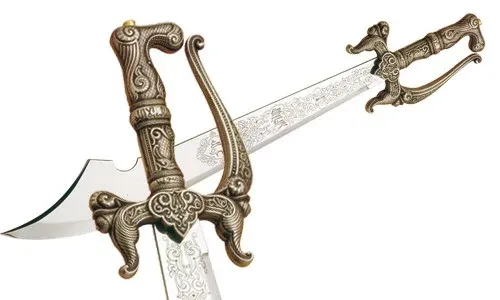
Characteristics
Alfanje
- Description: It is a sword with a wide, curved blade with a single edge, although it may have a false edge on its last third. It is shorter and heavier than Eastern sabers, with a characteristic design possibly inherited from the longsax or falchion.
- Use: Ideal for slashing, it was especially popular in the major Italian city-states like Venice, famous for their refined finishes exported worldwide.
Bracamarte
- Description: It is a single-edged sword, whose spine often features a false edge on its last third. Its blade is curved and widens as it approaches the tip.
- Use: Widely used in the Castilian-Leonese kingdom, this weapon is a natural development of the large cutting blades such as the European seax or scramasax.
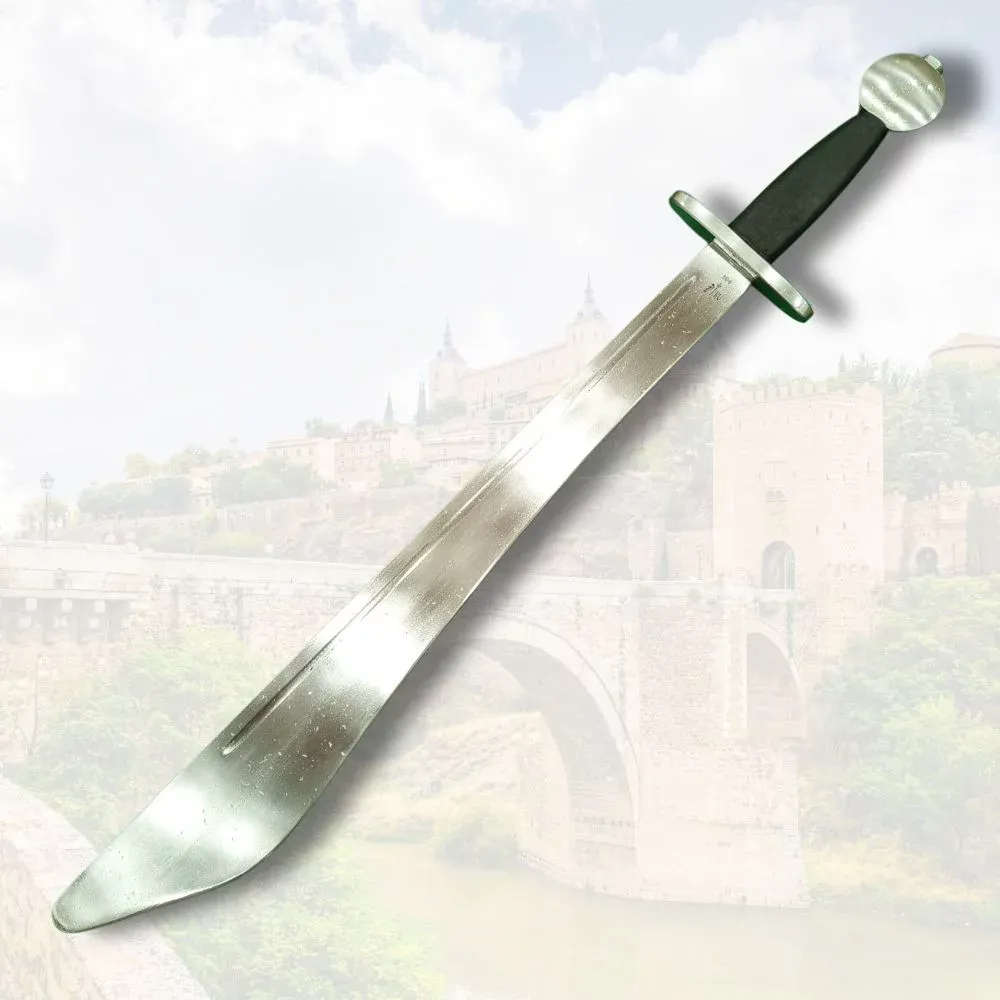
Similarities and Differences
Both instruments stand out for their curved blade and unique edge, ideal for slashing and precise strikes. However, they present notable differences:Similarities
- Both feature *curved blades* and *unique edges*, making them effective in close combat.
Differences
- Origin: While the alfanje has roots in Hispano-Arabic, the bracamarte comes from French and German.
- Design: The alfanje is shorter and heavier compared to Eastern sabers, while the bracamarte is more curved and wider toward the tip.
- Use: The alfanje was widely used in the Mediterranean, while the bracamarte was more common in the Castilian-Leonese kingdom.
| Characteristic | Alfanje | Bracamarte |
|---|---|---|
| Origin | Hispano-Arabic | French/German |
| Blade | Wide and curved | Curved and wide toward the tip |
| Use | Mediterranean Region | Castilian-Leonese Kingdom |
Alfanjess and bracamartes, although they share some similarities in their design and use, are distinct weapons that reflect the needs and characteristics of their regions of origin. Discovering their differences not only helps us better understand these weapons but also offers a window into the rich and varied history of medieval combat techniques.
Falchions are medieval swords of European origin, recognized for their distinctive single-edged blade that curves towards the top, near the tip. These weapons hold a special place in history due to their unique design and their role in infantry during the Middle Ages. Below, we will explore in detail the characteristics, history, and evolution of falchions.
Origin and Description
The falchion has its roots in Europe, where it played a crucial role between the 13th and 16th centuries. Its name is likely derived from the French term "braquemart," related to the Dutch "breecme," meaning bone-breaking knife. This sword, with its unique blade and curved design, was conceived for effective cutting and penetrating armor, which was continuously improving at that time.
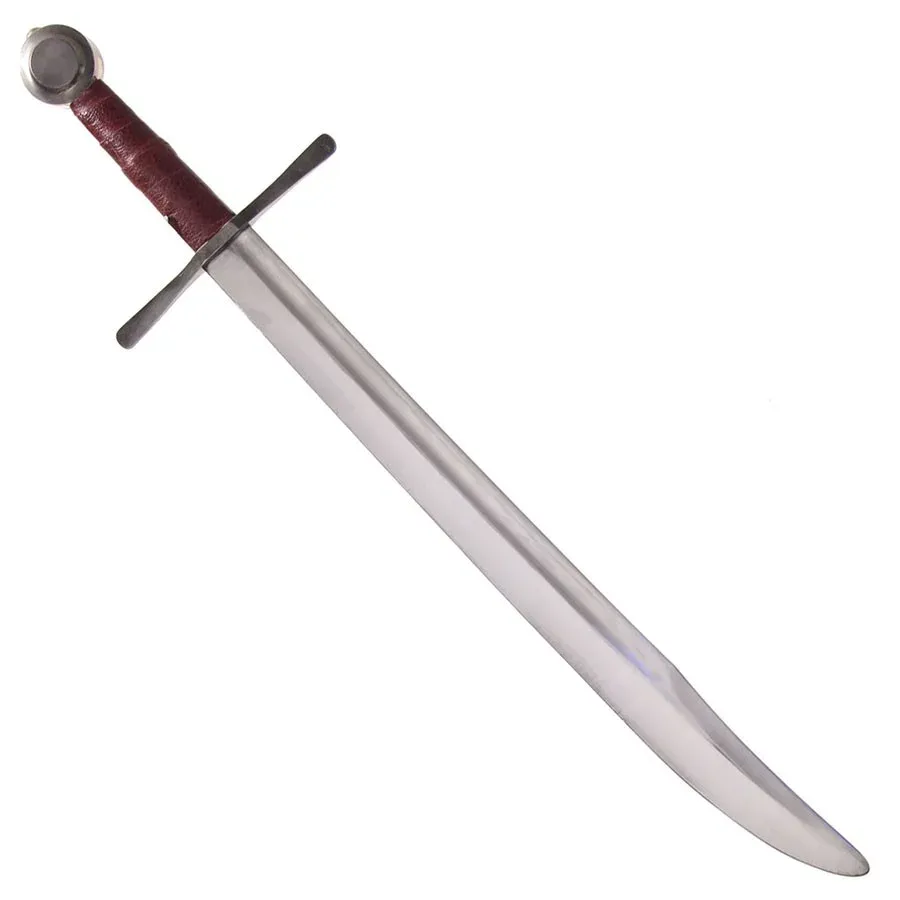
Use and Popularity
Falchions were mainly used by medieval infantry. Although their design was widely accepted and functional, few of these swords survive to this day. The main reason is that many infantry weapons were often destroyed after their service cycle, with only a few pieces remaining in museums and collections.
Variants and Evolution
This type of sword evolved over time, presenting variations from the 13th to the 16th century. Some falchions resemble the seax and later the saber, while others look more like a machete with a strategic guard to protect the hand. This diversity reflects the adaptation and evolution of bladed weapons throughout history.
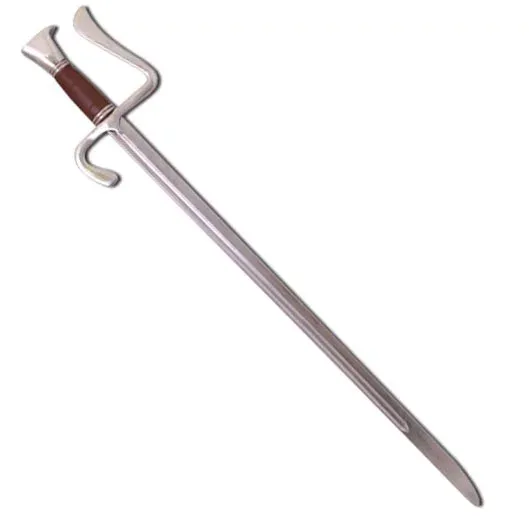
Technical Characteristics
- Length: Generally ranges from 71 to 86 cm.
- Weight: Around 1360 grams.
- Material: Its blade is made of tempered high-carbon steel, with the guard and pommel also made of steel, while the grip combines wood and leather.
- Sheath: Includes a leather sheath for protection and transport.
Appearance in Art and History
This sword appears in various medieval artistic representations, such as in the Cantigas of Alfonso X, used by non-noble Christians. Furthermore, English treatises document its use by well-armored warriors. Some examples of braquemarts are displayed today at the Royal Armory of the Royal Palace of Madrid, testifying to the historical relevance of these weapons.
Relevance in Military History
Despite its widespread use and popularity, few falchion specimens have survived to the present day due to their frequent destruction after conflicts. However, their unique design and effectiveness in combat made them key pieces within medieval arsenals.
| Aspect | Specification |
|---|---|
| Length | 71-86 cm |
| Weight | 1360 grams |
| Blade Material | Tempered high-carbon steel |
| Sheath | Leather |
Falchions, with their unique design and effectiveness, continue to fascinate historians and sword enthusiasts, remaining an icon of medieval military technology in Europe.
The spatha is an emblematic sword with a Celtic origin that developed during the Second Iron Age in central Europe. Its design and functionality were so effective that they were later adopted by the Roman army. Over the centuries, the spatha underwent various adaptations and became a crucial weapon for both Roman cavalry and infantry, remaining in use until the Middle Ages. This article details its historical evolution, characteristics, and significance in warfare contexts.
Origin and Development of the Spatha
The spatha arises from the metallurgical skills and the art of Celtic blacksmiths during the Second Iron Age. It was a period when swords reached a remarkable degree of design and quality, marking the beginning of their prominence.
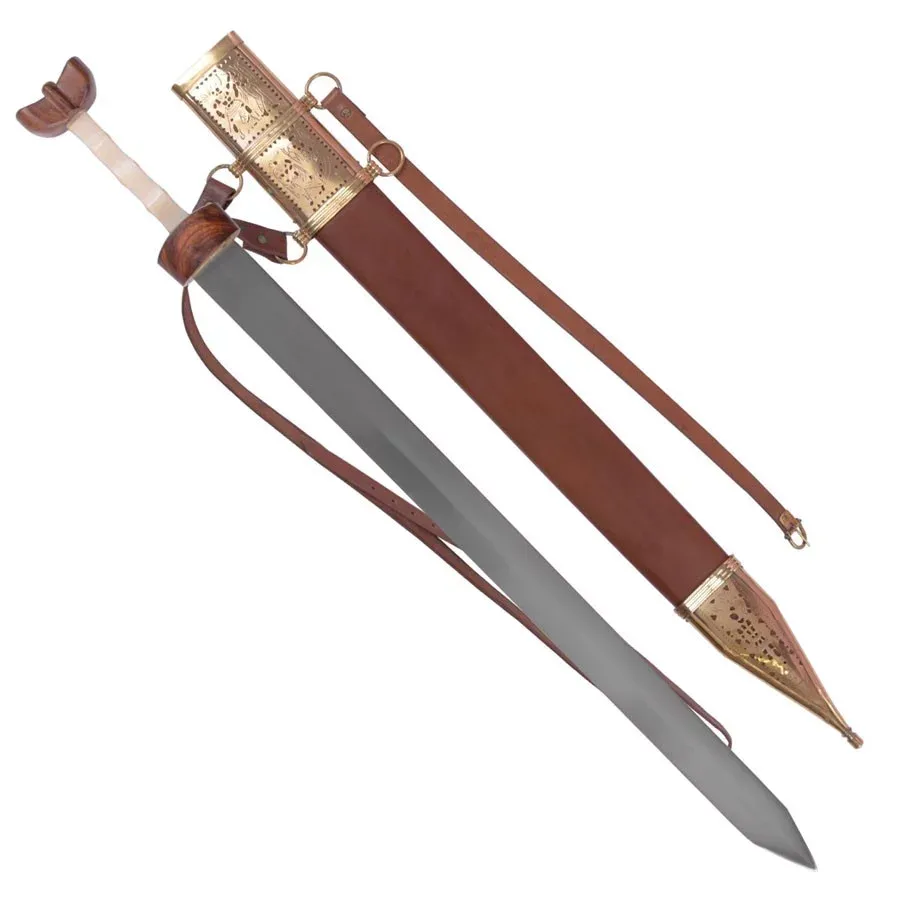
Roman Adoption
- Initially adopted by the Roman cavalry in the 1st century BC.
- Features a longer blade than conventional swords for greater reach.
- The sword measures between 70 and 100 centimeters, designed for effectiveness on horseback.
Use in the Roman Army
The adoption of the spatha by the Roman army was not immediate, but its versatile design transformed it into a fundamental piece of Roman military weaponry.
Roman Cavalry
- The spatha provided riders with an advantage in combat from a distance.
- Design changes prevented accidental stabbings in the heat of battle.
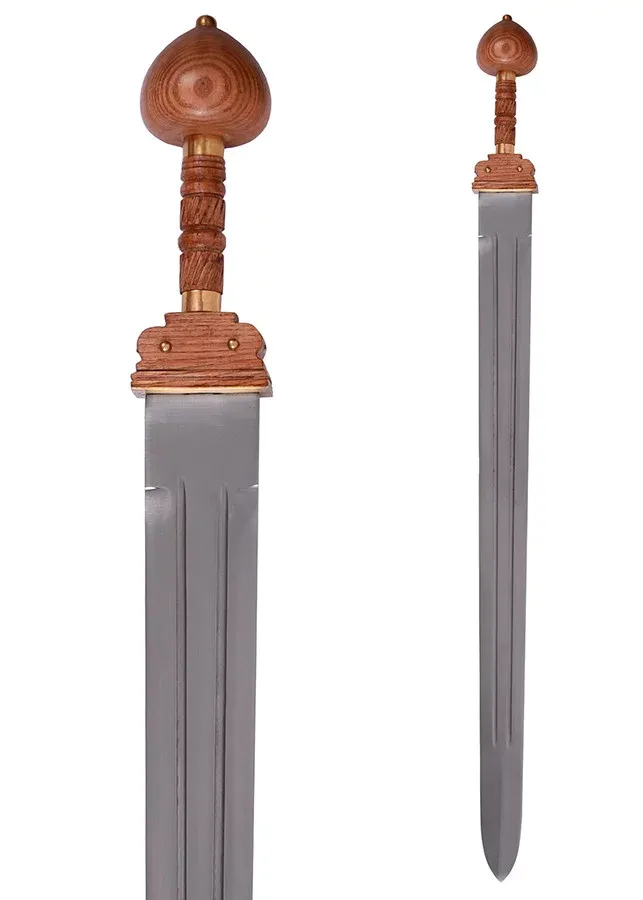
Roman Infantry
- From the 2nd century AD, the spatha progressively replaced the gladius.
- It allowed soldiers to engage at greater distances, reflecting tactical changes in military operations.
Period of Dominance and Use in the Middle Ages
The spatha was not only a central weapon during the Roman Empire, but its influence extended beyond its fall.
Dominance in Ancient Rome
- From the 4th century AD, the spatha came to symbolize Roman military power.
- It spread throughout the Empire, being indispensable in Roman artillery.
Continuity in the Middle Ages
After the collapse of the Roman Empire, the spatha continued in use, standing out in the warrior culture of the Vikings between the years 800 and 1100. It is considered an evolutionary link between Celtic and medieval swords.
Characteristics and Use in the Middle Ages
- It measured between 75 and 100 centimeters, with a wider and heavier blade than its predecessor, the gladius.
- It adapted to the diverse tactics of the Germanic peoples.
The influence of the spatha on the history of bladed weapons reveals not only a change in military tactics over time but also the continuous refinement in the art of forging. Its contributions to the development of medieval swords demonstrated its durability and adaptability on the battlefield over the centuries.
The scimitar is recognized for its curved shape and its fundamental role in the military and cultural history of the Middle East and other regions of the Islamic world. This iconic weapon was not only instrumental in combat but has also left its mark in the cultural and symbolic arena, representing the skill and power of the warriors who wielded it.
Origin and Etymology
The term "scimitar" has an interesting etymological origin that reflects its multicultural history. It comes from the Italian "scimitarra," which is derived from the Persian "shamshir," meaning "Lion's Claw." This name alludes to its elegant and curved shape, resembling a lion's claw. Additionally, in different cultures, the scimitar has variations such as "saif" in Arabic, "kılıç" in Ottoman, "talwar" in Indian, and "nimcha" in Maghreb. This array of names highlights the spread and adaptation of the scimitar across various cultures.
Distinctive Features
- Curved Blade and Single Edge: The scimitar is recognized for its curved blade, which allows it to cut without getting stuck in the target—an essential feature when used in mounted battles.
- Protective Grip: Its metallic grip provides excellent defense, allowing the user to maneuver skillfully and protect themselves in direct confrontations.
These characteristics have secured its place as one of the most effective and popular melee weapons in the historical wars of the Middle East.
History of the Scimitar
The lineage of the scimitar dates back to the 8th century, being adopted by Arabs, Turks, and Central Asian troops. Its popularity surged in Persia in the early 16th century, subsequently spreading to Turkey (as kılıç), the Mughal Empire (talwar), and Morocco (nimcha). The scimitar is thus not only a military artifact but also a cultural and symbolic emblem in these regions.
Use and Symbolism
The scimitar was the preferred choice of cavalry due to its lightness and effectiveness in movement. It served not only military functions, but also held profound cultural significance. In Arab culture, it is frequently used in metaphors and is considered a symbol of Islamic military power, even referred to as "the weapon of Allah."
Echoes in History
Historical figures such as Saladin, the sultan who resisted the Crusades, are legendary tied to the scimitar. So notable is its history that it is said Saladin could effortlessly cut through a silk cushion, impressing his adversaries. This legend underscores the respect and historical notoriety of the scimitar in combat.
Influence in Europe
During the Middle Ages, the scimitar not only symbolized Islam in Europe but was also used in the Iberian Peninsula during Arab domination. The word "cimitarra" in Spanish has roots in Hispano-Arabic, with cultural references such as "sinsama tárya," meaning 'Gypsy sword.'
In conclusion, the scimitar is a testament to the rich interaction between diverse cultures throughout history. Its efficient design and cultural legacy have solidified it not only as a tool of war but as a lasting symbol of the ingenuity and influence of the Islamic world on the global stage.
During the Renaissance and the Modern Age, two emblematic weapons held an important place in both clothing and personal defense: the rapier and the small sword. Both weapons shared similarities and differences in design, use, and evolution over the centuries. Below, we will analyze these characteristics in detail and their cultural impact.
Similarities between the Rapier and the Small Sword
- Civilian Weapons: Both swords were mainly used for personal defense and dueling, rather than for military combat.
- Design Inspired by Military Swords: Although their primary environment was civilian, their overall shape was inspired by military weapons of the time, adjusted to be lighter and more elegant.
- Innovations in Handles: The evolution of the handles was crucial, focusing on protecting the hand through significant innovations.
- Common Handles: Both in civilian and military contexts, handles with identical designs have been found.
- Similar Accessories and Decorations: Both swords utilized accessories such as belts, scabbards, and similar decorations, which also contributed to their historical classification.
- Usage Treatises: The handling styles and ornamentation of both weapons were documented in historical treatises, highlighting their relevance during the period.
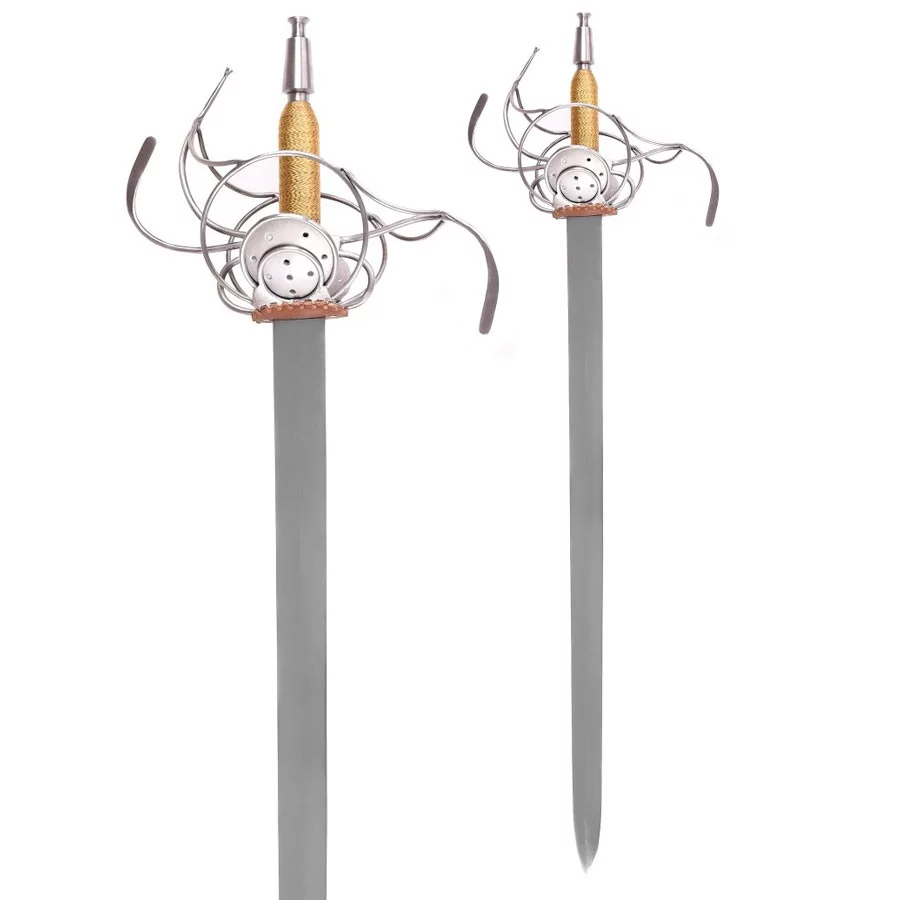
Key Differences between the Two Weapons
- Appearance in History: The rapier emerged around the mid-15th century as an integral part of noble fashion, while the small sword took its place around the mid-17th century.
- Variety of Handles: The rapier was characterized by a wide variety of handle types, unlike the small sword, which had fewer variations, starting around 1654.
- Specific Design of the Small Sword: Unlike the rapier, the small sword featured side rings or shells separate from the main handle, with the blade passing through an opening between them.
- Regionalization of the Small Sword: In the 17th century, small swords began to develop regional characteristics in Spain and Italy, a distinction not observed in the same manner in rapiers.
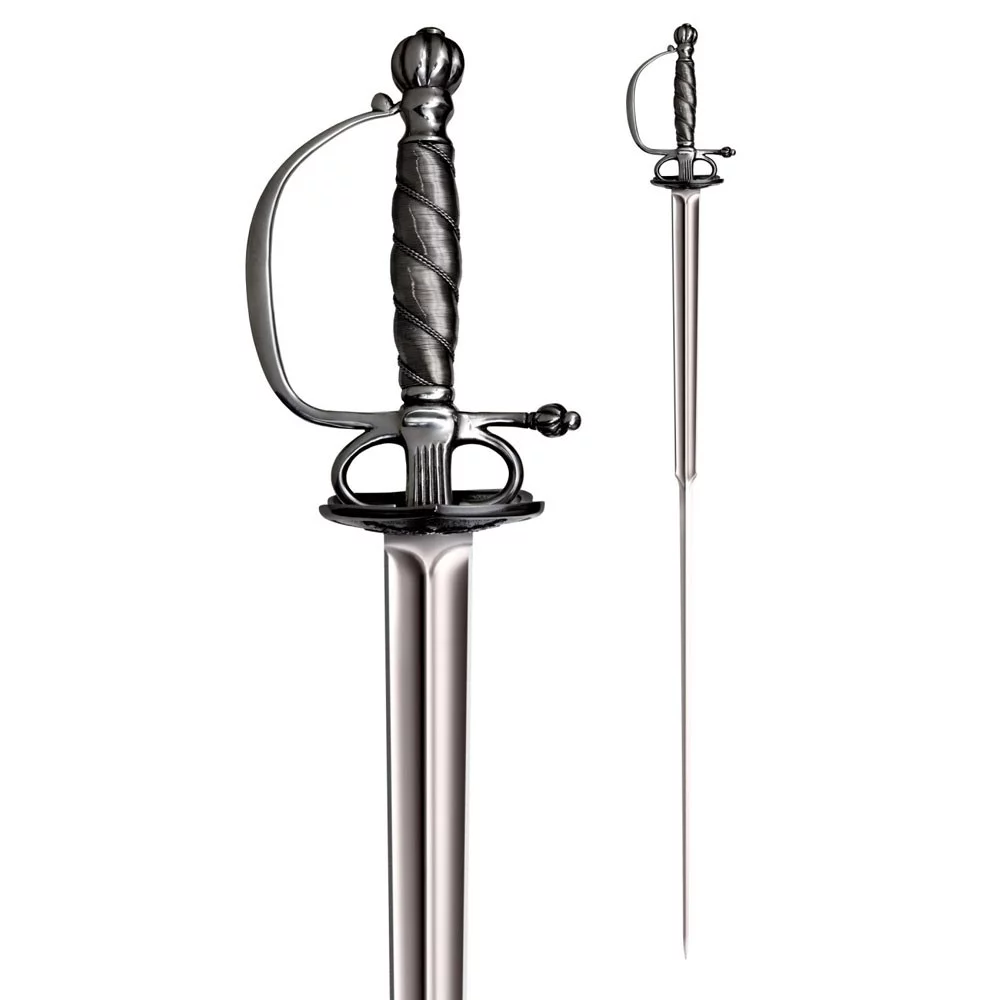
Technical Characteristics
Rapier
- Blade Length: Ranging from 90 to 130 cm to allow dynamic fencing.
- Weight: Approximately 1 kg, providing lightness for quick handling.
- Balance Point: Located between 8 and 15 cm from the handle, improving stability.
- One-Handed Use: Favoring its combination with other defensive elements, such as bucklers or cloaks.
Small Sword
- Blade Length: From 1.09 to 1.14 m, designed to be effective in thrusts.
- Weight: Approximately 750 g, thanks to its triangular section, which also lent it rigidity.
- Use in Fencing: Ideal for dueling, with great skill for dodging and attacking, although unsuitable for slashing.
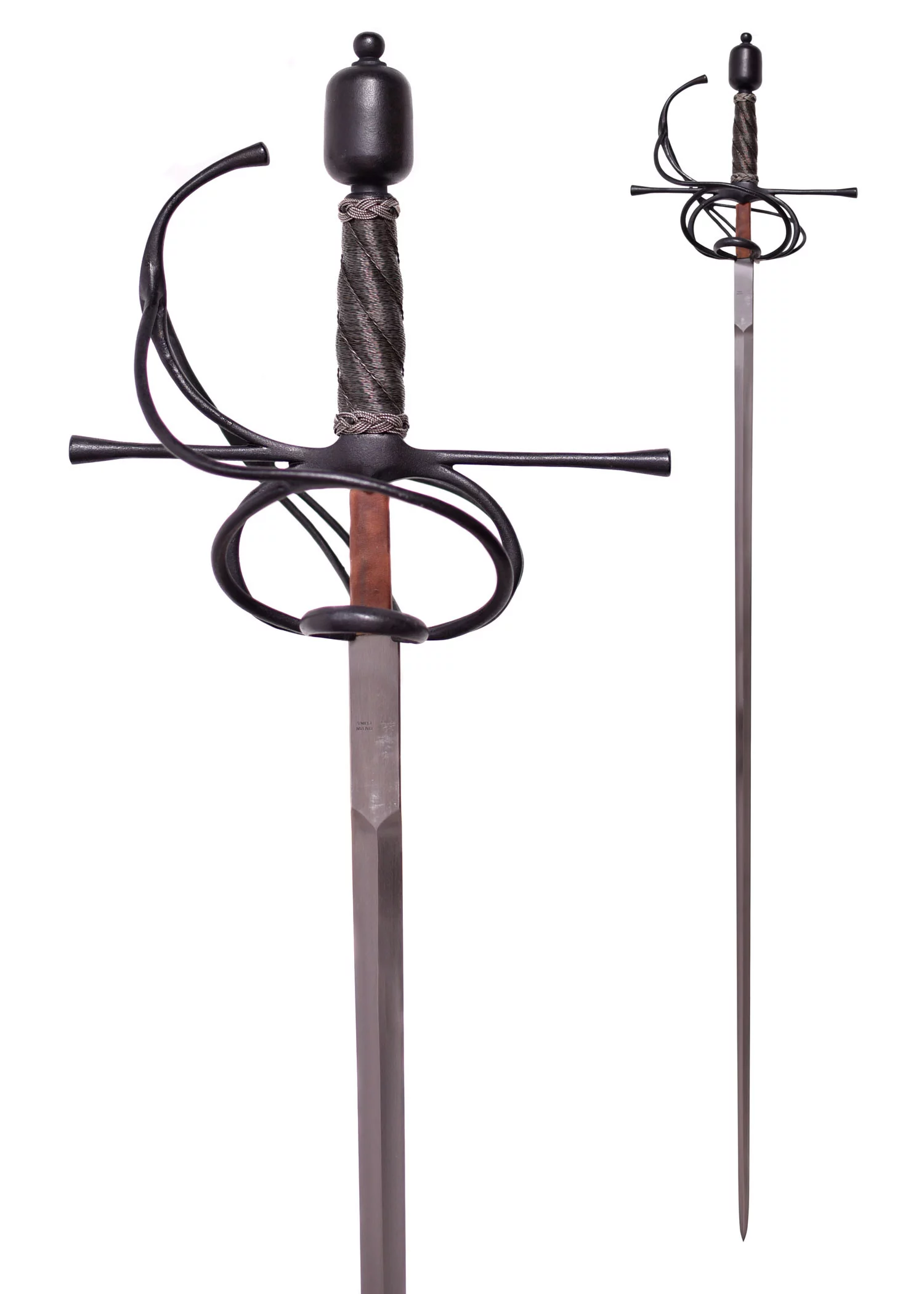
Cultural Impact
Rapier
- Fashion and Status: It was synonymous with power, refinement, and a distinctive symbol of the upper and middle classes.
- Utility in Duels: It integrated into daily fashion and was extensively used for personal defense.
Small Sword
- Fencing and Evolution: It is the predecessor of the modern sport fencing sword, with relevance in the development of the foil.
- Presence in Duels: Beyond its stylistic role, it was exceptionally effective in hand-to-hand combat.
These weapons not only served as tools of defense and fashion elements but also left a lasting mark on the cultural history of their respective eras, reflecting the evolution of fencing and the change in social and combat norms.
The center of gravity (CG) of a bladed weapon is a crucial concept for understanding its handling and efficient use in combat. This term refers to the point at which the weights of the weapon are balanced, directly influencing its balance, stability, and, therefore, its performance when used or thrown.
Importance of the Center of Gravity in Bladed Weapons
The balance of a bladed weapon, generated by its center of gravity, determines how it will behave when handled or thrown. A proper balance not only facilitates maneuverability but also confers precision and stability. Understanding this concept allows users, whether warriors or craftsmen, to optimize the design and use of weapons to maximize their effectiveness.
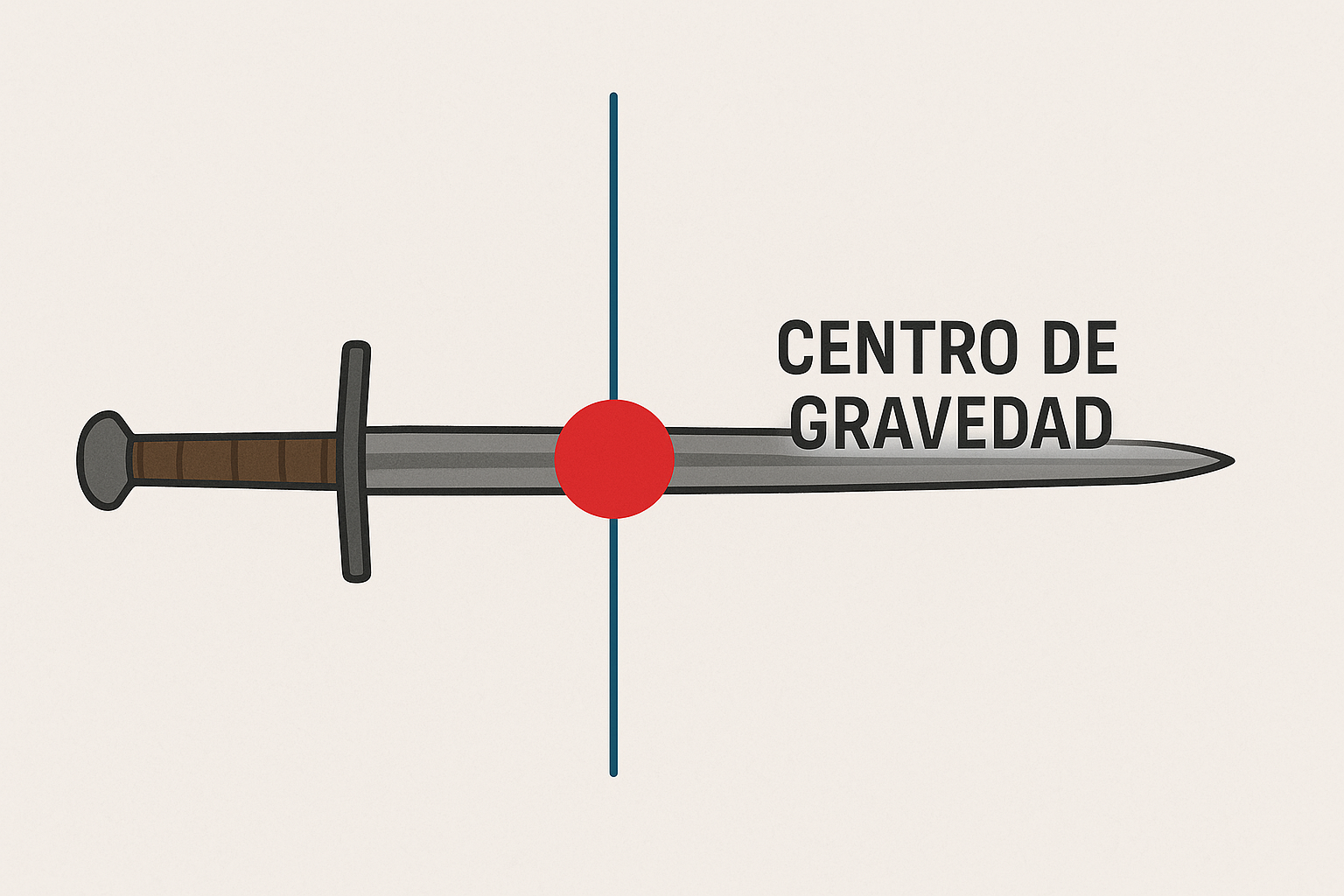
Center of Mass and Balance of Swords and Knives
The center of mass (CM) directly influences the balance of weapons such as swords and knives. The CM, located near the handle, makes the weapon easier to manipulate for striking. If the CM is close to the blade, the balance varies, making it more effective for cuts and slashes, but potentially hindering other types of strikes.
The Challenge of a Poorly Balanced Sword
Manipulating a sword with poor balance can result in ineffective use. The uncertain behavior when striking and the greater physical demand on the user can lead to quick exhaustion and inaccurate blows, endangering both the user and their attempts to execute precise strikes.
Comparison of Swords According to Center of Gravity
- Centered towards the blade: Ideal for cuts and slashes, as its balance allows for quick and precise movements.
- Centered towards the handle: Offers better control in sword strikes, allowing for greater precision and handling.
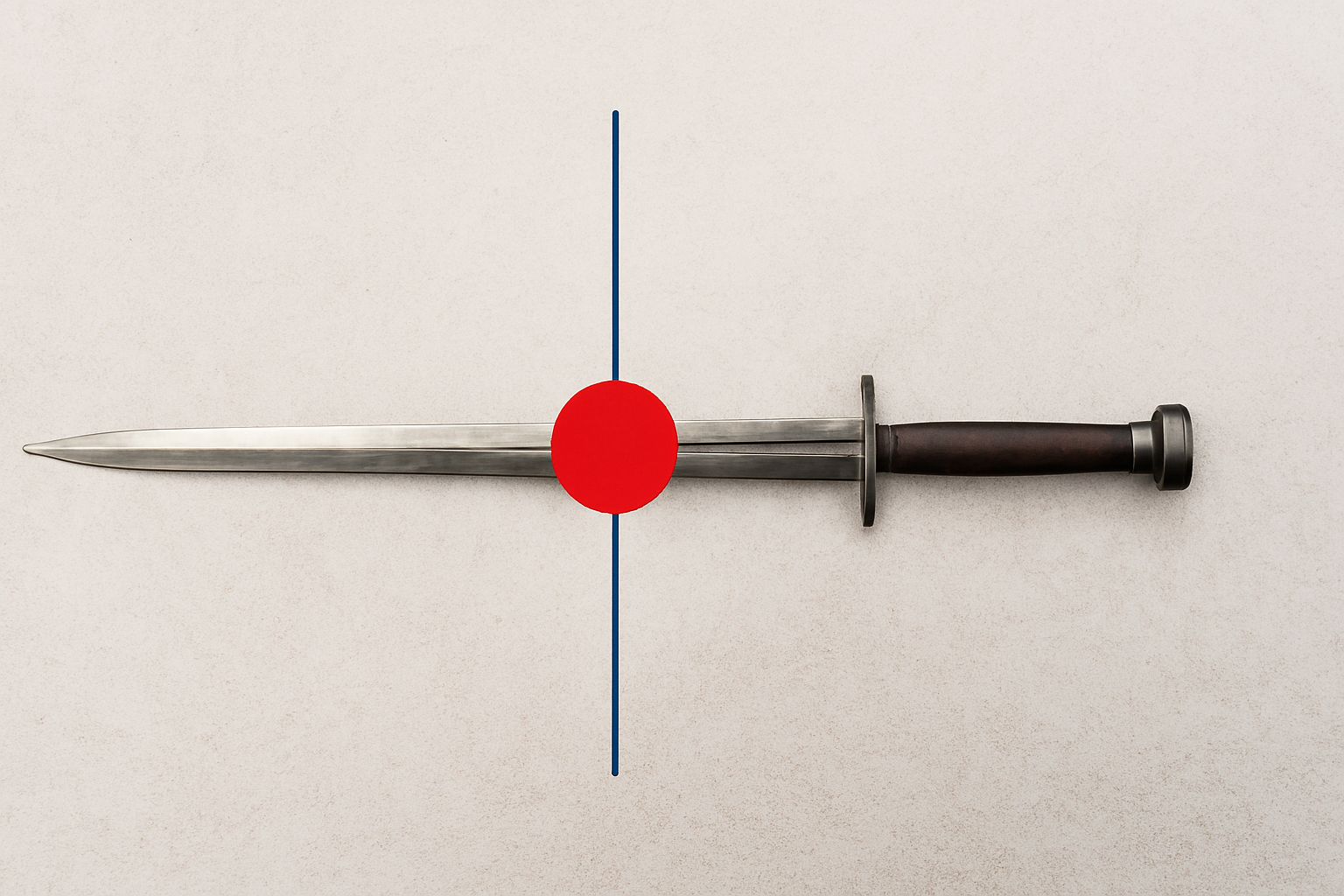
Influence of Centering on Knife Throwing
Throwing a knife requires a well-distributed CG to ensure stable and accurate flight. A CG close to the center of the knife is ideal, as it allows for a straight and controlled throw. If the CG is improperly distributed, the knife may deviate during flight, negatively affecting accuracy.
Adjustability of the Center of Gravity in Handmade Weapons
Handmade bladed weapons allow customization of the CG. By selecting materials and adjusting the weight distribution, craftsmen can design bespoke weapons that meet the specific needs of the user, optimizing the balance and control of the weapon for specific combat situations.
Bladed Weapons and the Need for a Well-Defined Center of Gravity
- Throwing knives: A centered CG improves flight accuracy, crucial for hitting the target.
- Swords and Sabres: A well-placed CG maximizes effectiveness in cuts, ensuring effective strikes.
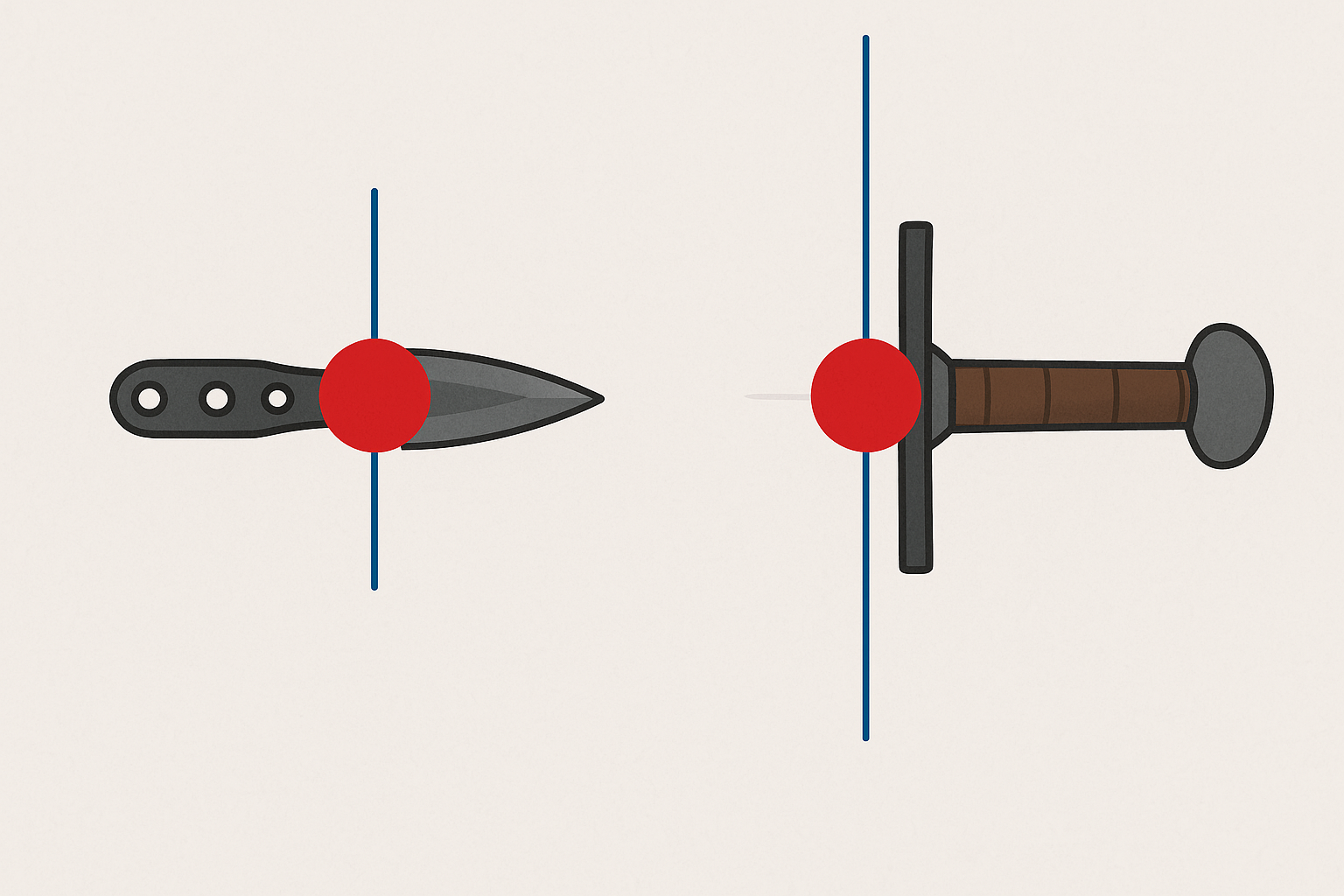
Understanding the CG in bladed weapons is essential not only for manufacturers and craftsmen but also for users, as a deep knowledge enables them to make the most of the weapon’s capabilities in combat. Customized adjustments are an added advantage of handmade weapons.
The Oakeshott typology represents an innovative classification system developed by Ewart Oakeshott, which has become a reference for the study of medieval European swords. This method, widely used by archaeologists and historians, allows for the categorization of swords mainly based on their morphological characteristics, considering both the blade and other components.
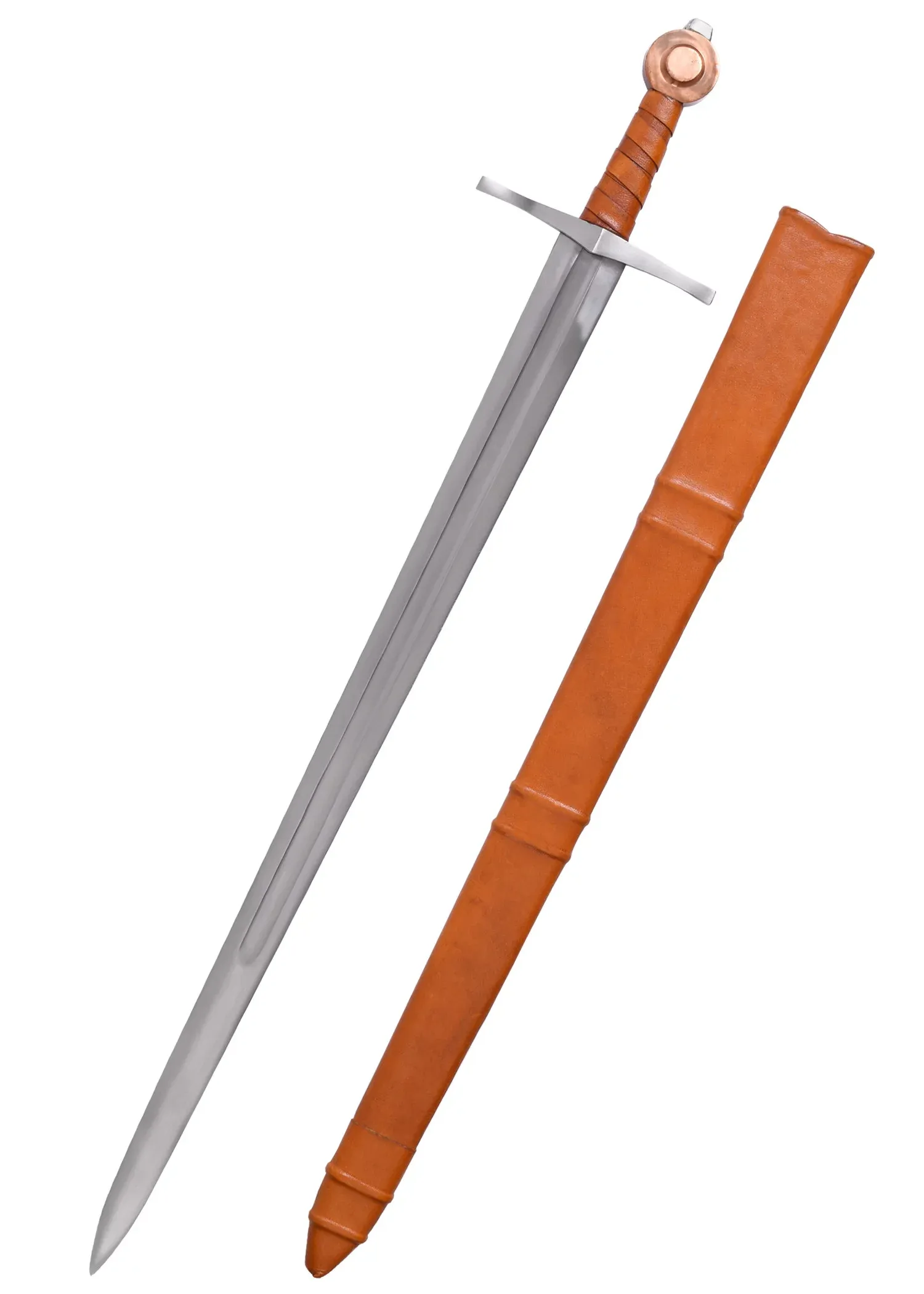
Origin and Objectives of the System
In the early 20th century, figures like Jan Petersen had begun to establish typologies for Viking swords, focusing mainly on the hilt and blade. However, it was Ewart Oakeshott who expanded this approach by integrating all parts of the sword into his classification. His system considers elements such as profile, cross-section, length, grooves, tip, hilt, and the sword's purpose.
The main objectives of the Oakeshott typology include:
- Identifying and dating medieval swords more accurately, primarily from the 11th to the 16th centuries.
- Providing a study tool for professionals and enthusiasts interested in historical fencing and medieval weaponry.
- Offering a comprehensive approach that goes beyond the traditional parameters of the time.
How the Oakeshott Typology Works
The Oakeshott typology is based on Petersen's Viking classification, merging late Viking and early medieval swords. This system groups swords into main types, numbered from X to XXII. Additionally, it introduces variants by adding letters to the main types, as in the case of XVIIIa or XXa. The typology is defined by:
- Blade profile and cross-section: determines whether the sword is better suited for cutting or thrusting.
- Length and width of the blade: general dimensions that characterize the sword.
- Grooves: slots that reinforce the structure and reduce weight.
- Shape and sharpness of the tip: indicates whether the sword was designed to pierce armor or for cutting.
- Hilt and guard: secondary aspects, but relevant for dating and classifying swords.
The complexity and richness of this system make it adaptable, allowing scholars to efficiently classify swords from that dynamic period.
Importance and Applications
The Oakeshott typology has solidified its role as an essential tool in the research of medieval swords, achieving:
- Precise dating of historical finds.
- Understanding technological and military evolution in Europe from swords optimized for cutting to those capable of piercing armor.
- Offering an international standard used and updated by specialists.
Oakeshott emphasized that his system is a flexible guide, recognizing the inherent diversity of medieval weaponry, which allows for a more realistic and tailored analysis of swords.
Connection with Viking Swords
Although the typology is primarily oriented towards medieval swords, it also encompasses the transition from Viking swords, with type X serving as a link between the two periods. This facilitates tracking the evolution of weaponry from the Viking age to the medieval period.
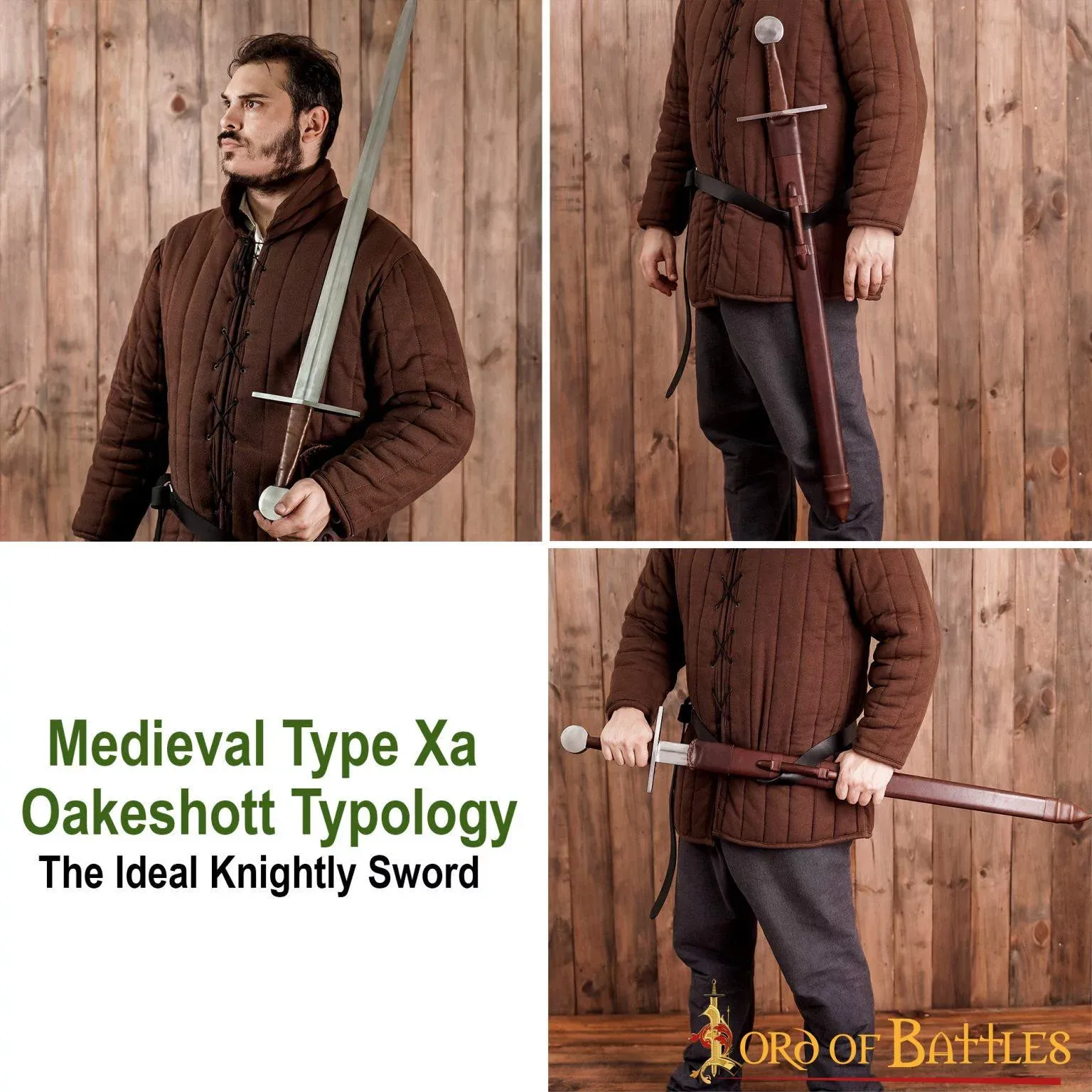
Main Characteristics Considered
- Blade profile
- Cross-section
- Blade length
- Number and shape of grooves
- Tip shape
- Type of hilt and pommel
- Average weight
- Main function (cutting or thrusting)
- Era of use
The Oakeshott typology remains a key resource for the study and understanding of medieval European weaponry, integrating a comprehensive approach that surpasses the limitations of previous classifications.
Broadswords, historically known as "medieval broadswords," stand out as iconic weapons of medieval Europe. In particular, they played a significant role in France, serving as essential tools for knights and warriors of the time. Developed from the Roman spatha, these swords experienced significant evolution over the centuries to meet the demands of combat and military strategies of their time.
What distinguishes broadswords?
Broadswords are notable for several characteristics that differentiated them and gave them an advantage in combat:
- Straight double-edged blade: This design allowed for both cutting and thrusting, facilitating their use in various forms of close combat.
- Length: They ranged from 100 to 120 cm in length, allowing for a balanced mix of reach and maneuverability.
- Weight: Their weight, between 1,200 and 2,000 grams, ensured formidable impact without being excessively heavy for prolonged use.
- Grip: Generally designed for one-handed use, some variants allowed for the use of one and a half hands, providing additional tactical flexibility.
- Guard and pommel: A straight guard protected the user's hand, while the pommel helped balance the weight of the blade.
- Blade profile: They often featured fullers to lighten the weight without compromising structural integrity.
- Manufacturing: Forged using advanced medieval metallurgy techniques, they combined optimal hardness and flexibility.
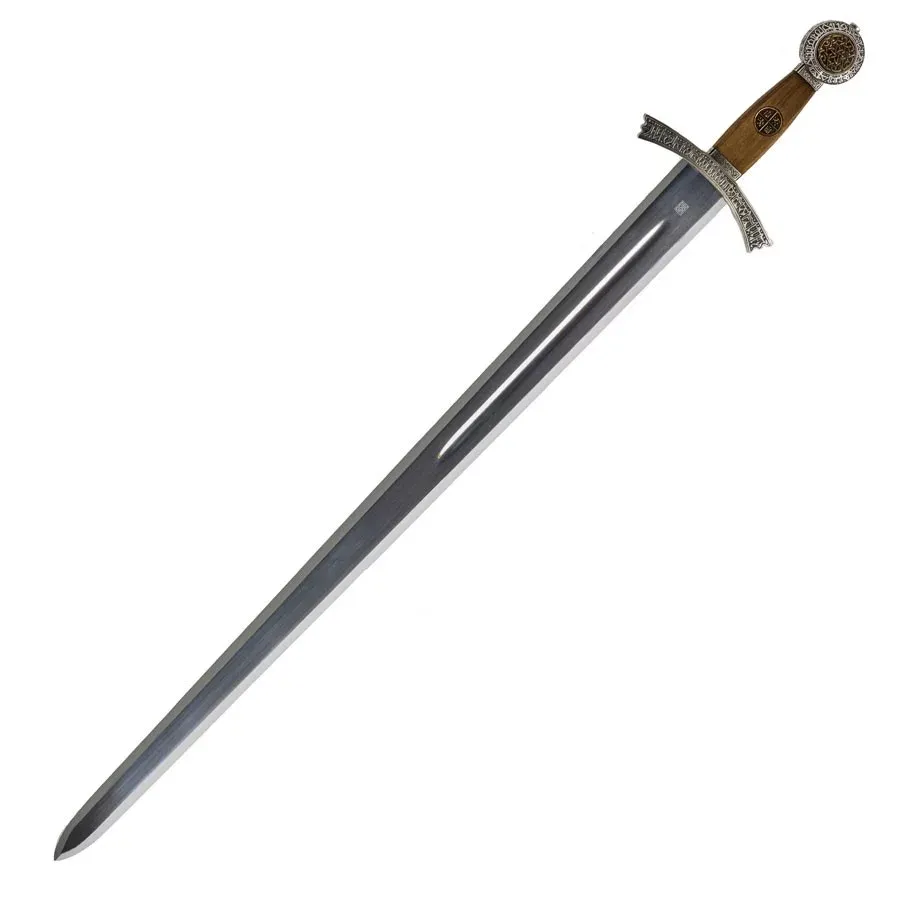
Historical and social influence
The rise of broadswords coincided with the development of cavalry in the Middle Ages (5th to 16th centuries). For knights and the nobility, owning one of these swords was a symbol of status and martial capability. Over time, broadswords evolved alongside armor and military tactics, becoming weapons that not only symbolized prestige but also effectiveness in combat. In particular, the French cavalry widely adopted these swords, leading to the standardization with models such as the Norman sword and the "bastard" sword or half-hand sword. These adaptations modified both the grip and the reach of the blade to meet the changing demands of warfare.
Strategic advantages of broadswords
- Balance between power and control: Thanks to a balance point near the guard, broadswords were manageable for making quick and precise attacks.
- Durability: The materials and forging techniques provided great resistance to wear and impact, prolonging their lifespan in battle.
- Adaptability: Designed to be effective against various types of armor and enemies, they could be used for both cutting and thrusting.
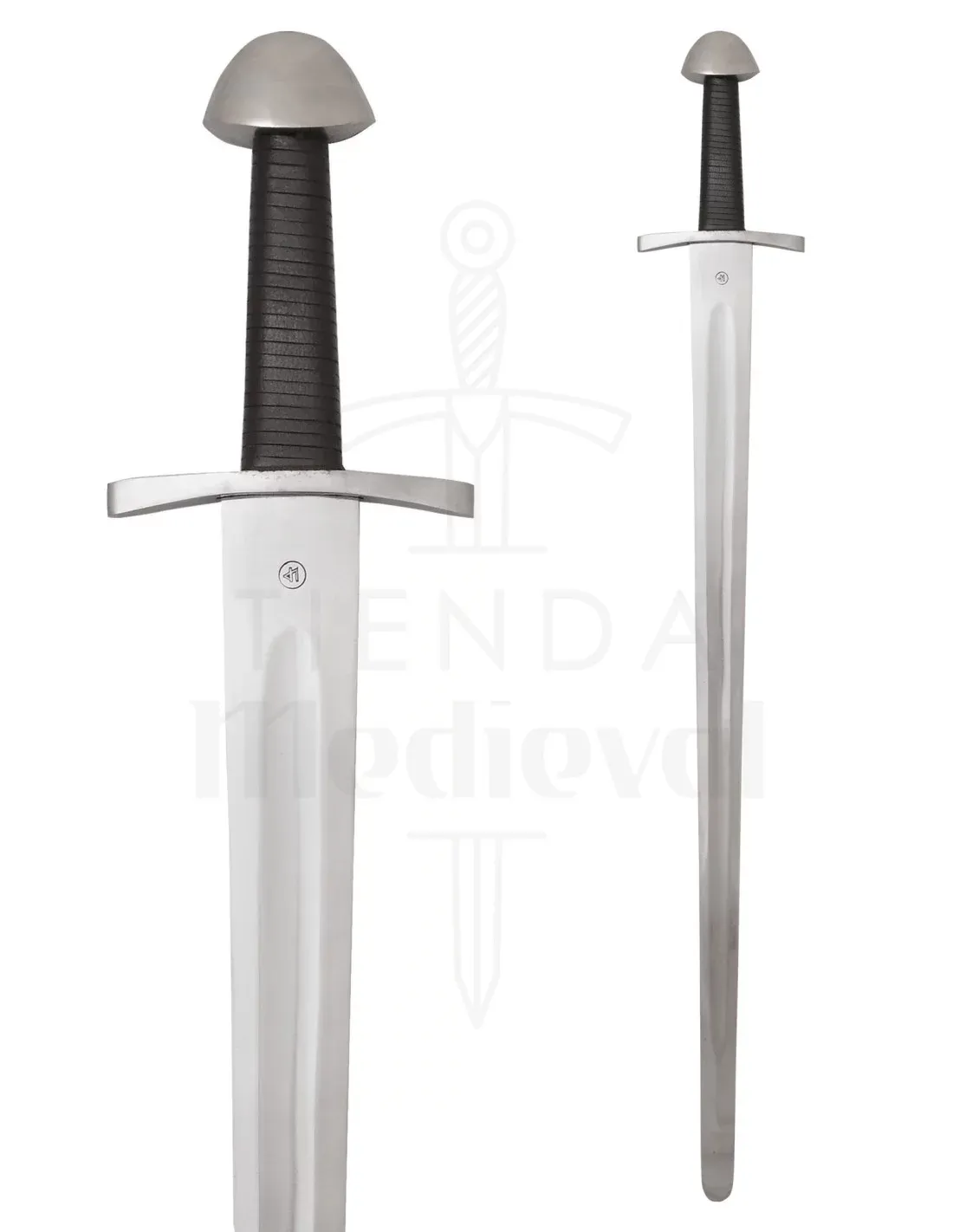
Legacy and evolution throughout history
Broadswords provided the foundation for the development of other European medieval weapons, such as the longsword and the rapier, continuing their influence even into the Renaissance with lighter swords. Although the prominence of these swords declined over time, for much of the Middle Ages, they represented more than just a simple instrument of war; they symbolized prestige, valor, and nobility. Today, broadswords and their replicas are valued by collectors and historical reenactors, preserving a vital part of Europe's cultural and military heritage.
The Viking Sword Gram is one of the most iconic and enigmatic weapons of Norse mythology. Its name, which translates to "anger," highlights its significance and symbolism within Scandinavian legends. Gram is famous for being the weapon wielded by the hero Sigurd (also known as Siegfried) to defeat the fierce dragon Fafnir, one of the most legendary feats in Viking folklore.
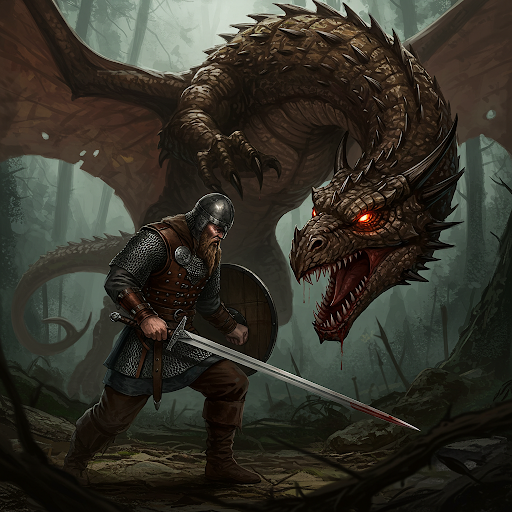
Origin and Legend of Gram
The story of Gram is narrated in the Saga of the Volsungs, a 13th-century Icelandic epic that describes the exploits of the Volsung clan. According to legend, the sword was forged by the mythical smith Völundr and later given by Odin to Sigmund, Sigurd's father. During a feast, Odin drove Gram into the trunk of a tree, declaring that only the one who could pull it out would be its rightful bearer. Sigmund was the only one able to do so, showcasing his heroic destiny.
Throughout several battles, Sigmund used Gram until one day, during a confrontation with Odin himself, the sword broke. The fragments of Gram were kept by Sigmund's wife and eventually given to their son, Sigurd, as part of his destiny to become a great warrior.
Gram in Sigurd's Feat Against Fafnir
Guided by Regin, a skilled smith, Sigurd was able to reforged Gram. The sword then acquired extraordinary power, enough to split an anvil in half. With his restored weapon, Sigurd faced the dragon Fafnir, bringing to life one of the most emblematic episodes of Norse mythology by defeating the monster and reclaiming a colossal treasure that it guarded.
.png)
Symbolic Characteristics and Description of Gram
Although legends provide few physical descriptions of Gram, it is often depicted as a sword adorned with gold and dazzling to the eye. Some researchers suggest that the blade might be decorated with dragon motifs, alluding to its connection with Fafnir.
Beyond its appearance, Gram symbolizes divine power and heroic destiny. Like other mythical weapons such as Excalibur, its power can only be unleashed by a true hero destined to change the course of history, in deep connection with the desires of the gods.
Gram in Other Traditions and Popular Culture
The influence of Gram extends beyond Norse mythology. In the Nibelungenlied, another German epic, it is known as "Balmung," while in Richard Wagner's tetralogy The Ring of the Nibelung, it is called "Notung." Regardless of the name, all insist on the same theme: an extraordinary weapon capable of changing destiny, accessible only to the true hero.
In contemporary culture, Gram continues to be a symbol of legendary power. It has been depicted in video games, literature, and various artistic expressions, keeping alive the fascination for such tales.
Gram, more than just a sword, is a mythological symbol that embodies power, destiny, and legitimacy. Although these stories are entirely wrapped in fables and legends, the legacy of Gram continues to captivate current generations due to its deep symbolic charge and the universality of its narratives.
The Sword of Saint George has a dual meaning; it refers both to the legendary sword of the Christian saint Saint George and to a popular ornamental plant. Both elements are imbued with symbolism and unique characteristics that make them relevant both in history and in modern culture.
The Sword of Saint George: Legendary Replica
The sword associated with Saint George is an exact replica of the one the saint used in the legend to defeat the dragon and rescue a princess. This sword is more than just a simple reproduction; it is a work of art that carries the history and symbolism of the triumph of good over evil.
- Design and Materials: Made of stainless steel with deep engravings that give it a unique appearance.
- Handle: Adorned with blue velvet, adds a sophisticated and elegant touch.
- Dimensions: With a length of 120 centimeters, it boasts a formidable presence.
- Origin: The replicas are usually made in Toledo, Spain, a historic city known for its sword-making.
- Meaning: A symbol of courage, reflecting how Saint George became the patron of several countries and cities.
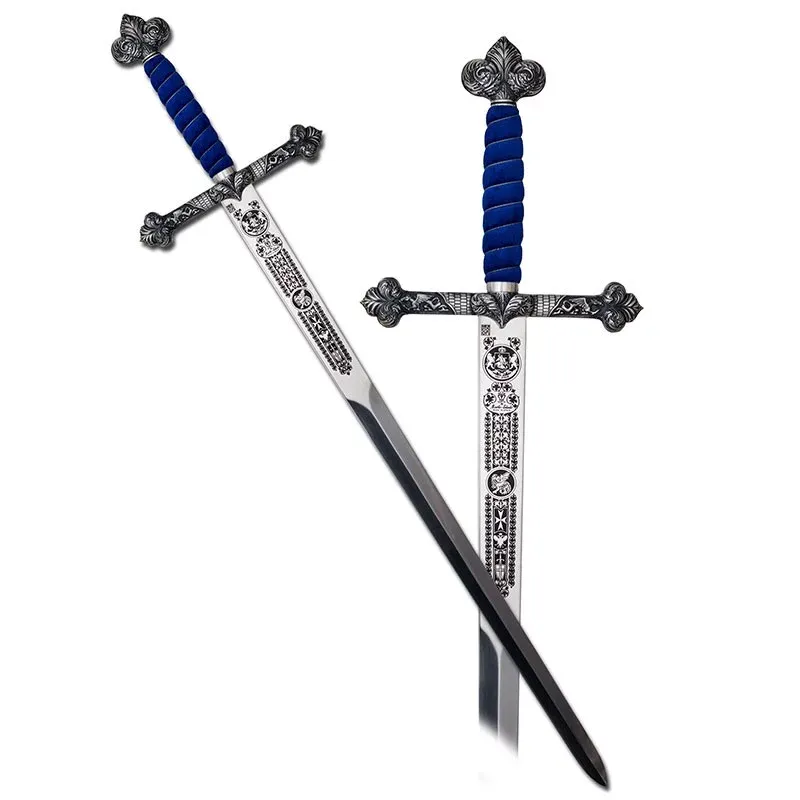
History of Saint George
Saint George was a Roman soldier venerated for his bravery and Christian devotion. After confessing to being Christian during the persecutions ordered by Emperor Diocletian, he was martyred and ultimately canonized. The legend of "Saint George and the dragon," popular since the 9th century, is perhaps one of the stories that cemented his figure as a defender of good against evil.
The Sword of Saint George: Plant (Sansevieria trifasciata)
On the other hand, the "Sword of Saint George" is also the common nickname for the Sansevieria trifasciata, an ornamental plant known for its long sword-like leaves.
- Botanical Description: A perennial, succulent, and semi-succulent plant with long and flexible leaves, reaching up to one meter in height.
- Differences with "Mother-in-Law's Tongue": Often compared to this, it has simpler, cylindrical leaves.
- Properties and Benefits: Known for its resilience and ability to purify the air.
- Care: It is low maintenance, ideal for indoor environments with little watering.
.png)
Summary Comparison
| Sword of Saint George (historical sword) | Sword of Saint George (plant) |
|---|---|
|
Replica of a legendary weapon Stainless steel blade with engravings Blue velvet handle 120 cm long Made in Toledo Symbol of courage and protection |
Perennial and resilient plant Green, long, and firm leaves, up to 1 m Shape resembles a sword Filters air and protects according to Feng Shui Easy to care for Associated with positive energy and protection |
Both interpretations of the Sword of Saint George share a strong symbolism of protection and strength. Both the sword and the plant represent stories of resilience, whether in a decorative, spiritual, or natural context, finding their place in popular culture and homes as emblems of good luck and guardians of morality and well-being.
Heat treatment is a fundamental process used to modify the mechanical properties of steel through controlled heating. This method is especially crucial in the manufacture of swords and cutting tools, as it allows for the improvement of the metal's internal structure. The main objectives include optimizing hardness, strength, toughness, and flexibility of the steel. By carefully controlling the temperature and the heating and cooling times, parts capable of withstanding impacts and avoiding fractures or deformations are obtained.
Importance of Heat Treatment in Sword Forging
Heat treatment is vital after selecting good steel and performing forging, as it defines the final quality of a sword blade. Without this process, the blades could result in being soft, brittle, or having inadequate internal structures. Heat treatment uniformly distributes carbon atoms in the steel, achieving a balance between hardness and toughness to maintain the edge and resist impacts.
Main Stages of Heat Treatment
- Annealing: In this stage, the blade is heated to a specific temperature and then allowed to cool slowly. This reduces internal stresses, softens the material, and facilitates subsequent shaping and polishing.
- Normalizing: The steel is heated to a critical temperature and cooled in air. This process refines the grain size internally, reducing the risk of fractures and increasing steel homogeneity.
- Hardening: This is the steel's own hardening process, involving heating it to high temperatures (between 800 and 900 °C) to achieve an austenitic structure, followed by rapid cooling in oil, water, or brine.
- Tempering: After hardening, the blade is very hard but brittle. Tempering reheats the piece to a lower temperature, reducing brittleness and increasing toughness, providing a balance between hardness and impact resistance.
.png)
Special Technique: Differential Heat Treatment
Differential heat treatment is used in single-edged swords, especially in Japanese tradition. It involves coating the blade with clay before heating. During cooling, the areas with less clay (the edge) are hardened more than the covered parts, which remain soft and flexible. This results in an extremely hard edge and a flexible spine, essential for avoiding breaks.

Relevance of Heat Treatment for a Functional Sword
A combat sword requires proper heat treatment to ensure a balance in hardness, measured between 48 and 52 on the Rockwell C scale (HRc). This balance is crucial to prevent the blade from breaking under tension. If the heat treatment is incorrect, the quality of the blade will be compromised regardless of the quality of its forging or manufacturing methods. Thus, heat treatment is both an art and a science, essential for transforming soft, unstable steel into a resilient and effective blade.
The Mameluke saber stands out as one of the most iconic and recognizable weapons in military history, especially due to its close association with the Mamelukes of Egypt and its adoption by Napoleon’s Imperial Guard. This weapon is distinguished not only by its design and combat effectiveness but also by its symbolic value as an emblem of authority and prestige.
Characteristics of the Mameluke Saber
The Mameluke saber is primarily characterized by its extremely curved blade, which can reach nearly 180 degrees of curvature. This design is especially suited for delivering fast and effective cuts, a crucial feature in mounted combat, as it allows superior sliding and power during an attack.

Additionally, the saber features an oriental-style hilt with grips crafted from noble materials such as wood or ebony, decorated with brass or bronze details, and often adorned with floral or geometric motifs inspired by Islamic and Persian art. Historically, some models were made with Damascus steel, known for its strength and beauty, and included gold inlays and imperial emblems.
The scabbard was traditionally made of leather, reinforced with metal elements, facilitating its carriage on cavalry uniforms. This type of side attachment allowed soldiers quick access to the weapon during battles.
Origin and Evolution
The Mameluke saber has its roots in the Persian shamshir, a design featuring a “blade curved like a tiger’s claw” originating from the Islamic and Persian world of the 16th century. The steel used, known as wootz, was imported from India to be forged in Damascus and other Eastern artisan centers.

This type of saber offered a unique combination of strength, flexibility, and cutting ability. It is said they could bend up to 90° without breaking, making them ideal for effective and durable combat. However, their high carbon content, while granting an extremely sharp edge, often made them more susceptible to damage in direct blade-to-blade confrontations. For this reason, the Mamelukes preferred to avoid such direct clashes and instead capitalize on agility from horseback.
Influence in Europe and America
The presence of Mameluke sabers in Europe became notable after Napoleon’s campaign in Egypt. They became a symbol of distinction among cavalry officers, especially in the French Imperial Guard. Their use later expanded to British military units and the U.S. Marine Corps, where they remain part of the ceremonial uniform to this day.
Symbolic Value and Historical Use
The Mameluke saber is valued not only for its functionality but has also acquired a deep symbolic meaning, associated with prestige, leadership, and a connection to heroic traditions both Eastern and Napoleonic. Historical figures such as General San Martín have owned sabers of this type, appreciated not only for their technical excellence but also for the historical and cultural significance they carry.
This saber is an extraordinary example of how a distinctive design can have a lasting impact not only on military effectiveness but also on the cultural symbolism of the world’s military elites.
















